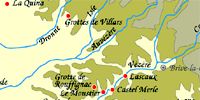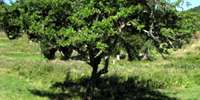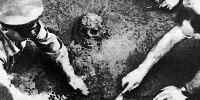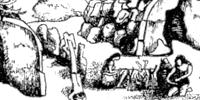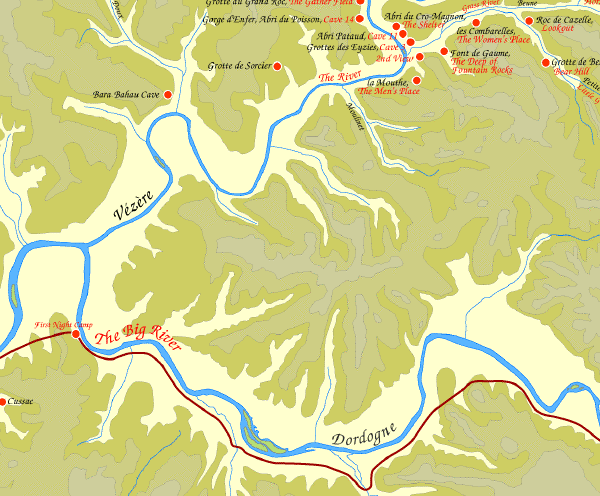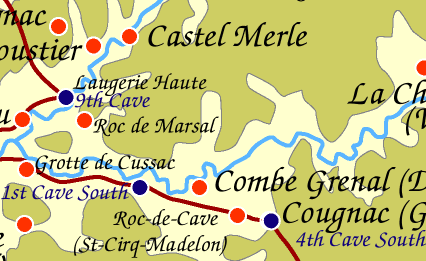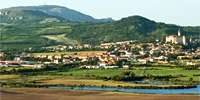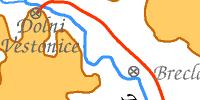Back to Don's Maps
Site Map
This page provides access to all the pages on my site. Most searches for subjects covered in Don's Maps can be accomplished by searching on this page for the subject you are after, using your browser's search bar.
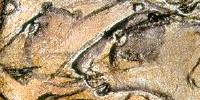
Index of caves and rock shelters with wall paintings and engravings
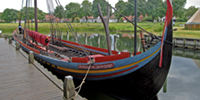 We spent 17 days cycling from Amsterdam to Copenhagen in 2014. It was a great trip, with the highlight being the Viking ships Museum of Roskilde.
We spent 17 days cycling from Amsterdam to Copenhagen in 2014. It was a great trip, with the highlight being the Viking ships Museum of Roskilde.
Last updated Monday 08 July 2024
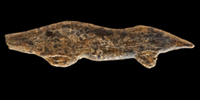 Another ivory animal sculpture has been found at Hohlefels, an otter. The small figure is around six cm long, and is almost 40 000 years old.
Another ivory animal sculpture has been found at Hohlefels, an otter. The small figure is around six cm long, and is almost 40 000 years old.
Last updated Saturday 27 July 2024
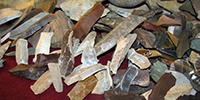 During the Upper Palaeolithic, ice age hunters used the slopes of the Danube valley repeatedly. Willendorf is one such site, and although justly famous for the Venus of Willendorf, it is also an important Gravettian and Aurignacian site for the other artefacts found there.
During the Upper Palaeolithic, ice age hunters used the slopes of the Danube valley repeatedly. Willendorf is one such site, and although justly famous for the Venus of Willendorf, it is also an important Gravettian and Aurignacian site for the other artefacts found there.
Last updated Monday 26 December 2022
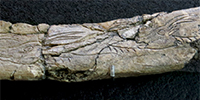 The small cave of Les Eyzies or la Grotte Richard opens above the village of Les Eyzies-de-Tayac, on the right shore of the Beune. Its prehistoric occupation is established in the Upper Magdalenian. It has been largely forgotten, but is an important site.
The small cave of Les Eyzies or la Grotte Richard opens above the village of Les Eyzies-de-Tayac, on the right shore of the Beune. Its prehistoric occupation is established in the Upper Magdalenian. It has been largely forgotten, but is an important site.
Last updated Tuesday 20 December 2022
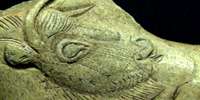 La Madeleine is a rock shelter located in the Vézère valley, in the Dordogne, France. In 1926 the skeleton of a three year old child was discovered, with exquisite shell jewellery, dating from the end of the Magdalenian period. It is a treasure house of art and knowledge about the people of the Magdalenian. Several historic photographs, as well as modern ones of the gisement have been added, as well as much more information on the tools.
La Madeleine is a rock shelter located in the Vézère valley, in the Dordogne, France. In 1926 the skeleton of a three year old child was discovered, with exquisite shell jewellery, dating from the end of the Magdalenian period. It is a treasure house of art and knowledge about the people of the Magdalenian. Several historic photographs, as well as modern ones of the gisement have been added, as well as much more information on the tools.
Last updated Thursday 12 December 2024
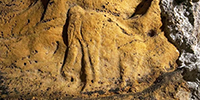 La Grande Grotte de Saint-Front is a little over a kilometre upstream from Domme, on the left bank of the Dordogne. Also known as La Grotte du Mammouth, it contains a number of engravings and sculptures, including a superb Mammoth on a high ceiling.
La Grande Grotte de Saint-Front is a little over a kilometre upstream from Domme, on the left bank of the Dordogne. Also known as La Grotte du Mammouth, it contains a number of engravings and sculptures, including a superb Mammoth on a high ceiling.
Last updated Sunday 13 August 2023
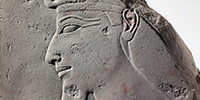 An account of the Battle of Megiddo (fought in the 15th century BC) between Egyptian forces under the command of Pharaoh Thutmose III and a large rebellious coalition of Canaanite vassal states led by the king of Kadesh. It is the first battle to have been recorded in what is accepted as relatively reliable detail.
An account of the Battle of Megiddo (fought in the 15th century BC) between Egyptian forces under the command of Pharaoh Thutmose III and a large rebellious coalition of Canaanite vassal states led by the king of Kadesh. It is the first battle to have been recorded in what is accepted as relatively reliable detail.
Last updated Thursday 12 September 2024
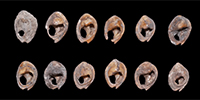 In Morocco, archaeologists have discovered what they claim to be the oldest jewellery ever found in the world. They are perforated shells that are up to 150 000 years old. The shells, which were believed to have been made into necklaces and bracelets, were found in the Bizmoune Cave near the coastal town of Essaouira.
In Morocco, archaeologists have discovered what they claim to be the oldest jewellery ever found in the world. They are perforated shells that are up to 150 000 years old. The shells, which were believed to have been made into necklaces and bracelets, were found in the Bizmoune Cave near the coastal town of Essaouira.
Last updated Tuesday 23 November 2021
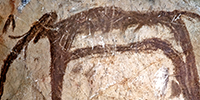 In 1940 at Baume-Latrone, or Latrone Cave, drawings from the Upper Palaeolithic were discovered in a deep network 240 metres from the entrance.
They have a unique style, and have been assigned to the Aurignacian. They have been dated to 37 464 BP (cal).
In 1940 at Baume-Latrone, or Latrone Cave, drawings from the Upper Palaeolithic were discovered in a deep network 240 metres from the entrance.
They have a unique style, and have been assigned to the Aurignacian. They have been dated to 37 464 BP (cal).
Last updated Monday 02 December 2024
 Inconsistencies in the EC books. Amy McDonald has found an inconsistency between the fifth and sixth books concerning Matigan, apprentice to Jondalar.
Inconsistencies in the EC books. Amy McDonald has found an inconsistency between the fifth and sixth books concerning Matigan, apprentice to Jondalar.
Last updated Sunday 04 May 2025
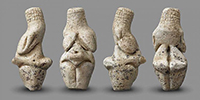 Another Palaeolithic Venus has been discovered in Renancourt, Amiens. The statuette is in good condition, carved in limestone/chalk, and is 40 mm high. It is estimated to be 23 000 years old, and is from the Gravettian. The breasts, buttocks and thighs are all of exaggerated volume, as is normal in this tradition.
Another Palaeolithic Venus has been discovered in Renancourt, Amiens. The statuette is in good condition, carved in limestone/chalk, and is 40 mm high. It is estimated to be 23 000 years old, and is from the Gravettian. The breasts, buttocks and thighs are all of exaggerated volume, as is normal in this tradition.
Last updated Thursday 24 June 2021
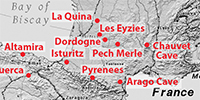 Hominin sites in Europe. This is a useful tool for forming an overall understanding of hominins from Europe, including Homo sapiens.
Hominin sites in Europe. This is a useful tool for forming an overall understanding of hominins from Europe, including Homo sapiens.
Last updated Friday 03 June 2022
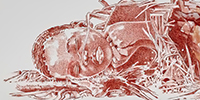 The Middle Stone Age grave of a three year old Homo sapiens child who lived 78 000 years ago has been found in a cave in Kenya. Researchers who studied the fragile, ancient remains described how its head appeared to have been laid on a pillow. Scientists have named the child Mtoto, meaning 'child' in Swahili.
The Middle Stone Age grave of a three year old Homo sapiens child who lived 78 000 years ago has been found in a cave in Kenya. Researchers who studied the fragile, ancient remains described how its head appeared to have been laid on a pillow. Scientists have named the child Mtoto, meaning 'child' in Swahili.
Last updated Thursday 01 July 2021
 This gives a complete short survey, with links as appropriate to more detailed pages, of hominins from around the world, including Homo sapiens.
This gives a complete short survey, with links as appropriate to more detailed pages, of hominins from around the world, including Homo sapiens.
Last updated Saturday 02 March 2024
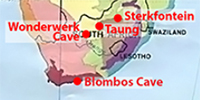 Hominin sites in Africa and nearby regions. This is a useful tool for forming an overall understanding of hominins from Africa, including Homo sapiens.
Hominin sites in Africa and nearby regions. This is a useful tool for forming an overall understanding of hominins from Africa, including Homo sapiens.
Last updated Tuesday 28 June 2022
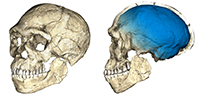 The oldest known Homo sapiens, from Jebel Irhoud in Morocco. Dated to 300 thousand years ago these early Homo sapiens already have a modern-looking face that falls within the variation of humans living today.
The oldest known Homo sapiens, from Jebel Irhoud in Morocco. Dated to 300 thousand years ago these early Homo sapiens already have a modern-looking face that falls within the variation of humans living today.
Last updated Monday 10 May 2021
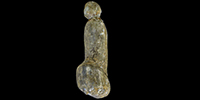 Trou Magrite venus - this 38 mm high ivory statuette was discovered by Dupont in 1867 during excavations conducted in the 19th century in the Trou Magrite near Dinant. It is the only venus from Belgium.
Trou Magrite venus - this 38 mm high ivory statuette was discovered by Dupont in 1867 during excavations conducted in the 19th century in the Trou Magrite near Dinant. It is the only venus from Belgium.
Last updated Friday 16 April 2021
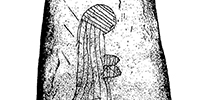 The Rogalik venus is a female figure engraved on a slate slab which has been used as a retoucher, from the late Palaeolithic, possibly around 13 000 BP.
The Rogalik venus is a female figure engraved on a slate slab which has been used as a retoucher, from the late Palaeolithic, possibly around 13 000 BP.
Last updated Friday 02 April 2021
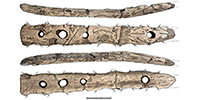 Bâton Percé - This is an important recent find, the first bâton percé found in the Iberian peninsula. It is part of the group which are believed to be used to ply yarn into three ply thread, cords, or rope.
Bâton Percé - This is an important recent find, the first bâton percé found in the Iberian peninsula. It is part of the group which are believed to be used to ply yarn into three ply thread, cords, or rope.
Last updated Friday 26 February 2021
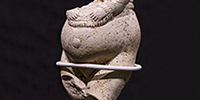 What was the purpose of the Palaeolithic Venus figures? This page gives an overview of the Venus Figures, and discusses the possible reasons for the creation of these iconic and mystifying figures.
What was the purpose of the Palaeolithic Venus figures? This page gives an overview of the Venus Figures, and discusses the possible reasons for the creation of these iconic and mystifying figures.
Last updated Saturday 03 June 2023
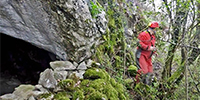 Partisan Cave in Slovenia - based on a chemical analysis of the red colour from one of the cave walls, this may be a remnant of the first Palaeolithic cave painting art in Slovenia. A human incisor belonging to a Neanderthal, which is the first fossil remains of Neanderthal man found in Slovenia, has been found.
Partisan Cave in Slovenia - based on a chemical analysis of the red colour from one of the cave walls, this may be a remnant of the first Palaeolithic cave painting art in Slovenia. A human incisor belonging to a Neanderthal, which is the first fossil remains of Neanderthal man found in Slovenia, has been found.
Last updated Monday 14 December 2020
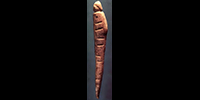 Cellier Venus - this Venus figure was carved from mammoth ivory. Only about five centimetres tall, the figure was found at Abri Cellier in France. The head and hairline are clearly visible. The paired marks are common on Aurignacian objects but their significance is not known.
Cellier Venus - this Venus figure was carved from mammoth ivory. Only about five centimetres tall, the figure was found at Abri Cellier in France. The head and hairline are clearly visible. The paired marks are common on Aurignacian objects but their significance is not known.
Last updated Saturday 03 October 2020
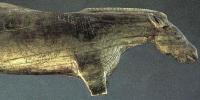
Cave paintings, engravings and sculptures.
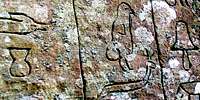
Archeological / Archaeological Forgeries, Hoaxes and Curiosities

A bicycle trip down the Danube from the source of the Danube to Budapest.
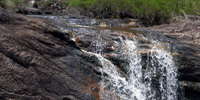 A one hundred kilometre network of walking tracks forms the Gibraltar - Washpool World Heritage Walk. The route links the Gibraltar Range and Washpool National Parks in rugged mountainous country, high above the Clarence Valley on the edge of the Northern Tablelands. Dry eucalypt sclerophyll forests, set amidst a broken collection of ridges and granite tors, surround a mosaic of sub-alpine swamps. In more dense country, lush rainforests safeguard the largest area of coachwood in the world. Within these ancient pockets of wilderness, waterfalls plummet from a lacework of streams and wild rivers.
A one hundred kilometre network of walking tracks forms the Gibraltar - Washpool World Heritage Walk. The route links the Gibraltar Range and Washpool National Parks in rugged mountainous country, high above the Clarence Valley on the edge of the Northern Tablelands. Dry eucalypt sclerophyll forests, set amidst a broken collection of ridges and granite tors, surround a mosaic of sub-alpine swamps. In more dense country, lush rainforests safeguard the largest area of coachwood in the world. Within these ancient pockets of wilderness, waterfalls plummet from a lacework of streams and wild rivers.
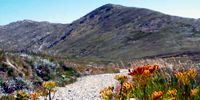
A walk from the top of the Kosciuszko Express chairlift to Mount Kosciuszko, then to Lake Albina and return.

Bushwalking, Hiking and Tramping in New Zealand
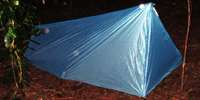
Lightweight Bushwalking / Hiking Gear
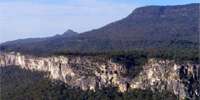
Carnarvon Gorge lies within the spectacular and rugged ranges of Queensland's central highlands. Lined with vegetation and fed by the waters of numerous side gorges, Carnarvon Creek winds between towering sandstone cliffs. The gorge is a cool and moist oasis within the dry environment of central Queensland.
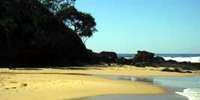
Beach Walks - a wonderful way to explore Australia's coastline by easy stages
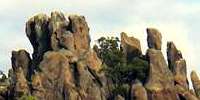
Mount Grattai and Gins Mountain
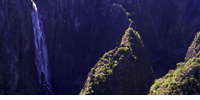
Wollomombi and Chandler Falls walking and climbing. The rock climbing here is very challenging, although the walk on the well maintained track around the tops of the falls may be attempted by most walkers.
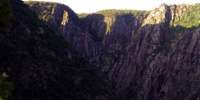
The Chandler River, a challenging area for experienced bushwalkers, and a wonderful part of the world.
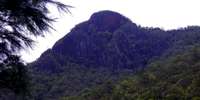
The Lower Chandler River from the Long Point shelter shed ridge to the Macleay
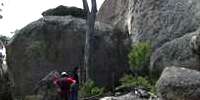
Thunderbolt's Lookout is a short easy walk in the Torrington area.
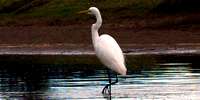
From the mountains to the sea - this is a classic walk from the escarpment of the New England National Park down Grass Tree ridge, along the upper Bellinger River, then kayaking from Bellingen to Urunga along the lower Bellinger River.
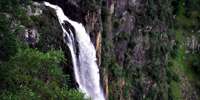
Dangars Falls and Salisbury Waters - this is one of the easiest ways into the gorge country, catering for all levels of fitness and interest.
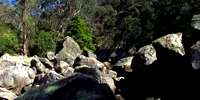
Mihi Gorge - this short gorge with the Mihi Falls at its head is the first named tributary of Salisbury Waters.
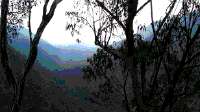
Access to Mihi Gorge and the Salisbury Waters Gorge
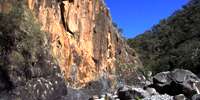
Sarum Lookout, Salisbury Waters and McDirtys Lookout - this is an interesting daywalk for those willing to go off the track.
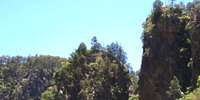
Dangars Falls Gorge - a route for rockclimbers rather than bushwalkers.
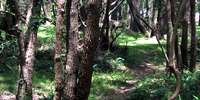
The Apsley River and Green Gully Creek - a classic river walk, starting from Budds Mare.
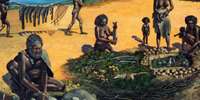
Australian Archeology / Archeology sites
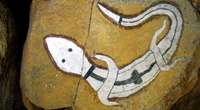
Aboriginal art site on the Northern Tablelands of NSW Australia, including a lizard, a snake, and hand stencils. It appears to be regularly maintained and cared for by local aboriginal people as part of a continuing tradition.
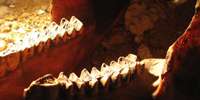
Naracoorte Caves
These caves are in an area of limestone in which ground water has dissolved some of the limestone, creating the caves. Holes in the roof opened up creating traps for the unwary. Mammals and other land creatures have fallen into the sink holes and have become fossilised.

Lake Mungo
Lake Mungo is a dry lake in south-western New South Wales, Australia. Many important archaeological findings have been made at the lake, most significantly the discovery of the remains of Mungo Man, the oldest human remains found in Australia, and Mungo Lady, the oldest human remains in the world to be ritually cremated.
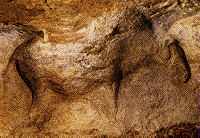 L'Abri du Cap Blanc - Over 15 000 years ago, Ice Age hunters carved horses, bison and reindeer, some of which are over two metres long, straight into the Limestone cliffs at Cap Blanc. The abri, which was discovered in 1909, is today the only frieze of prehistoric sculptures in the world to be shown to the public.
L'Abri du Cap Blanc - Over 15 000 years ago, Ice Age hunters carved horses, bison and reindeer, some of which are over two metres long, straight into the Limestone cliffs at Cap Blanc. The abri, which was discovered in 1909, is today the only frieze of prehistoric sculptures in the world to be shown to the public.
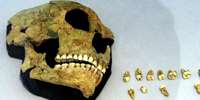 St Césaire Neanderthal Skeleton
St Césaire Neanderthal Skeleton
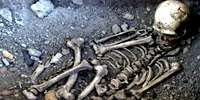 The Neandertal skeleton from La Chapelle-aux-Saints
The Neandertal skeleton from La Chapelle-aux-Saints
 Chauvet Cave in the valley of the Ardèche River in France is filled with paintings, engravings and drawings created more than 30 000 years ago, of cave lions, mammoths, rhinos, bison, cave bears and horses. It contains the earliest known cave paintings, as well as other evidence of Upper Paleolithic life. It is situated on a limestone cliff above the former bed of the Ardèche River. The later Gravettian occupation, which occurred 25 000 to 27 000 years ago, left little but a child's footprints, the charred remains of ancient hearths and carbon smoke stains from torches that lit the caves. After the child's visit to the cave, evidence suggests that the cave had been untouched until discovered in 1994. The footprints may be the oldest human footprints that can be dated accurately
Chauvet Cave in the valley of the Ardèche River in France is filled with paintings, engravings and drawings created more than 30 000 years ago, of cave lions, mammoths, rhinos, bison, cave bears and horses. It contains the earliest known cave paintings, as well as other evidence of Upper Paleolithic life. It is situated on a limestone cliff above the former bed of the Ardèche River. The later Gravettian occupation, which occurred 25 000 to 27 000 years ago, left little but a child's footprints, the charred remains of ancient hearths and carbon smoke stains from torches that lit the caves. After the child's visit to the cave, evidence suggests that the cave had been untouched until discovered in 1994. The footprints may be the oldest human footprints that can be dated accurately
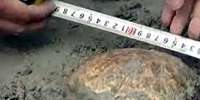
80 000 to 100 000 years old hominin skull found in China
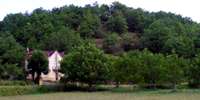
Combe-Capelle, a Neanderthal site in Southern France
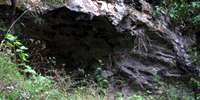
Combe Grenal - a Neanderthal (and earlier) site in the Dordogne valley, France
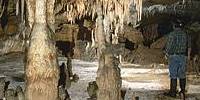 The Grotte de Cussac contains over 150 Paleolithic artworks as well as several human remains. It was discovered on September 30, 2000 by amateur speleologist Marc Delluc. It is closed to the public. The cave's artworks are almost exclusively engravings, often very large, made with stone tools on the walls, or with fingers on clay. At least five people, four adults and a teenager, were deposited in the cavities, with bones dated by Carbon 14 measurements to approximately 25 000 years in age.
The Grotte de Cussac contains over 150 Paleolithic artworks as well as several human remains. It was discovered on September 30, 2000 by amateur speleologist Marc Delluc. It is closed to the public. The cave's artworks are almost exclusively engravings, often very large, made with stone tools on the walls, or with fingers on clay. At least five people, four adults and a teenager, were deposited in the cavities, with bones dated by Carbon 14 measurements to approximately 25 000 years in age.
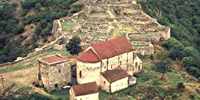
The Homo Erectus site at Dmanisi
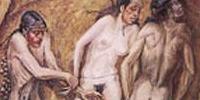 Dolni Vestonice is an ice age mammoth hunters site in the Czech Republic near the town of Brno, in Sudmären - Southern Moravia. Dolni Vestonice I is the original site, where a kiln and pottery figures were found. Dolni Vestonice II is the site where a triple burial of three teenagers was discovered. Dolni Vestonice III is between these two, and has yielded so far tools and bone fragments.
Dolni Vestonice is an ice age mammoth hunters site in the Czech Republic near the town of Brno, in Sudmären - Southern Moravia. Dolni Vestonice I is the original site, where a kiln and pottery figures were found. Dolni Vestonice II is the site where a triple burial of three teenagers was discovered. Dolni Vestonice III is between these two, and has yielded so far tools and bone fragments.

The Dordogne - scene for Book 5, Shelters of Stone. Scenes from the Dordogne, cooking Clan style - preparation of ptarmigan, and using a firestone to make a fire. Photos courtesy Sharon Rogers/walkhound
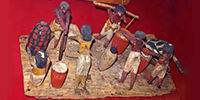
The early beginnings of Ancient Egyptian culture to just before the First Dynasty.
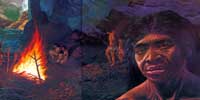
Homo erectus (Beijing Man, Peking Man) sites
 Homo floresiensis was a one metre tall, human-like creature living and using tools in Indonesia just 18 000 years ago and was a distinct species, not just a malformed modern human. The so-called hobbit had wrist bones almost identical to those found in early hominins and modern chimpanzees, and so must have diverged from the human lineage well before modern humans and Neanderthals arose.
Homo floresiensis was a one metre tall, human-like creature living and using tools in Indonesia just 18 000 years ago and was a distinct species, not just a malformed modern human. The so-called hobbit had wrist bones almost identical to those found in early hominins and modern chimpanzees, and so must have diverged from the human lineage well before modern humans and Neanderthals arose.
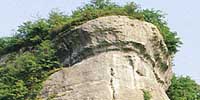 Font-de-Gaume is a cave near Les Eyzies. The cave contains prehistoric polychrome cave paintings and engravings. The paintings were discovered by Denis Peyrony, a local schoolmaster, on 12 September 1901. The cave had been known to the general public before this, but the significance of the paintings had not been recognised. The paintings in the cave at Font-de-Gaume were the first to be discovered in the Périgord province. Prehistoric people living in the Dordogne Valley first settled in the mouth of Font-de-Gaume around 25 000 BC. The cave mouth was inhabited at least sporadically for the next several thousand years. The paintings date from around 17 000 BC, during the Magdalenian period. Many of the cave's paintings have been discovered in recent decades. The cave's most famous painting, a frieze of five bison was discovered accidentally in 1966 while scientists were cleaning the cave.
Font-de-Gaume is a cave near Les Eyzies. The cave contains prehistoric polychrome cave paintings and engravings. The paintings were discovered by Denis Peyrony, a local schoolmaster, on 12 September 1901. The cave had been known to the general public before this, but the significance of the paintings had not been recognised. The paintings in the cave at Font-de-Gaume were the first to be discovered in the Périgord province. Prehistoric people living in the Dordogne Valley first settled in the mouth of Font-de-Gaume around 25 000 BC. The cave mouth was inhabited at least sporadically for the next several thousand years. The paintings date from around 17 000 BC, during the Magdalenian period. Many of the cave's paintings have been discovered in recent decades. The cave's most famous painting, a frieze of five bison was discovered accidentally in 1966 while scientists were cleaning the cave.
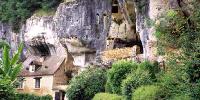
French and Spanish Caves and Rock Shelters

Grottes et Abris-sous-Roche Français et Espagnols
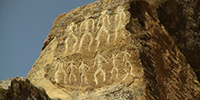
Gobustan on the Caspian Sea is a site dated to around 5 000 - 8 000 years BP, where there are paintings or etchings (petroglyphs) of what appear to be long boats in the style of the Viking ships of more recent times, as well as many other types, including human outlines, horses, and aurochs.
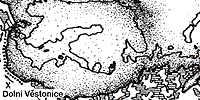
Ice Age maps: Go to the maps of the extent of the ice in the last ice age. A set of maps illustrate how the last British ice sheet shrunk during the Ice Age. The unique maps record the pattern and speed of shrinkage of the large ice sheet that covered the British Isles during the last Ice Age, approximately 20 000 years ago. The sheet, which subsumed most of Britain, Ireland and the North Sea, had an ice volume sufficient to raise global sea level by around 2.5 metres when it melted.
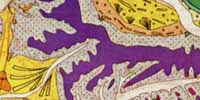
Ice Age maps: Go to the map of the Wurm and Riss Glaciation deposits in the Rhone valley.
Carte dressée par P. Mandier L.A 260 CNRS Lyon
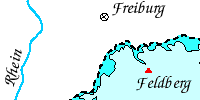
Ice Age maps:
Go to the map of the Wurm and Riss Glaciation in the headwaters of the Donau (Danube)
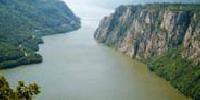
The Iron Gates Gorge, a very important series of mesolithic sites on the Danube
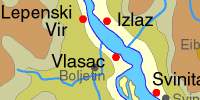 Go to the Iron Gates contour maps
Go to the Iron Gates contour maps
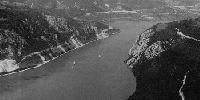 Overview of the Iron Gates area
Overview of the Iron Gates area
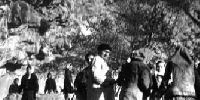 Go to the Cuina Turcului site - the only rock shelter site in the region
Go to the Cuina Turcului site - the only rock shelter site in the region
 Gaura Chindiei - a limestone cave at the first Iron Gate
Gaura Chindiei - a limestone cave at the first Iron Gate
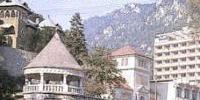 Baile Herculane - a limestone cave area with Paleolithic cave deposits
Baile Herculane - a limestone cave area with Paleolithic cave deposits
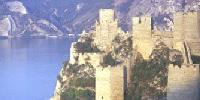 Golubac - a 13th Century castle guarding the Iron Gates entrance
Golubac - a 13th Century castle guarding the Iron Gates entrance
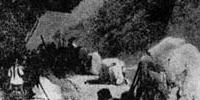 Old engravings of the Iron Gates
Old engravings of the Iron Gates
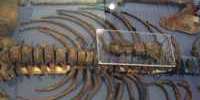 The neanderthal skeleton from Kebara in Israel
The neanderthal skeleton from Kebara in Israel
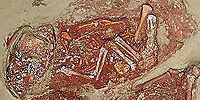
Ice Age Infants - discovered at the Krems-Wachtberg Pavlovian site in Austria on the Danube
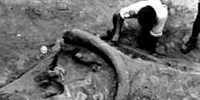
The Krems-Wachtberg Pavlovian mammoth site in Austria on the Danube
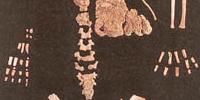 The Lagar Velho Hybrid Child from Portugal - The Lagar Velho site is a rock-shelter in the Lapedo valley, a limestone canyon ca. 140 km north of Lisbon, Portugal. In 1998, the discovery of an early Upper Paleolithic human burial in this site has provided evidence of early modern humans from southern Iberia. The remains, the largely complete skeleton of an approximately 4 year old child buried with pierced shells and red ochre, is dated to ca. 24 500 years B.P. The cranium, mandible, dentition, and postcrania appear to present a mosaic of European early modern human and Neanderthal features.
The Lagar Velho Hybrid Child from Portugal - The Lagar Velho site is a rock-shelter in the Lapedo valley, a limestone canyon ca. 140 km north of Lisbon, Portugal. In 1998, the discovery of an early Upper Paleolithic human burial in this site has provided evidence of early modern humans from southern Iberia. The remains, the largely complete skeleton of an approximately 4 year old child buried with pierced shells and red ochre, is dated to ca. 24 500 years B.P. The cranium, mandible, dentition, and postcrania appear to present a mosaic of European early modern human and Neanderthal features.
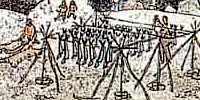
Laugerie Haute is a fundamental site, one of the largest rock shelters in the area, and was excavated by, among others, Lartet, Hauser, Peyrony and Bordes. It bears witness to thousands of years of human occupation spanning from the late Perigordian to the Middle Magdalenian (24 000 - 14 000 BP). Occupation of the site was ended by the collapse of the shelter roof, with several enormous blocks now sealing the archeological levels beneath and creating their present day limits. These archeological levels reveal an abundance of stone tools, a bone and antler industry of impressive quality, as well as artefacts and engraved blocks most of which were found in the uppermost level.
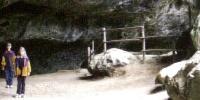
Laugerie Basse is an abri, a rock shelter rather than a cave, on the right bank of the Vézère River, across the bridge from the small tourist town of Les Eyzies. It is a very important gisement. Laugerie Basse is about fifteen metres deep and fifty metres long. The site is made of two rockshelters: the Abri des Marseilles and the Abri classique. Between the Grand Roc cave and the Abri is the museum displaying general information about mobile art. Videos about geology, archeology, the way of life and symbolic expression are available. The excavations carried out during the 1860s by Edouard Lartet did not accurately record the stratigraphy of the site. The stratigraphy was not established until around the First World War. There are four Magdalenian phases, III, IV, V, VI, during the Würm IV, represented in this site. The Laugerie Basse Venus, 'Venus Impudique' (Immodest Venus) was discovered in 1864 by the Marquis Paul de Vibraye. It was the first Venus figure found in France. Many bone, antler, and stone engravings have been found there.
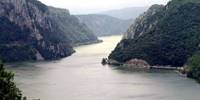
Proto Lepenski Vir and Lepenski Vir Ia - a mesolithic site on the Donau
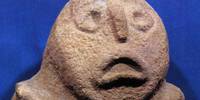
Lepenski Vir Ib-e, II, III - a mesolithic site on the Donau
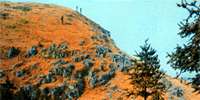
Liujiang - ancient modern human skull
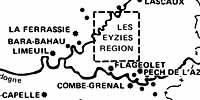
Location Maps and Themes of Cave Paintings

Lucy's baby, Australopithecus afarensis
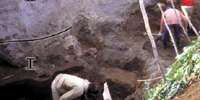
Mamontovaya Kurya - Мамонтовой Курьи - Human presence in the European
Arctic nearly 40 000 years ago

Maps of the extent of the ice in the last ice age in northern Europe and Eurasia. As well there is a set of maps illustrate how the last British ice sheet shrunk as the Ice Age ended. These unique maps record the pattern and speed of shrinkage of the large ice sheet that covered most of the British Isles during the last Ice Age, reaching its peak approximately 20 000 years ago. The sheet, which subsumed most of Britain, Ireland and the North Sea, had an ice volume sufficient to raise global sea level by around 2.5 metres when it melted.

Map of the Wurm and Riss Glaciation deposits in the Rhone valley.
Carte dressée par P. Mandier L.A 260 CNRS Lyon

Map of the Wurm and Riss Glaciation in the headwaters of the Donau (Danube)
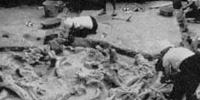 At Mezhirich in 1965, a farmer dug up the lower jawbone of a mammoth while in the process of expanding his cellar. Further excavations revealed the presence of four huts, made up of a total of 149 mammoth bones. These dwellings, dating back some 15 000 years, were determined to have been some of the oldest shelters known to have been constructed by prehistoric man. Mezhirich or Mezhyrich or Межиріч, is a village in central Ukraine near the point where the Rosava River flows into the Ros.
At Mezhirich in 1965, a farmer dug up the lower jawbone of a mammoth while in the process of expanding his cellar. Further excavations revealed the presence of four huts, made up of a total of 149 mammoth bones. These dwellings, dating back some 15 000 years, were determined to have been some of the oldest shelters known to have been constructed by prehistoric man. Mezhirich or Mezhyrich or Межиріч, is a village in central Ukraine near the point where the Rosava River flows into the Ros.
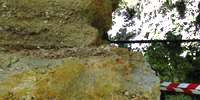 La Micoque open air Neanderthal site
La Micoque open air Neanderthal site

Mousterian (Neanderthal) Sites
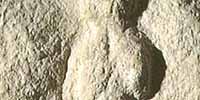
The Venus of Abri Pataud, as well as the site of Abri Pataud
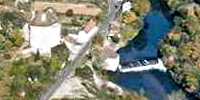
Pech Merle is one of the few prehistoric cave painting sites in France which remain open to the general public. Extending for more than a mile from the entrance are caverns the walls of which are painted with dramatic murals dating from the Gravettian culture (some 25 000 years BP) Some of the paintings and engravings, however, could date from the later Magdalenian era (16 000 years BP). The walls of seven of the chambers at Pech Merle have fresh, lifelike images of a woolly mammoth, spotted horses, bovids, reindeer, handprints, and some human figures. Footprints of children, preserved in what was once clay, have been found more than a kilometre underground.
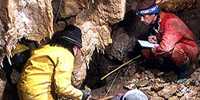 Peștera cu Oase - A research team co-directed by Erik Trinkaus, Ph.D., professor of anthropology at Washington University in St. Louis, has dated a human jawbone from a Romanian bear hibernation cave to between 34 000 and 36 000 years ago. That makes it the earliest known modern human fossil in Europe.
Peștera cu Oase - A research team co-directed by Erik Trinkaus, Ph.D., professor of anthropology at Washington University in St. Louis, has dated a human jawbone from a Romanian bear hibernation cave to between 34 000 and 36 000 years ago. That makes it the earliest known modern human fossil in Europe.
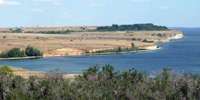
Russian, Ukrainian and Siberian Paleolithic sites - The Paleolithic of the former USSR.
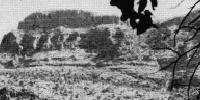 Shanidar Cave is located in the Zagros Mountains of Kurdistan in Iraq. It was excavated between 1957-1961 by Ralph Solecki and his team from Columbia University and yielded the first adult Neanderthal skeletons in Iraq, dating between 60-80 000 years BP.
Shanidar Cave is located in the Zagros Mountains of Kurdistan in Iraq. It was excavated between 1957-1961 by Ralph Solecki and his team from Columbia University and yielded the first adult Neanderthal skeletons in Iraq, dating between 60-80 000 years BP.

The Sungir - Sunghir site near Moscow - About 24 000 years ago, a group of hunters and gatherers buried their dead - including two boys with physical conditions - using the utmost care. The roughly 10 and 12 year-old boys were buried head to head in a long, slender grave filled with riches, including more than 10 000 mammoth ivory beads, more than 20 armbands, about 300 pierced fox teeth, 16 ivory mammoth spears, carved artwork, deer antlers and two human fibulas laid across the boys' chests, the researchers said.
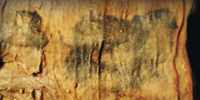 The Grottes de Villars contain galleries of stalactites and earth coloured calcite accumulations, including 17 000 year old prehistoric paintings dating from the same period as those at Lascaux. The slow seepage of water has created some of the most beautiful natural scenery. There are all types of concretions: calcite, thin stalactites, gours, translucent draperies and countless stalagmites. Some of the cave paintings, like those of the rotunda of the horses are covered with a thin layer of calcite that gives them a special blue color.The scene of the bison and the sorcerer is one of the few human representations of prehistoric art.
The Grottes de Villars contain galleries of stalactites and earth coloured calcite accumulations, including 17 000 year old prehistoric paintings dating from the same period as those at Lascaux. The slow seepage of water has created some of the most beautiful natural scenery. There are all types of concretions: calcite, thin stalactites, gours, translucent draperies and countless stalagmites. Some of the cave paintings, like those of the rotunda of the horses are covered with a thin layer of calcite that gives them a special blue color.The scene of the bison and the sorcerer is one of the few human representations of prehistoric art.
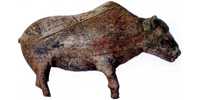 Zaraysk or Zaraisk or Зарайск is part of the Kostenki / Avdeevo group, and is the northenmost example of this culture. The site dates to between 22 000 and 16 000 years ago. The inhabitants were living in a peri-glacial tundra environment, but could call on the rich flint and animal resources of the area at that time. Wood was scarce, but flint, bone and ivory were plentiful, so that raw materials for food, fuel and tools were readily available. The naturalistic statuette of a bison made from a mammoth tusk was the first significant discovery to place Zaraysk on the same level with the best known Palaeolithic sites of Europe.
Zaraysk or Zaraisk or Зарайск is part of the Kostenki / Avdeevo group, and is the northenmost example of this culture. The site dates to between 22 000 and 16 000 years ago. The inhabitants were living in a peri-glacial tundra environment, but could call on the rich flint and animal resources of the area at that time. Wood was scarce, but flint, bone and ivory were plentiful, so that raw materials for food, fuel and tools were readily available. The naturalistic statuette of a bison made from a mammoth tusk was the first significant discovery to place Zaraysk on the same level with the best known Palaeolithic sites of Europe.

Lucy's baby, Australopithecus afarensis

Australopithecus robustus / Paranthropus robustus

Homo erectus (Beijing Man, Peking Man) sites

The Homo Erectus site at Dmanisi
 Homo floresiensis was a one metre tall, human-like creature living and using tools in Indonesia just 18 000 years ago and was a distinct species, not just a malformed modern human. The so-called hobbit had wrist bones almost identical to those found in early hominins and modern chimpanzees, and so must have diverged from the human lineage well before modern humans and Neanderthals arose.
Homo floresiensis was a one metre tall, human-like creature living and using tools in Indonesia just 18 000 years ago and was a distinct species, not just a malformed modern human. The so-called hobbit had wrist bones almost identical to those found in early hominins and modern chimpanzees, and so must have diverged from the human lineage well before modern humans and Neanderthals arose.

Mousterian (Neanderthal) Sites

Venus figures arranged alphabetically. This is the complete list.
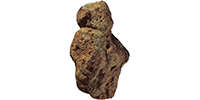
Venus figures arranged in chronological order. This is a simplified list.

Abri Pataud Venus - The Venus of Abri Pataud, as well as the site of Abri Pataud.
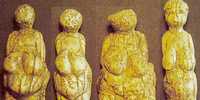 Avdeevo - Venus figures and other finds from this important archaeological site. The Avdeevo venus figures are quite variable, but most depict mature women in various stages of the reproductive cycle. Avdeevo is located on the Sejm River near the city of Kursk, Russia. Two oval living areas surrounded by semisubterranean lodges and pits have been identified at Avdeevo. Both were occupied between 21 000 and 20 000 BP. The tool inventory consists of Kostenki knives, shouldered points, and leaf points on blades.
Avdeevo - Venus figures and other finds from this important archaeological site. The Avdeevo venus figures are quite variable, but most depict mature women in various stages of the reproductive cycle. Avdeevo is located on the Sejm River near the city of Kursk, Russia. Two oval living areas surrounded by semisubterranean lodges and pits have been identified at Avdeevo. Both were occupied between 21 000 and 20 000 BP. The tool inventory consists of Kostenki knives, shouldered points, and leaf points on blades.
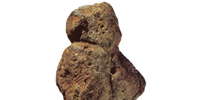 The female figurine from Berekhat Ram, in Israel is one of the oldest known figurative carvings in the world, and is somewhere between 250 000 and 280 000 years old, older than Neanderthal man, and probably carved by Homo Erectus. The original pebble bore a resemblance to a female, and this was enhanced by the carver, who cut grooves around the neck and along its arms. Microscopic analysis by Alexander Marshack has now made it clear that humans were responsible.
The female figurine from Berekhat Ram, in Israel is one of the oldest known figurative carvings in the world, and is somewhere between 250 000 and 280 000 years old, older than Neanderthal man, and probably carved by Homo Erectus. The original pebble bore a resemblance to a female, and this was enhanced by the carver, who cut grooves around the neck and along its arms. Microscopic analysis by Alexander Marshack has now made it clear that humans were responsible.
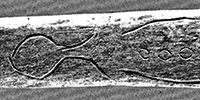
This engraving is known as the Bruniquel Venus.
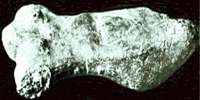
Craiova Venus - The Venus of Craiova, Oltenia, Romania.
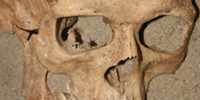
The Don River south and north of Kostenki.

Life along the River Don from the recent past
Stories from Dmitry Nikonorovich, born in 1927
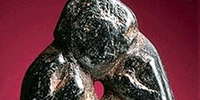 The Nun Venus, or the Flattened Figure is a Balzi Rossi or Grimaldi figurine which has been carved on a flat oval pebble of dark green chlorite and is about 44 mm high. The arms merge into the outer mass of the pebble, and the form brings to mind a female with a quasi-religious and hieratic bearing. The enveloping cape adds an air of mystery.
The Nun Venus, or the Flattened Figure is a Balzi Rossi or Grimaldi figurine which has been carved on a flat oval pebble of dark green chlorite and is about 44 mm high. The arms merge into the outer mass of the pebble, and the form brings to mind a female with a quasi-religious and hieratic bearing. The enveloping cape adds an air of mystery.
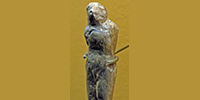
The Venus of Péchialet, from la grotte du Chien à Péchialet.
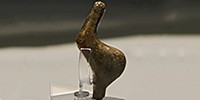
The Venus of Pekarna, from Pekarna Cave, Moravia, Czech Republic.
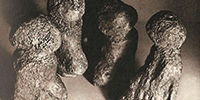
The Predmost venus figures are each carved from the toe of a mammoth.
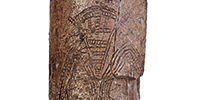
This is known as the Venus of Predmost, an engraving in a mammoth tusk of a stylised female figure.
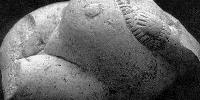
Venus figures from Russia, Ukraine and sites East of the Donau mouth
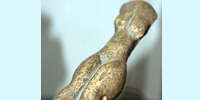 The Yeliseevichi venus, or Elisseevichi venus, is a finely modelled 15 cm tall figure depicting a shapely woman with no feet, head and hands, carved of mammoth tusk. The figurine has prominent buttocks and legs. The Yeliseevichi site was discovered in 1930 and it is located on the river Sudost, the right tributary of the Desna, in the Briansk Province, Russia. Most of the prehistoric artefacts were found in a heap of mammoth skulls piled next to a residential house.
The Yeliseevichi venus, or Elisseevichi venus, is a finely modelled 15 cm tall figure depicting a shapely woman with no feet, head and hands, carved of mammoth tusk. The figurine has prominent buttocks and legs. The Yeliseevichi site was discovered in 1930 and it is located on the river Sudost, the right tributary of the Desna, in the Briansk Province, Russia. Most of the prehistoric artefacts were found in a heap of mammoth skulls piled next to a residential house.
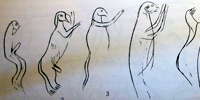
Altamira Cave contains several painted 'Bird Men'.

La Marche has a huge quantity of human heads, many of which are male.
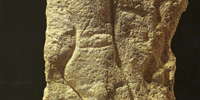
There are two male figures from Laussel, one a finely modelled trunk of a man, the other a priapus.
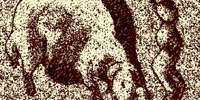
At Roc de Sers there is a drawing on a rock plaque of a man pursued by a Musk Ox.
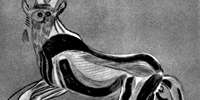
'The Sorcerer' from Trois frères.

Visiting Times to the caves and art sites

The Blue Hole on the Gara River is the location of an aboriginal art site on the Northern Tablelands of NSW Australia, which includes paintings of a lizard, a snake, and hand stencils. It appears to be regularly maintained and cared for by local aboriginal people as part of a continuing tradition.

Open air rock engravings from Bornholm, Denmark

L'Abri du Cap Blanc - Over 15 000 years ago, Ice Age hunters carved horses, bison and reindeer, some of which are over two metres long, straight into the Limestone cliffs at Cap Blanc. The abri, which was discovered in 1909, is today the only frieze of prehistoric sculptures in the world to be shown to the public.
 Chauvet Cave in the valley of the Ardèche River in France is filled with paintings, engravings and drawings created more than 30 000 years ago, of cave lions, mammoths, rhinos, bison, cave bears and horses. It contains the earliest known cave paintings, as well as other evidence of Upper Paleolithic life. It is situated on a limestone cliff above the former bed of the Ardèche River. The later Gravettian occupation, which occurred 25 000 to 27 000 years ago, left little but a child's footprints, the charred remains of ancient hearths and carbon smoke stains from torches that lit the caves. After the child's visit to the cave, evidence suggests that the cave had been untouched until discovered in 1994. The footprints may be the oldest human footprints that can be dated accurately
Chauvet Cave in the valley of the Ardèche River in France is filled with paintings, engravings and drawings created more than 30 000 years ago, of cave lions, mammoths, rhinos, bison, cave bears and horses. It contains the earliest known cave paintings, as well as other evidence of Upper Paleolithic life. It is situated on a limestone cliff above the former bed of the Ardèche River. The later Gravettian occupation, which occurred 25 000 to 27 000 years ago, left little but a child's footprints, the charred remains of ancient hearths and carbon smoke stains from torches that lit the caves. After the child's visit to the cave, evidence suggests that the cave had been untouched until discovered in 1994. The footprints may be the oldest human footprints that can be dated accurately
 Cussac Cave or Grotte de Cussac contains over 150 Paleolithic artworks as well as several human remains. It is located in the Dordogne River valley. The cave was discovered on September 30, 2000. The cave's artworks are estimated to be 25 000 years old, and are almost exclusively engravings, often very large, made with stone tools on the walls, or with fingers on clay soil. Pigments are limited to very few red dots. They include both classic instances of Upper Paleolithic animal art (bison, horses, mammoths, rhinoceroses, ibex) and rarer images including birds, enigmatic figures, and perhaps four female profiles.
Cussac Cave or Grotte de Cussac contains over 150 Paleolithic artworks as well as several human remains. It is located in the Dordogne River valley. The cave was discovered on September 30, 2000. The cave's artworks are estimated to be 25 000 years old, and are almost exclusively engravings, often very large, made with stone tools on the walls, or with fingers on clay soil. Pigments are limited to very few red dots. They include both classic instances of Upper Paleolithic animal art (bison, horses, mammoths, rhinoceroses, ibex) and rarer images including birds, enigmatic figures, and perhaps four female profiles.
 The Grotte de Villars or Villars Cave contains galleries of stalactites and earth coloured calcite accumulations, including 17 000 year old prehistoric paintings dating from the same period as those at Lascaux. The slow seepage of water has created some of the most beautiful natural scenery. There are all types of concretions: calcite, thin stalactites, gours, translucent draperies and countless stalagmites. Some of the cave paintings, like those of the rotunda of the horses are covered with a thin layer of calcite that gives them a special blue color.The scene of the bison and the sorcerer is one of the few human representations of prehistoric art.
The Grotte de Villars or Villars Cave contains galleries of stalactites and earth coloured calcite accumulations, including 17 000 year old prehistoric paintings dating from the same period as those at Lascaux. The slow seepage of water has created some of the most beautiful natural scenery. There are all types of concretions: calcite, thin stalactites, gours, translucent draperies and countless stalagmites. Some of the cave paintings, like those of the rotunda of the horses are covered with a thin layer of calcite that gives them a special blue color.The scene of the bison and the sorcerer is one of the few human representations of prehistoric art.

Ice Age Animals - As the last great ice age (the fourth, or Wurm) began, the advancing ice of the Wurm glaciation forced tundra animals further south into western europe. The increasingly cold conditions altered the vegetation as well. The spruce, fir, and arctic willow were now found only in the more sheltered river valleys, while the rest of the landscape was mostly deforested.

The bear and cavebear in fact, myth and legend

Mammoths, Elephants and the Wooly Rhinoceros

The Tungus - reindeer herders of the Siberian far north

Australian Aboriginal art, trade routes, tools, and water sources in the desert. An Australian Aboriginal person is a person of Aboriginal descent, albeit mixed, who identifies themselves as such and who is recognised by the Aboriginal community as an Aboriginal.
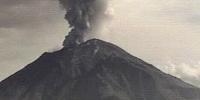
Geology for Earth Children fans
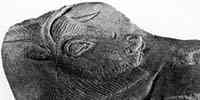
Decorative objects used in the Stone Age
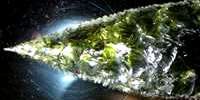
Kimberley Points - superbly made tools from the north of Australia
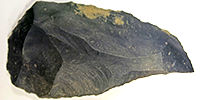 La Madeleine tools - La Madeleine is a rock shelter located in the Vézère valley, in the Dordogne, France. It is a treasure house of art and knowledge about the people of the Magdalenian. This is a record of the tools found at La Madeleine, and on display at Le Musée National de Préhistoire, Les Eyzies-de-Tayac.
La Madeleine tools - La Madeleine is a rock shelter located in the Vézère valley, in the Dordogne, France. It is a treasure house of art and knowledge about the people of the Magdalenian. This is a record of the tools found at La Madeleine, and on display at Le Musée National de Préhistoire, Les Eyzies-de-Tayac.
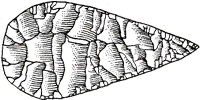
|
Making Flint Tools |
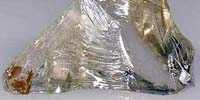
|
Heat treatment of flint and other microcrystalline quartz |
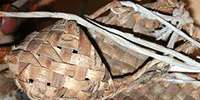
|
Footwear |
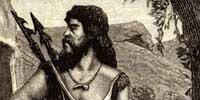
|
Everything you wanted to know about the Dordogne Harpoons and were afraid to ask..... |
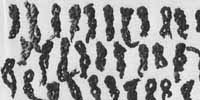
|
Nets and Skis |

|
Numeracy in the Stone Age |
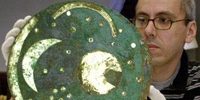
|
Bronze Age 'sky disc' deciphered |
 First Cave (South), the Most Ancient Sacred Site, Chapter 27 - 28 Land of Painted Caves
First Cave (South), the Most Ancient Sacred Site, Chapter 27 - 28 Land of Painted Caves
Now called Chauvet Cave, in the valley of the Ardèche River in France, it is filled with paintings, engravings and drawings created more than 30 000 years ago, of cave lions, mammoths, rhinos, bison, cave bears and horses. It contains the earliest known cave paintings, as well as other evidence of Upper Paleolithic life. A later occupation left little but a child's footprints, the charred remains of ancient hearths and carbon smoke stains from torches that lit the caves. After the child's visit to the cave 26 000 years ago, evidence suggests that the cave had been untouched until discovered in 1994. The footprints may be the oldest human footprints that can be dated accurately
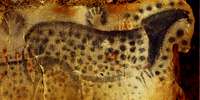 Seventh Cave South, Chapter 21 Land of Painted Caves
Seventh Cave South, Chapter 21 Land of Painted Caves
Now called Pech Merle, this is one of the few prehistoric cave painting sites in France which remain open to the general public. Extending for more than a mile from the entrance are caverns the walls of which are painted with dramatic murals from 25 000 years ago. The walls of seven of the chambers at Pech Merle have fresh, lifelike images of a woolly mammoth, spotted horses, bovids, reindeer, handprints, and some human figures. Footprints of children, preserved in what was once clay, have been found more than a kilometre underground.

La Madeleine. This is known as 'River Front' in the EC books.

Laugerie Haute, known in the EC books as The Ninth Cave - Arts and Crafts
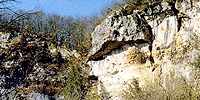
L'Abri des Marseilles, between Laugerie Haute and Laugerie Basse

The Dordogne - scene for Book 5, Shelters of Stone. Scenes from the Dordogne, cooking Clan style - preparation of ptarmigan, and using a firestone to make a fire.

Laugerie Basse, known in the EC books as Down River - Projects

Dolni Vestonice. EC fans know this as the place of the S'Armunai, where Attaroa set herself up as despotic leader of the group.

Font de Gaume in the French Dordogne. In the EC books, this is known as The Deep of Fountain Rocks, where the headland looks like the face of the Mother.

Mezhirich. This is known as Mammoth Camp in the EC series.

Shanidar Cave in Iraq. The Clan Cave in the EC series is located on the Crimean Peninsula, but the original was located hundreds of kilometres away in Iraq, and is a very important Neanderthal site. The skeletons corresponding to Creb and Iza are from there.

The Clan Fishing site - Sudak on the Crimean coast

The Venus of Willendorf. This is Jondalar's sculpture of the mother.
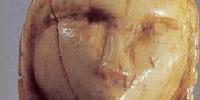
The Venus of Brassempouy. This is the sculpture of Ayla.

Sculpture of 'Whinney', Ayla's horse.

The Sacred Root -
The sacred root is not Datura, however there is reason for thinking that Jean used at least the physical form and growth habits of mandrake when she created her "sacred root". The effects, however, are closer those of the iboga plant.

Golden Thread - Ayla's contraceptive.

Geology for Earth Children fans
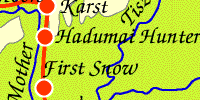
Go to the map of all of Ayla's journeys
All of Ayla's journeys are on this map, up to Shelters of Stone. Jondalar and Thonolan pretty much followed the same course when going east, except that after the time with the Sharamudoi they took a boat down the river to the delta. Then after leaving the delta and Willow Camp they would have followed pretty much the same path as Jon and Ayla did on the journey to the Zelandonii, and finished up at the Valley of horses.
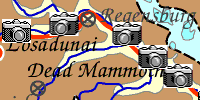
Go to the clickable map of all of Ayla's journeys - click on the camera icon and see the particular area .
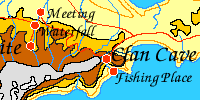
Go to the map of Journeys in Clan of the Cave Bear
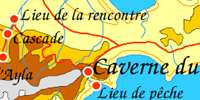
Allez à la carte des trajets de la Caverne du Clan en français
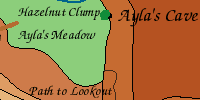
Go to the map of the local area around the cave in Clan of the Cave Bear
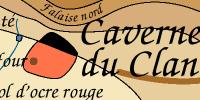
Allez à la carte de la Caverne du Clan en français
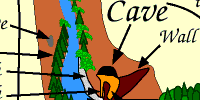
Go to the map of the Valley of Horses
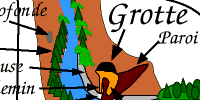
Allez à la carte de la vallée des chevaux en français
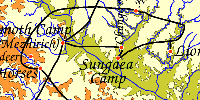
Go to the map of The Mammoth Hunters, in Ukraine
This includes Ayla's journeys in Clan of the Cave Bear, Valley of Horses, Mammoth Hunters, and the first part of the journey in Plains of Passage
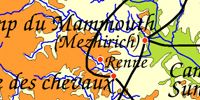
Allez à la carte de Ukraine en français
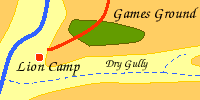
Go to the map of The Mammoth Hunters Lion Camp local area
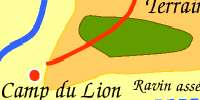
Allez à la carte des chasseurs de mammouths en français
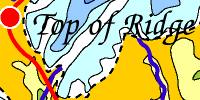
Go to the map of the Donau Mouth to First Snow from the Plains of Passage
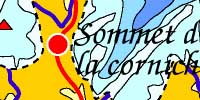
Allez à la carte en français « de l'embouchure du Danube à première neige » d'après Le Grand Voyage

Go to the Iron Gates contour maps
This includes the Sharamudoi journeys, as well as a map for Archeology students without Ayla's journeys.
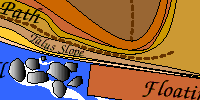
Go to the local map of the Sharamudoi / Iron Gates
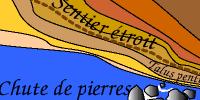
Allez à la carte des Sharamudoi en français
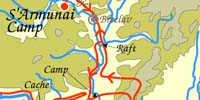
Go to the map of First Snow to the Mammoths from the Plains of Passage
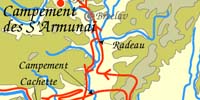
Allez à la carte en français de la première neige aux mammouths d'après le Grand Voyage
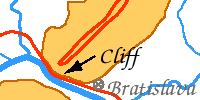
Go to the map of the Encounter with the S'Armunai
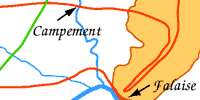
Allez à la carte en français de la rencontre avec les S'Armunaï
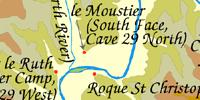
Go to the map of the Shelters of Stone - Zelandonii Territory
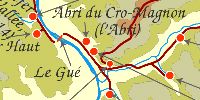
Allez à la carte de la Territoire des Zelandoni en français
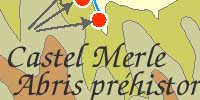
Go to the map of the Vézère Valley for students of archaeology

Go to the maps of the extent of the ice in the last ice age. A set of maps illustrate how the last British ice sheet shrunk during the Ice Age. The unique maps record the pattern and speed of shrinkage of the large ice sheet that covered the British Isles during the last Ice Age, approximately 20 000 years ago. The sheet, which subsumed most of Britain, Ireland and the North Sea, had an ice volume sufficient to raise global sea level by around 2.5 metres when it melted.

Go to the map of the Wurm and Riss Glaciation deposits in the Rhone valley.
Carte dressée par P. Mandier L.A 260 CNRS Lyon

Go to the map of the Wurm and Riss Glaciation in the headwaters of the Donau (Danube)

Cartes dessinées à l’ordinateur
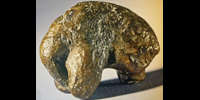
Dolni Vestonice and Pavlov - Jewellery, Pottery, and other artifacts
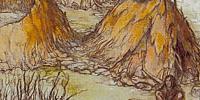
Dolni Vestonice and Pavlov sites

Dolni Vestonice and Pavlov Burials, including the triple burial
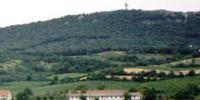
Dolni Vestonice and the Three Sisters - photographs of the area
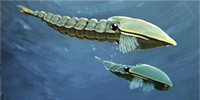 A selection of the animals and plants from the Precambrian to the Cretaceous. The page includes maps of the continents of the earth as they travelled back and forth across the globe.
A selection of the animals and plants from the Precambrian to the Cretaceous. The page includes maps of the continents of the earth as they travelled back and forth across the globe.
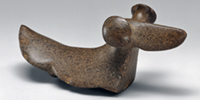 Birdstones are small, abstract stone carvings that resemble a bird and are thought to have been used as a weight for an atlatl. They are generally three to four inches long and less than two inches tall. They are found at archaic sites in midwestern and eastern North America, including the Great Lakes region and east of the Mississippi River. The majority are made from banded slate, particularly the greenish-grey Huronian variety, but other stones like porphyry have also been used.
Birdstones are small, abstract stone carvings that resemble a bird and are thought to have been used as a weight for an atlatl. They are generally three to four inches long and less than two inches tall. They are found at archaic sites in midwestern and eastern North America, including the Great Lakes region and east of the Mississippi River. The majority are made from banded slate, particularly the greenish-grey Huronian variety, but other stones like porphyry have also been used.
 Accessing the collection of rock art photographs by Heinrich Wendel, who documented many of the rock art sites in the Franco-Cantabrian region between 1964 and 1970 - the Neanderthal Museum has kindly made available to the general public the collection of superb photographs from the Wendel Collection. This page will show you how to access the page and to download any files you wish to use.
Accessing the collection of rock art photographs by Heinrich Wendel, who documented many of the rock art sites in the Franco-Cantabrian region between 1964 and 1970 - the Neanderthal Museum has kindly made available to the general public the collection of superb photographs from the Wendel Collection. This page will show you how to access the page and to download any files you wish to use.
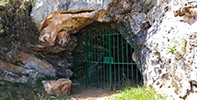 Pasiega Cave in Spain was of mostly academic interest until the discovery that some of the art in the cave may have been put there by Neanderthals. This result has now been discredited. Here is the background to that story, with many drawings of the art of the cave from the old master himself, Breuil. A large number of images of the cave from the Wendel collection are now being added to this page.
Pasiega Cave in Spain was of mostly academic interest until the discovery that some of the art in the cave may have been put there by Neanderthals. This result has now been discredited. Here is the background to that story, with many drawings of the art of the cave from the old master himself, Breuil. A large number of images of the cave from the Wendel collection are now being added to this page.
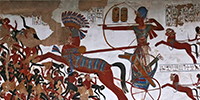 Ancient Egyptian culture from its beginnings through the dynasties to the Ptolemaic period and its eventual decline as a Roman Province, told through reference to its mummies, statues, burial practices and artefacts.
Although my first love is the stone age, mostly before 10 000 BP, I have also become interested in the magnificent works of art produced in ancient Egypt. This set of pages is being constantly updated.
Ancient Egyptian culture from its beginnings through the dynasties to the Ptolemaic period and its eventual decline as a Roman Province, told through reference to its mummies, statues, burial practices and artefacts.
Although my first love is the stone age, mostly before 10 000 BP, I have also become interested in the magnificent works of art produced in ancient Egypt. This set of pages is being constantly updated.
 The Neo-Assyrian Empire was a powerful state that existed in the ancient Near East from 911 BC to 609 BC. It was the largest empire in the world at the time and covered much of modern-day Iraq, Syria, and parts of Iran, Turkey, and Egypt. The Neo-Assyrians were known for their military might, efficient administration, and innovative use of technology, including the development of siege warfare and the use of iron weapons. They also had a well-organised system of government, with a king who had absolute power and a bureaucracy that helped him govern. More images and text have been added.
The Neo-Assyrian Empire was a powerful state that existed in the ancient Near East from 911 BC to 609 BC. It was the largest empire in the world at the time and covered much of modern-day Iraq, Syria, and parts of Iran, Turkey, and Egypt. The Neo-Assyrians were known for their military might, efficient administration, and innovative use of technology, including the development of siege warfare and the use of iron weapons. They also had a well-organised system of government, with a king who had absolute power and a bureaucracy that helped him govern. More images and text have been added.
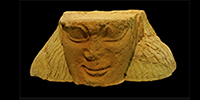 Mesopotamia is the site of the earliest developments of the Neolithic Revolution from around 10 000 BC. It has been identified as having inspired some of the most important developments in human history, including the invention of the wheel, the planting of the first cereal crops, and the development of cursive script, mathematics, astronomy, and agriculture. It is recognised as the cradle of some of the world's earliest civilisations.
Mesopotamia is the site of the earliest developments of the Neolithic Revolution from around 10 000 BC. It has been identified as having inspired some of the most important developments in human history, including the invention of the wheel, the planting of the first cereal crops, and the development of cursive script, mathematics, astronomy, and agriculture. It is recognised as the cradle of some of the world's earliest civilisations.
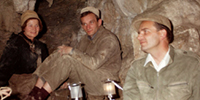 From 1964 until his death in 1980, the collector Heinrich Wendel was head of set design at the Deutsche Oper am Rhein in Düsseldorf and one of Germany's most renowned stage designers. The design of spaces through light and projection art was a central part of his artistic work. With this in mind, he made several trips to the Franco-Cantabrian region between 1964 and 1970 with the aim of finding inspiration for his work in prehistoric cave art. He wrote an important paper on on ice age religion, translated here.
From 1964 until his death in 1980, the collector Heinrich Wendel was head of set design at the Deutsche Oper am Rhein in Düsseldorf and one of Germany's most renowned stage designers. The design of spaces through light and projection art was a central part of his artistic work. With this in mind, he made several trips to the Franco-Cantabrian region between 1964 and 1970 with the aim of finding inspiration for his work in prehistoric cave art. He wrote an important paper on on ice age religion, translated here.
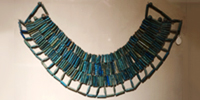 The Petrie Museum of Egyptian Archaeology in London contains 80 000 objects, making it one of the world's largest collections of Egyptian and Sudanese material. William Matthew Flinders Petrie conducted many important excavations in Egypt, and sold his collection of Egyptian antiquities to the University College in 1913, transforming the museum into one of the leading collections outside Egypt. This page is dedicated to the photographs I took there, and will take some time to complete.
The Petrie Museum of Egyptian Archaeology in London contains 80 000 objects, making it one of the world's largest collections of Egyptian and Sudanese material. William Matthew Flinders Petrie conducted many important excavations in Egypt, and sold his collection of Egyptian antiquities to the University College in 1913, transforming the museum into one of the leading collections outside Egypt. This page is dedicated to the photographs I took there, and will take some time to complete.
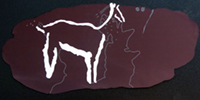 L'abri du Renne de Belcayre (Dordogne) is on the Vézère river, Commune de Saint-Léon-sur-Vézère, near the Château de Belcayre. In 1924 Franck Delage excavated this site and others close by to the Abri du Renne. It is important for the discovery by Delage of an Aurignacian image now thought to be of an ibex rather than a deer or reindeer, pecked into a rock.
L'abri du Renne de Belcayre (Dordogne) is on the Vézère river, Commune de Saint-Léon-sur-Vézère, near the Château de Belcayre. In 1924 Franck Delage excavated this site and others close by to the Abri du Renne. It is important for the discovery by Delage of an Aurignacian image now thought to be of an ibex rather than a deer or reindeer, pecked into a rock.
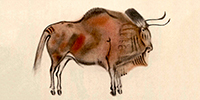 Dots and lines are the most ubiquitous abstract symbols in Palaeolithic art, whether on the walls of caves or on suitable pieces of bone and ivory. Many researchers have noted the occurrence of these symbols, and their occurrence particularly in relation to representations of animals. Here I have put together some of the best examples. The evidence presented here shows that where the evidence exists and the data is sufficient, there is no correlation between the Taxon and the number of dots or lines. For example, horses have numbers of dots and lines which are spread across the range of 1, 2, 3, 4, 5, 6, and 7, and Aurochs (early cattle) have numbers of dots and lines which include 1, 3, 4, 5, 6, 18, and many.
Dots and lines are the most ubiquitous abstract symbols in Palaeolithic art, whether on the walls of caves or on suitable pieces of bone and ivory. Many researchers have noted the occurrence of these symbols, and their occurrence particularly in relation to representations of animals. Here I have put together some of the best examples. The evidence presented here shows that where the evidence exists and the data is sufficient, there is no correlation between the Taxon and the number of dots or lines. For example, horses have numbers of dots and lines which are spread across the range of 1, 2, 3, 4, 5, 6, and 7, and Aurochs (early cattle) have numbers of dots and lines which include 1, 3, 4, 5, 6, 18, and many.
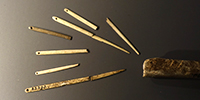 The Gudenushöhle cave is situated 20 km northwest of the city of Krems, in the valley of the Little Krems, not far from Willendorf, in Lower Austria. The site is close to the River Danube, and has yielded both Neanderthal and Magdalenian artefacts, including many tools, as well as an engraved reindeer bone and a fragment of a bone flute dated to about 18 000 – 12 000 BP.
The Gudenushöhle cave is situated 20 km northwest of the city of Krems, in the valley of the Little Krems, not far from Willendorf, in Lower Austria. The site is close to the River Danube, and has yielded both Neanderthal and Magdalenian artefacts, including many tools, as well as an engraved reindeer bone and a fragment of a bone flute dated to about 18 000 – 12 000 BP.
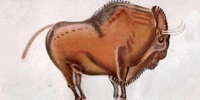 Altamira Cave is 270 metres long and consists of a series of twisting passages and chambers, and is decorated with ice age paintings. The artists used charcoal and ochre or haematite to create the images. They also exploited the natural contours in the cave walls to give their subjects a three-dimensional effect. The Polychrome Ceiling is the most impressive feature of the cave, depicting a herd of extinct Steppe Bison in different poses, two horses, a large doe, and possibly a wild boar. Around 13 000 years ago a rockfall sealed the cave's entrance, preserving its contents until its eventual discovery.
Altamira Cave is 270 metres long and consists of a series of twisting passages and chambers, and is decorated with ice age paintings. The artists used charcoal and ochre or haematite to create the images. They also exploited the natural contours in the cave walls to give their subjects a three-dimensional effect. The Polychrome Ceiling is the most impressive feature of the cave, depicting a herd of extinct Steppe Bison in different poses, two horses, a large doe, and possibly a wild boar. Around 13 000 years ago a rockfall sealed the cave's entrance, preserving its contents until its eventual discovery.
 Photoshop for beginners - I am not an expert, I am a beginner myself (though I have spent many years trying to understand a small part of this encyclopaedia for image manipulation), but this text and images may be of use to someone just starting out on the Photoshop journey. At the moment it covers part of rotation and cropping and healing of images, removing backgrounds, and healing just the edge of an object. I will be adding to this initial study as time affords.
Photoshop for beginners - I am not an expert, I am a beginner myself (though I have spent many years trying to understand a small part of this encyclopaedia for image manipulation), but this text and images may be of use to someone just starting out on the Photoshop journey. At the moment it covers part of rotation and cropping and healing of images, removing backgrounds, and healing just the edge of an object. I will be adding to this initial study as time affords.
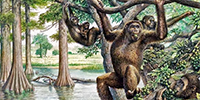 The swamp ape Oreopithecus bambolii was 120 cm tall and weighed 30 kg, with a brain capacity of up to 200 cm3 lived in swampy areas of what is now Italy, 10 to 8 million years ago. The long forelimbs are indicative of tree-dwelling. The ape went extinct after a land bridge connected their island to the mainland, allowing large saber-toothed cats and other predators to stalk the island.
The swamp ape Oreopithecus bambolii was 120 cm tall and weighed 30 kg, with a brain capacity of up to 200 cm3 lived in swampy areas of what is now Italy, 10 to 8 million years ago. The long forelimbs are indicative of tree-dwelling. The ape went extinct after a land bridge connected their island to the mainland, allowing large saber-toothed cats and other predators to stalk the island.
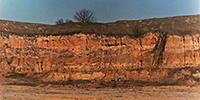 Achenheim is an important site from the Middle Palaeolithic (75 000 to 35 000 years ago) and bears witness to the presence of Neanderthal man in Alsace: Achenheim was an animal butchering area. The site includes the bones of several large animals (rhinoceros, horse, mammoth, bison, Megaloceros) butchered on the spot after the hunt.
Achenheim is an important site from the Middle Palaeolithic (75 000 to 35 000 years ago) and bears witness to the presence of Neanderthal man in Alsace: Achenheim was an animal butchering area. The site includes the bones of several large animals (rhinoceros, horse, mammoth, bison, Megaloceros) butchered on the spot after the hunt.
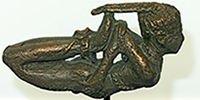
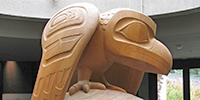 In the Pacific Northwest Coast mythology, Raven is the powerful figure who transforms the world. Stories tell how Raven created the land, released the people from a cockle shell, and brought them fire. Raven stole the light and brought it out to light up the world. Yet Raven is a trickster—often selfish, hungry, and mischievous. He changes the world only by cleverly deceiving others in his never - ending quest for food.
In the Pacific Northwest Coast mythology, Raven is the powerful figure who transforms the world. Stories tell how Raven created the land, released the people from a cockle shell, and brought them fire. Raven stole the light and brought it out to light up the world. Yet Raven is a trickster—often selfish, hungry, and mischievous. He changes the world only by cleverly deceiving others in his never - ending quest for food.
 The Ishtar Gate was the eighth gate to the inner city of Babylon. It was constructed in about 575 BC by order of King Nebuchadnezzar II on the north side of the city. It was part of a grand walled processional way leading into the city. The walls were finished in glazed bricks mostly in blue, with animals and 'dragons' in low relief at intervals, these also made up of bricks that are moulded and coloured differently.
The Ishtar Gate was the eighth gate to the inner city of Babylon. It was constructed in about 575 BC by order of King Nebuchadnezzar II on the north side of the city. It was part of a grand walled processional way leading into the city. The walls were finished in glazed bricks mostly in blue, with animals and 'dragons' in low relief at intervals, these also made up of bricks that are moulded and coloured differently.
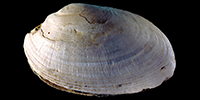 On the banks of the Bengawan Solo River in Java, Indonesia, 19th-century physician Eugène Dubois uncovered an astounding fossil find: the bones of what appeared to be an ancient human, surrounded by animal remains and shells. Excavated in the 1890s, the site gained fame as the home of 'Java Man', better known today as Homo erectus. Deliberate scratching on a fossil Pseudodon shell, is almost certainly an engraving made by Homo erectus at Trinil in Indonesia.
On the banks of the Bengawan Solo River in Java, Indonesia, 19th-century physician Eugène Dubois uncovered an astounding fossil find: the bones of what appeared to be an ancient human, surrounded by animal remains and shells. Excavated in the 1890s, the site gained fame as the home of 'Java Man', better known today as Homo erectus. Deliberate scratching on a fossil Pseudodon shell, is almost certainly an engraving made by Homo erectus at Trinil in Indonesia.
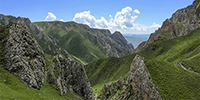 Of all the ancient peoples that have been studied by scientists, none has set puzzles quite so profound as those left behind by the Denisovans. However game changing DNA research and techniques now mean that we can trace which hominins and animals used a particular site. No longer do we need actual fossils to determine this, a small sample of the dirt from the cave or open air site is all that is required. These methods will revolutionise archaeology and anthropology.
Of all the ancient peoples that have been studied by scientists, none has set puzzles quite so profound as those left behind by the Denisovans. However game changing DNA research and techniques now mean that we can trace which hominins and animals used a particular site. No longer do we need actual fossils to determine this, a small sample of the dirt from the cave or open air site is all that is required. These methods will revolutionise archaeology and anthropology.
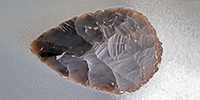 I have reorganised and added to the page on tools, to include sections specifically on the development of the ancient Acheulean hand axe by Homo erectus and the various types of this important tool, and the mastery of its creation by Homo neanderthalensis, who not only made it in the classic fashion, working on a core or nucleus bifacially, known as Moustérien de tradition acheuléenne or MTA, but also took flakes and turned them into bifacially worked Acheulean hand axes. There is a short summary of the development of such tools right through to Neolithic arrow heads, followed by a longer section on the step by step development of the full range of tools from choppers through to the bow and arrow.
I have reorganised and added to the page on tools, to include sections specifically on the development of the ancient Acheulean hand axe by Homo erectus and the various types of this important tool, and the mastery of its creation by Homo neanderthalensis, who not only made it in the classic fashion, working on a core or nucleus bifacially, known as Moustérien de tradition acheuléenne or MTA, but also took flakes and turned them into bifacially worked Acheulean hand axes. There is a short summary of the development of such tools right through to Neolithic arrow heads, followed by a longer section on the step by step development of the full range of tools from choppers through to the bow and arrow.
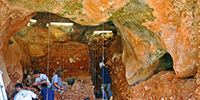 The sites generally known as Atapuerca are a series of very important excavations in the Sierra Atapuerca, in Spain, first discovered as a result of the construction of a railway line through this limestone region. Taken together, the sites are more extensive in terms of hominin discoveries than anywhere else in Europe, or perhaps the world. The discoveries range in age from 1.4 million years old stone tools to neolithic ceramics, and the hominins include Homo erectus, Homo antecessor, Homo heidelbergensis, and Homo neanderthalensis.
The sites generally known as Atapuerca are a series of very important excavations in the Sierra Atapuerca, in Spain, first discovered as a result of the construction of a railway line through this limestone region. Taken together, the sites are more extensive in terms of hominin discoveries than anywhere else in Europe, or perhaps the world. The discoveries range in age from 1.4 million years old stone tools to neolithic ceramics, and the hominins include Homo erectus, Homo antecessor, Homo heidelbergensis, and Homo neanderthalensis.
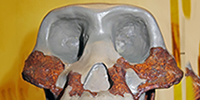 Australopithecus bahrelghazali is the only Australopithecus found outside East Africa. It is named after the Bahr-el-Ghazal oasis in Chad. Dated circa 3 500 000 BP. It is the first and only australopithecine known from Central Africa, and demonstrates that this group was widely distributed across Africa as opposed to being restricted to East and southern Africa as previously thought.
Australopithecus bahrelghazali is the only Australopithecus found outside East Africa. It is named after the Bahr-el-Ghazal oasis in Chad. Dated circa 3 500 000 BP. It is the first and only australopithecine known from Central Africa, and demonstrates that this group was widely distributed across Africa as opposed to being restricted to East and southern Africa as previously thought.
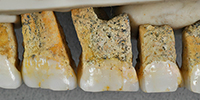 Homo luzonensis is an extinct, possibly pygmy, species of archaic human from the Late Pleistocene of Luzon, the Philippines. Their remains, teeth, and phalanges, are known only from Callao Cave in the northern part of the island dating to before 50 000 years ago. They were initially identified as belonging to modern humans in 2010, but analysis has revealed that the remains are unlike any other hominin fossils known, and likely represent a distinct species of the Homo genus.
Homo luzonensis is an extinct, possibly pygmy, species of archaic human from the Late Pleistocene of Luzon, the Philippines. Their remains, teeth, and phalanges, are known only from Callao Cave in the northern part of the island dating to before 50 000 years ago. They were initially identified as belonging to modern humans in 2010, but analysis has revealed that the remains are unlike any other hominin fossils known, and likely represent a distinct species of the Homo genus.
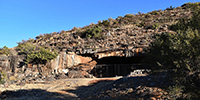 Wonderwerk Cave in South Africa contains stone tools dated to two million years ago, possibly knapped by Homo habilis. It is one of the earliest cave occupation sites in the world, and is the site of some of the earliest uses of controlled fire and tool making. More images and text reflecting the latest excavations have been added.
Wonderwerk Cave in South Africa contains stone tools dated to two million years ago, possibly knapped by Homo habilis. It is one of the earliest cave occupation sites in the world, and is the site of some of the earliest uses of controlled fire and tool making. More images and text reflecting the latest excavations have been added.  The premolar, unerupted tooth of a Neanderthal child, Wezmeh 1, has been identified from Wezmeh Cave, Iran. The child is estimated to have been between 6-10 years old, and the tooth is believed to be from a child taken as prey by a hyena elsewhere, and consumed in the cave. More photos and text of recent discoveries has been added.
The premolar, unerupted tooth of a Neanderthal child, Wezmeh 1, has been identified from Wezmeh Cave, Iran. The child is estimated to have been between 6-10 years old, and the tooth is believed to be from a child taken as prey by a hyena elsewhere, and consumed in the cave. More photos and text of recent discoveries has been added.
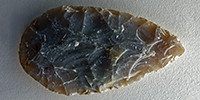 Tools and other artefacts from the stone age of Germany, from the earliest examples to the Aurignacian. Some of the most interesting tools which are prevalent in central and western Europe are the blattspitzen, or bifacially worked leaf tips from the Middle Palaeolithic - Aurignacian interface, apparently modelled on the best Acheulean hand axes, but much smaller and just as finely worked, and used as knives and as points for hand held thrusting spears.
Tools and other artefacts from the stone age of Germany, from the earliest examples to the Aurignacian. Some of the most interesting tools which are prevalent in central and western Europe are the blattspitzen, or bifacially worked leaf tips from the Middle Palaeolithic - Aurignacian interface, apparently modelled on the best Acheulean hand axes, but much smaller and just as finely worked, and used as knives and as points for hand held thrusting spears.
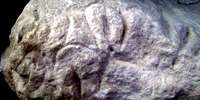 Le Ruth and Le Cellier - Sous le Ruth is the house beneath the archeological site, le Ruth, near le Moustier, and is a private gisement, with a good display of stone tools, and access to the excavated site of le Ruth. Le Cellier is an important site a few hundred metres away, which yielded many Aurignacian tools and stone engravings of vulvas. The deposits of le Ruth above Sous le Ruth were excavated by Otto Hauser. This page has been reorganised.
Le Ruth and Le Cellier - Sous le Ruth is the house beneath the archeological site, le Ruth, near le Moustier, and is a private gisement, with a good display of stone tools, and access to the excavated site of le Ruth. Le Cellier is an important site a few hundred metres away, which yielded many Aurignacian tools and stone engravings of vulvas. The deposits of le Ruth above Sous le Ruth were excavated by Otto Hauser. This page has been reorganised.

 Ice age hunters were skilful, highly efficient and used an arsenal of different wooden weapons. This is shown by an approximately 300 000-year-old 'throwing stick' from the Schöningen open-air discovery site in Lower Saxony. Homo heidelbergensis probably used it to hunt waterfowl and to drive larger mammals while hunting. A number of wooden throwing spears were also found.
Ice age hunters were skilful, highly efficient and used an arsenal of different wooden weapons. This is shown by an approximately 300 000-year-old 'throwing stick' from the Schöningen open-air discovery site in Lower Saxony. Homo heidelbergensis probably used it to hunt waterfowl and to drive larger mammals while hunting. A number of wooden throwing spears were also found. 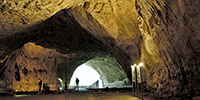 Kůlna Cave forms a massive tunnel on the eastern slope of the Sloupské Valley. The researches of the Anthropos Institute brought not only extensive collections of Middle Palaeolithic tools and at the same time the oldest evidence of the settlement of the Moravian Karst, but also the most numerous remains of Neanderthal man in the Czech Republic.
Kůlna Cave forms a massive tunnel on the eastern slope of the Sloupské Valley. The researches of the Anthropos Institute brought not only extensive collections of Middle Palaeolithic tools and at the same time the oldest evidence of the settlement of the Moravian Karst, but also the most numerous remains of Neanderthal man in the Czech Republic.
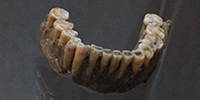 Švédův Stůl Cave is a short 'through cave' in a rock block (hence the name Swede's Table). Besides cave bears, hyenas and other animals inhabited the cave as well as Neanderthals 100 000 years ago. In the portal cave Švédův Stůl in the valley of the Hádacky brook, Karl Kubásek discovered part of the mandible of an adult Neanderthal a well as a few Mousterian artefacts in 1905. In 1953-55, when the soil was cleared from the entire front hall, B. Klíma finally found the mid-Palaeolithic artefacts.
Švédův Stůl Cave is a short 'through cave' in a rock block (hence the name Swede's Table). Besides cave bears, hyenas and other animals inhabited the cave as well as Neanderthals 100 000 years ago. In the portal cave Švédův Stůl in the valley of the Hádacky brook, Karl Kubásek discovered part of the mandible of an adult Neanderthal a well as a few Mousterian artefacts in 1905. In 1953-55, when the soil was cleared from the entire front hall, B. Klíma finally found the mid-Palaeolithic artefacts.
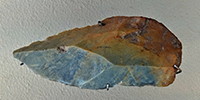 The Szeletian culture is an outgrowth of the Mousterian, similar to the Châtelperronian, an industry with elements of both the Mousterian and the Aurignacian. The Szeletian culture was widespread in what is now Hungary, Czechoslovakia, and southwestern Poland, and its influence can also be seen at a number of places in Romania and Bulgaria. More photos of the Míškovice sub-type of artefacts have been added.
The Szeletian culture is an outgrowth of the Mousterian, similar to the Châtelperronian, an industry with elements of both the Mousterian and the Aurignacian. The Szeletian culture was widespread in what is now Hungary, Czechoslovakia, and southwestern Poland, and its influence can also be seen at a number of places in Romania and Bulgaria. More photos of the Míškovice sub-type of artefacts have been added.
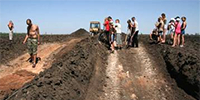 Burial mounds in the Rossosh area, south of the major city of Voronezh in Russia, have yielded evidence of several bronze age cultures including the pit-grave culture, the catacomb-grave culture, the Srubnaya culture, and the Sarmatian culture.
Burial mounds in the Rossosh area, south of the major city of Voronezh in Russia, have yielded evidence of several bronze age cultures including the pit-grave culture, the catacomb-grave culture, the Srubnaya culture, and the Sarmatian culture.
 Cycling down the Danube - in 2008 my wife Maria and I went on a three week cycling trip from Donaueschingen, the source of the Danube, to Budapest, which took us three weeks. We cycled more than 1200 kilometres along the Radweg, the cycle path. There are many Radwegs, we were mostly on the one labelled as number 6. It was a great trip, with adventures and surprises along the way.
Cycling down the Danube - in 2008 my wife Maria and I went on a three week cycling trip from Donaueschingen, the source of the Danube, to Budapest, which took us three weeks. We cycled more than 1200 kilometres along the Radweg, the cycle path. There are many Radwegs, we were mostly on the one labelled as number 6. It was a great trip, with adventures and surprises along the way.

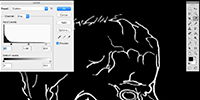
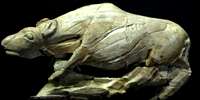
 In 1865, Charles William Hitchcock and his wife Emma (nee Fuller) came out to Australia in the ship 'Royal Dane'. William Henry, my grandfather, was born on the ship on the 24th July 1865 while the ship was anchored in Keppel Bay. This is the index page for a number of family photographs and some of the early family history.
In 1865, Charles William Hitchcock and his wife Emma (nee Fuller) came out to Australia in the ship 'Royal Dane'. William Henry, my grandfather, was born on the ship on the 24th July 1865 while the ship was anchored in Keppel Bay. This is the index page for a number of family photographs and some of the early family history.

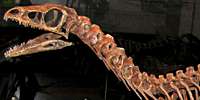
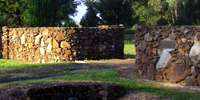



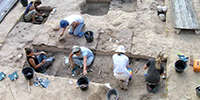 The Acheulian is named after the eponymous site of Saint Acheul. There are a series of sites in the lower Somme valley of Pleistocene deposits containing the distinctive large hand axes of the period. These artefacts were in terraces which resulted from alternating cycles of stream deposition and down-cutting allied to changes in climate and sea level that accompanied the alternating glacial and interglacial stages of Pleistocene times. These deposits attracted early researchers, who found not just the hand axes, but also the bones of what were identified as elephants and rhinoceroses.
The Acheulian is named after the eponymous site of Saint Acheul. There are a series of sites in the lower Somme valley of Pleistocene deposits containing the distinctive large hand axes of the period. These artefacts were in terraces which resulted from alternating cycles of stream deposition and down-cutting allied to changes in climate and sea level that accompanied the alternating glacial and interglacial stages of Pleistocene times. These deposits attracted early researchers, who found not just the hand axes, but also the bones of what were identified as elephants and rhinoceroses.
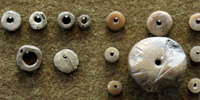 Afontova Gora - Афонтова Гора is an important site which has cultural ties with Mal'ta and Buret', hundreds of kilometres to the south east. It is on a north flowing river, the Yenisei, Енисея.
The settlement is dated to 20 000 - 18 000 BP, a very cold part of the last ice age, and the northern ice sheet can not have been far away.
Afontova Gora - Афонтова Гора is an important site which has cultural ties with Mal'ta and Buret', hundreds of kilometres to the south east. It is on a north flowing river, the Yenisei, Енисея.
The settlement is dated to 20 000 - 18 000 BP, a very cold part of the last ice age, and the northern ice sheet can not have been far away.
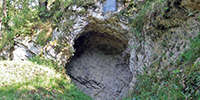 La Grotte d'Aurignac and the Aurignacian - La Grotte d'Aurignac is a cave located in the commune of Aurignac , in Haute-Garonne (Midi-Pyrenees , France). Occupied during the Upper Palaeolithic, it gave its name to the Aurignacian , a prehistoric culture of the beginning of that period.
La Grotte d'Aurignac and the Aurignacian - La Grotte d'Aurignac is a cave located in the commune of Aurignac , in Haute-Garonne (Midi-Pyrenees , France). Occupied during the Upper Palaeolithic, it gave its name to the Aurignacian , a prehistoric culture of the beginning of that period.
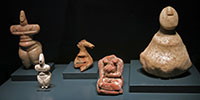 The Cycladic culture flourished in the islands of the Aegean Sea from circa 3 300 - 1 100 BC. Cycladic art comprises one of the three main branches of Aegean art. The best known type of artwork that has survived is the marble figurine, most commonly a single full-length female figure with arms folded across the front. Apart from a sharply-defined nose, the faces are a smooth blank, although there is evidence on some that they were originally painted.
The Cycladic culture flourished in the islands of the Aegean Sea from circa 3 300 - 1 100 BC. Cycladic art comprises one of the three main branches of Aegean art. The best known type of artwork that has survived is the marble figurine, most commonly a single full-length female figure with arms folded across the front. Apart from a sharply-defined nose, the faces are a smooth blank, although there is evidence on some that they were originally painted.
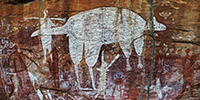 Laura in north Queensland, on the Cape York Peninsula, has many sandstone walls protected by overhanging ledges, which are the site of complex and rich rock art by Australia's First Nations people.
Laura in north Queensland, on the Cape York Peninsula, has many sandstone walls protected by overhanging ledges, which are the site of complex and rich rock art by Australia's First Nations people.
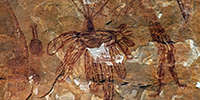
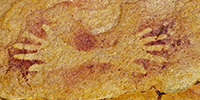
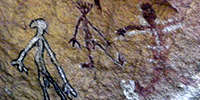
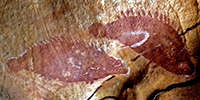
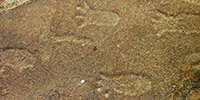
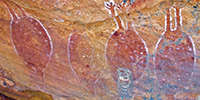
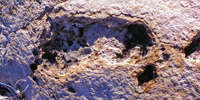
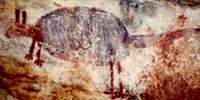
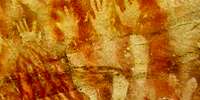
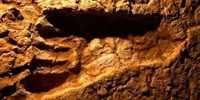
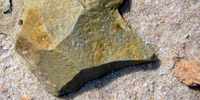
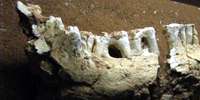

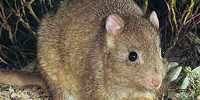

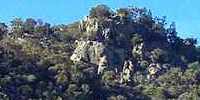 The Mount Yarrowyck Nature Reserve near the junction of the Armidale Road and Thunderbolts Way protects an Aboriginal cave painting site and much of the natural environment of Mount Yarrowyck. The paintings are probably several hundreds of years old. The tracks, circles, short lines and dots may remind you of birds' feet, people, lizards and even birds' eggs. However an Aboriginal elder, the late Victor Shepherd, was sure that the paintings were of a bird that fed on the ground. Ground birds were represented by their feet alone. He said the toes look too short and thick to be an emu. The paintings must be of the Plains Turkey, the Bustard.
The Mount Yarrowyck Nature Reserve near the junction of the Armidale Road and Thunderbolts Way protects an Aboriginal cave painting site and much of the natural environment of Mount Yarrowyck. The paintings are probably several hundreds of years old. The tracks, circles, short lines and dots may remind you of birds' feet, people, lizards and even birds' eggs. However an Aboriginal elder, the late Victor Shepherd, was sure that the paintings were of a bird that fed on the ground. Ground birds were represented by their feet alone. He said the toes look too short and thick to be an emu. The paintings must be of the Plains Turkey, the Bustard.
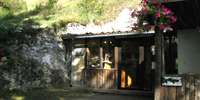 La Grotte de Bara Bahau is an Historic Monument containing Ice Age Cave Art. It is 100 metres long, 12 metres wide, and up to six metres high. There are many scratches on the walls from the Cave Bears which once inhabited this limestone cave. Magdalenian hunters left engravings of horses, bison, deer, aurochs, human hands, a phallus, and bears, as well as signs whose meaning we can only guess at. The cave itself was well known for many years, but the engravings were discovered in April 1951 when the famous caver Norbert Casteret in company with his son Raoul and his daughter explored the cave thoroughly and discovered the Magdalenian engravings. These were authenticated by Henri Breuil in August of that year. Later, in 1955 Father Glory made a thorough examination of the cave, and in 1997 Brigitte and Gilles Delluc published a monograph on the cave.
La Grotte de Bara Bahau is an Historic Monument containing Ice Age Cave Art. It is 100 metres long, 12 metres wide, and up to six metres high. There are many scratches on the walls from the Cave Bears which once inhabited this limestone cave. Magdalenian hunters left engravings of horses, bison, deer, aurochs, human hands, a phallus, and bears, as well as signs whose meaning we can only guess at. The cave itself was well known for many years, but the engravings were discovered in April 1951 when the famous caver Norbert Casteret in company with his son Raoul and his daughter explored the cave thoroughly and discovered the Magdalenian engravings. These were authenticated by Henri Breuil in August of that year. Later, in 1955 Father Glory made a thorough examination of the cave, and in 1997 Brigitte and Gilles Delluc published a monograph on the cave.
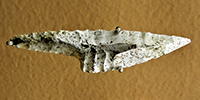 The Badegoulian culture spans the Solutrean and the early Magdalenian, and has been dated to between 19 000 and 17 000 BP. The lithic industry includes laurel leaf points and shouldered points, as well as the small scrapers known as raclettes. Shells for jewellery were obtained from fossil sites, as well as from both Atlantic and Mediterranean beaches. The site of Badegoule is at the base and the extremity of a limestone cliff facing south, on the left bank of a tributary of Le Cern brook. The site may have been a huge living place, covering a large surface on the slope of the present relief, at least 50 m long and 20 m deep.
The Badegoulian culture spans the Solutrean and the early Magdalenian, and has been dated to between 19 000 and 17 000 BP. The lithic industry includes laurel leaf points and shouldered points, as well as the small scrapers known as raclettes. Shells for jewellery were obtained from fossil sites, as well as from both Atlantic and Mediterranean beaches. The site of Badegoule is at the base and the extremity of a limestone cliff facing south, on the left bank of a tributary of Le Cern brook. The site may have been a huge living place, covering a large surface on the slope of the present relief, at least 50 m long and 20 m deep.
 Batavia was a ship of the Dutch East India Company (VOC). It was built in Amsterdam in 1628, and armed with 24 cast-iron cannons and a number of bronze guns. Batavia was shipwrecked on her maiden voyage, and was made famous by the subsequent mutiny and massacre that took place among the survivors. A twentieth-century replica of the ship, also called the Batavia can be visited in Lelystad, Netherlands.
Batavia was a ship of the Dutch East India Company (VOC). It was built in Amsterdam in 1628, and armed with 24 cast-iron cannons and a number of bronze guns. Batavia was shipwrecked on her maiden voyage, and was made famous by the subsequent mutiny and massacre that took place among the survivors. A twentieth-century replica of the ship, also called the Batavia can be visited in Lelystad, Netherlands.
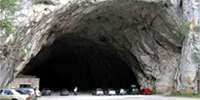 Grotte de Bédeilhac has a huge entrance and was a good shelter for Magdalenian hunters. There are two horizons with human remains.
Important finds include clay sculptures, bone polishers, baguettes demi-ronde, perforated horse teeth and many paintings and engravings on the walls.
Grotte de Bédeilhac has a huge entrance and was a good shelter for Magdalenian hunters. There are two horizons with human remains.
Important finds include clay sculptures, bone polishers, baguettes demi-ronde, perforated horse teeth and many paintings and engravings on the walls.
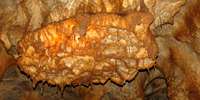 Grotte de Bernifal is a cave decorated with over 100 engravings and paintings. It includes engravings of horses, bison, mammoths and ibex as well as the enigmatic tectiform (roof shaped) drawings seen in many other caves of the same period. It has changed very little in more than twelve thousand years, and has not been vandalised, since the original entrance was blocked with rubble soon after the last artists left.
Grotte de Bernifal is a cave decorated with over 100 engravings and paintings. It includes engravings of horses, bison, mammoths and ibex as well as the enigmatic tectiform (roof shaped) drawings seen in many other caves of the same period. It has changed very little in more than twelve thousand years, and has not been vandalised, since the original entrance was blocked with rubble soon after the last artists left.
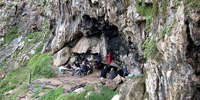 Blombos Cave is on the south coast of South Africa. About 20 square metres of the Middle Stone Age has been excavated to a depth of about 2 metres below the original surface. Dating by the optically stimulated luminescence (OSL) and thermoluminescence (TL) methods has provided occupation dates for each phase: these are about 73 000 BP for the M1 phase, about 80 000 BP for the M2 phase, and between 100 000 and 140 000 BP for the M3 phase. The evidence indicates periods of relatively brief occupation separated by long periods of non-occupation, including a separation between occupation during the Late Stone Age (LSA) and the Middle Stone Age. Bone tools, marine shell beads, and engraved ochre were found in the M1 phase, bone tools in the Upper M2 phase, and considerable quantities of ochre and associated ochre working tools in the M3 phase.
Blombos Cave is on the south coast of South Africa. About 20 square metres of the Middle Stone Age has been excavated to a depth of about 2 metres below the original surface. Dating by the optically stimulated luminescence (OSL) and thermoluminescence (TL) methods has provided occupation dates for each phase: these are about 73 000 BP for the M1 phase, about 80 000 BP for the M2 phase, and between 100 000 and 140 000 BP for the M3 phase. The evidence indicates periods of relatively brief occupation separated by long periods of non-occupation, including a separation between occupation during the Late Stone Age (LSA) and the Middle Stone Age. Bone tools, marine shell beads, and engraved ochre were found in the M1 phase, bone tools in the Upper M2 phase, and considerable quantities of ochre and associated ochre working tools in the M3 phase.
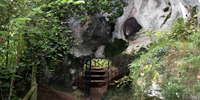 El Buxu Cave was discovered by chance in December 1916 by Cesáreo Cardin, an habitual collaborator in the archaeological digs of Hugo Obermaier and Conde de la Vega del Sella. The entrance is formed by an outer vestibule six metres wide and five metres deep, facing south-west. The original rock-shelter, however, was much larger, as is shown by the presence of numerous blocks of limestone which have collapsed from the roof, and the remains of a former floor, partially eroded away. This former rock-shelter would have faced south, situated 300 metres above present-day sea level, and 25 metres above the valley floor.
El Buxu Cave was discovered by chance in December 1916 by Cesáreo Cardin, an habitual collaborator in the archaeological digs of Hugo Obermaier and Conde de la Vega del Sella. The entrance is formed by an outer vestibule six metres wide and five metres deep, facing south-west. The original rock-shelter, however, was much larger, as is shown by the presence of numerous blocks of limestone which have collapsed from the roof, and the remains of a former floor, partially eroded away. This former rock-shelter would have faced south, situated 300 metres above present-day sea level, and 25 metres above the valley floor.
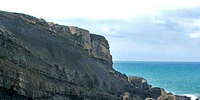 Caves and Rock Shelters on the North coast of Spain, including Cantabria and the caves and rock shelters of Mount Buciero, Covalanas Cave, and El Mirón.
Caves and Rock Shelters on the North coast of Spain, including Cantabria and the caves and rock shelters of Mount Buciero, Covalanas Cave, and El Mirón.
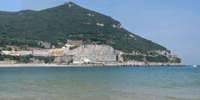
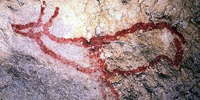 Covalanas cave in Cantabria, Spain, was first discovered to have art work in 1903. It is situated on the South-Western hillside of Pando mountain, near the cave of el Míron. Although the entrance is not huge, access is easy. From the entrance two galleries continue, though only one of them has palaeolithic decoration. In a deep zone of the gallery, and in a space less than 12 metres in length, the largest group of art in the cave is located. It has 22 figures, of which 18 are hinds , a characteristic animal in the Cantabrian decorated caves, as well as a horse, a reindeer and an aurochs. The paintings are between 20 000 and 14 400 years old.
Covalanas cave in Cantabria, Spain, was first discovered to have art work in 1903. It is situated on the South-Western hillside of Pando mountain, near the cave of el Míron. Although the entrance is not huge, access is easy. From the entrance two galleries continue, though only one of them has palaeolithic decoration. In a deep zone of the gallery, and in a space less than 12 metres in length, the largest group of art in the cave is located. It has 22 figures, of which 18 are hinds , a characteristic animal in the Cantabrian decorated caves, as well as a horse, a reindeer and an aurochs. The paintings are between 20 000 and 14 400 years old.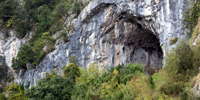 The archaeological cave site of El Mirón is located in the Rio Asón valley of eastern Cantabria, Spain. The cave opening is about 260 metres above sea level, and the cave opening is about 13 metres high, 8-16 metres wide, and 120 metres deep. El Mirón is remarkable for its long occupation history and thus for its long unbroken sequence of history and prehistory of Cantabria, Spain. The site includes human occupations between the Middle Paleolithic (ca 41 000 years ago) to AD 1400, including Mousterian, Early Upper Paleolithic, Solutrean, Magdalenian, Azilian, Mesolithic, Neolithic, Chalcolithic, and Bronze Age deposits.
The archaeological cave site of El Mirón is located in the Rio Asón valley of eastern Cantabria, Spain. The cave opening is about 260 metres above sea level, and the cave opening is about 13 metres high, 8-16 metres wide, and 120 metres deep. El Mirón is remarkable for its long occupation history and thus for its long unbroken sequence of history and prehistory of Cantabria, Spain. The site includes human occupations between the Middle Paleolithic (ca 41 000 years ago) to AD 1400, including Mousterian, Early Upper Paleolithic, Solutrean, Magdalenian, Azilian, Mesolithic, Neolithic, Chalcolithic, and Bronze Age deposits.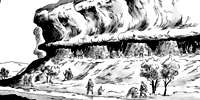
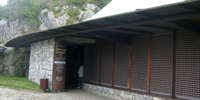 The Cueva de El Castillo, or the Cave of the Castle, is an archaeological site within the complex of the Caves of Monte Castillo, and is located in Puente Viesgo, in the province of Cantabria, Spain.
This cave was discovered in 1903 by Hermilio Alcalde del Río, the Spanish archaeologist, who was one of the pioneers in the study of the earliest cave paintings of Cantabria. In the time of the cave painters, the entrance to the cave was not as large as it is today, because it was enlarged by the excavations in the front of the caves. By way of the entrance one can access the different rooms in which Alcalde del Río found an extensive sequence of images. The paintings and other markings span from the Lower Palaeolithic to the Bronze Age, and even into the Middle Ages. There are over 150 figures already catalogued, including engravings of deer, complete with shadowing.
The Cueva de El Castillo, or the Cave of the Castle, is an archaeological site within the complex of the Caves of Monte Castillo, and is located in Puente Viesgo, in the province of Cantabria, Spain.
This cave was discovered in 1903 by Hermilio Alcalde del Río, the Spanish archaeologist, who was one of the pioneers in the study of the earliest cave paintings of Cantabria. In the time of the cave painters, the entrance to the cave was not as large as it is today, because it was enlarged by the excavations in the front of the caves. By way of the entrance one can access the different rooms in which Alcalde del Río found an extensive sequence of images. The paintings and other markings span from the Lower Palaeolithic to the Bronze Age, and even into the Middle Ages. There are over 150 figures already catalogued, including engravings of deer, complete with shadowing.
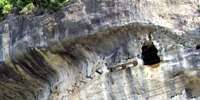 The Roc de Cazelle has been inhabited since prehistoric times, and the 25 000 year old Venus of Sereuil was found close by. It has been occupied almost continuously since. In the Middle Ages many of the caves were deepened and turned into strongholds during the wars of that time. In recent times the lower caverns were used as dwellings for farm owners and their staff, and the whole area has now been turned into displays for tourists to see how their ancestors lived.
The Roc de Cazelle has been inhabited since prehistoric times, and the 25 000 year old Venus of Sereuil was found close by. It has been occupied almost continuously since. In the Middle Ages many of the caves were deepened and turned into strongholds during the wars of that time. In recent times the lower caverns were used as dwellings for farm owners and their staff, and the whole area has now been turned into displays for tourists to see how their ancestors lived.
 Gudenushöhle (Gudenus cave) is a very important Neanderthal site situated 20 km northwest of the city of Krems. The site is close to the River Danube. The cave is 22 m long with a width of 2 to 3 m. The archaeological deposit has yielded bones of numerous animals, including Woolly mammoth, Woolly rhinoceros, Aurochs, Chamois, Reindeer, and Red deer. Human artefacts include numerous flint implements beginning with the Mousterian (i.e. Neanderthals) of the Middle Palaeolithic, although there is no certainty as to the dating. There is also an Upper Palaeolithic, Magdalenian, assemblage including an engraved reindeer bone, and a fragment of a bone flute dated to about 18 000 – 12 000 BP.
Gudenushöhle (Gudenus cave) is a very important Neanderthal site situated 20 km northwest of the city of Krems. The site is close to the River Danube. The cave is 22 m long with a width of 2 to 3 m. The archaeological deposit has yielded bones of numerous animals, including Woolly mammoth, Woolly rhinoceros, Aurochs, Chamois, Reindeer, and Red deer. Human artefacts include numerous flint implements beginning with the Mousterian (i.e. Neanderthals) of the Middle Palaeolithic, although there is no certainty as to the dating. There is also an Upper Palaeolithic, Magdalenian, assemblage including an engraved reindeer bone, and a fragment of a bone flute dated to about 18 000 – 12 000 BP. 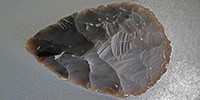 The earliest evidence of human life in Schleswig-Holstein occurred 120 000 years ago. At Drelsdorf in the district of Nordfriesland, the stone tools of a group of Neanderthals, who camped here 120 000 years ago, were discovered. In the subsequent ice age, the site was located in front of the ice sheet edge. The extremely cold climatic conditions have changed the surface of the artefacts in a characteristic way, giving them a patina they would not otherwise have.
The earliest evidence of human life in Schleswig-Holstein occurred 120 000 years ago. At Drelsdorf in the district of Nordfriesland, the stone tools of a group of Neanderthals, who camped here 120 000 years ago, were discovered. In the subsequent ice age, the site was located in front of the ice sheet edge. The extremely cold climatic conditions have changed the surface of the artefacts in a characteristic way, giving them a patina they would not otherwise have.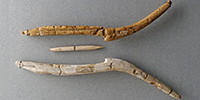 Ice Age Hunters become farmers: Schleswig-Holstein on the way to the Neolithic. The Schleswig-Holstein region has a long history of settlement, from neanderthal times to the present day. The period from that of the reindeer hunters, who advanced into the area after the ice started to retreat after 20 000 BP, through to the end of the Mesolithic, was particularly interesting.
Ice Age Hunters become farmers: Schleswig-Holstein on the way to the Neolithic. The Schleswig-Holstein region has a long history of settlement, from neanderthal times to the present day. The period from that of the reindeer hunters, who advanced into the area after the ice started to retreat after 20 000 BP, through to the end of the Mesolithic, was particularly interesting. 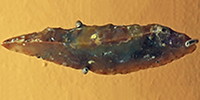 The Châtelperronian is a proposed industry of the Upper Palaeolithic, the existence of which is debated. It derives its name from the site of la Grotte des Fées, in Châtelperron, Allier, France. It is preceded by the Mousterian industry, and lasted from circa 45 000 to circa 40 000 BP. The industry produced denticulate stone tools and also a distinctive flint knife with a single cutting edge and a blunt, curved back. It is followed by the Aurignacian industry. Scholars who question its existence claim that it is an archaeological mix of Mousterian and Aurignacian layers.
The Châtelperronian is a proposed industry of the Upper Palaeolithic, the existence of which is debated. It derives its name from the site of la Grotte des Fées, in Châtelperron, Allier, France. It is preceded by the Mousterian industry, and lasted from circa 45 000 to circa 40 000 BP. The industry produced denticulate stone tools and also a distinctive flint knife with a single cutting edge and a blunt, curved back. It is followed by the Aurignacian industry. Scholars who question its existence claim that it is an archaeological mix of Mousterian and Aurignacian layers.
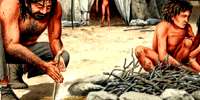
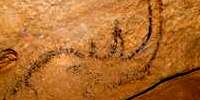
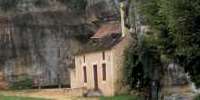 Les Combarelles in the Dordogne, with more than 600 images on its walls, most of them engraved, is considered to be one of the major sanctuaries of Magdalenian culture. This extraordinary site was discovered in 1901. Beyond the entrance of the cave two galleries diverge. The largest one, now open to the public, is a narrow and winding passage, following a zig zag pattern for more than 240 metres. The animals represented are finely engraved. A diverse fauna is represented, including horses, reindeer, ibex, mammoths, rhinoceros, bears, lions and a few bisons and aurochs.
Les Combarelles in the Dordogne, with more than 600 images on its walls, most of them engraved, is considered to be one of the major sanctuaries of Magdalenian culture. This extraordinary site was discovered in 1901. Beyond the entrance of the cave two galleries diverge. The largest one, now open to the public, is a narrow and winding passage, following a zig zag pattern for more than 240 metres. The animals represented are finely engraved. A diverse fauna is represented, including horses, reindeer, ibex, mammoths, rhinoceros, bears, lions and a few bisons and aurochs.
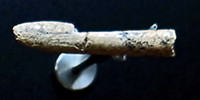 The site of Combe Saunière consists of an ensemble of caves, the principal one containing a long sequence of Middle and Upper Palaeolithic deposits. The cave is situated in an open environment with small valleys and a few low cliffs with habitable caves dispersed along the river edges. The Solutrean levels are dated to approximately 19 000 BP. The oldest known propulseur or spear thrower, dating from the upper Solutrean, was discovered in layer 4 of Combe-Saunière.
The site of Combe Saunière consists of an ensemble of caves, the principal one containing a long sequence of Middle and Upper Palaeolithic deposits. The cave is situated in an open environment with small valleys and a few low cliffs with habitable caves dispersed along the river edges. The Solutrean levels are dated to approximately 19 000 BP. The oldest known propulseur or spear thrower, dating from the upper Solutrean, was discovered in layer 4 of Combe-Saunière.
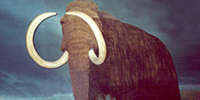 La Cotte de St Brelade is a Neandertal site in St Brelade, Jersey. Neanderthals lived there from around 238 000 years ago until between 100 000 and 40 000 years ago - making it the earliest known the occupation of the Channel Islands by a hominin species, and also possibly one of the last Neanderthal sites in northwestern Europe. At that time, with sea levels below those at present, Jersey was part of Normandy, a peninsula jutting out from the coast. After the last Ice Age the sea rose again, separating Jersey from the mainland.
La Cotte de St Brelade is a Neandertal site in St Brelade, Jersey. Neanderthals lived there from around 238 000 years ago until between 100 000 and 40 000 years ago - making it the earliest known the occupation of the Channel Islands by a hominin species, and also possibly one of the last Neanderthal sites in northwestern Europe. At that time, with sea levels below those at present, Jersey was part of Normandy, a peninsula jutting out from the coast. After the last Ice Age the sea rose again, separating Jersey from the mainland.
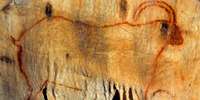 The Grottes de Cougnac caves are near Gourdon, Lot. The site consists of two caves separated by 200 metres. The first contains many concretions, some very fine, called soda straws. The second is a decorated cave from the Paleolithic. The cave has many prehistoric paintings dated to the upper Paleolithic. Depictions include deer, megaceros, the ibex, and mammoths as well as various schematic human figures. The paintings corresponded to at least two clearly distinct phases: one around 25 000 BP, the other about 14 000 years before the present.
The Grottes de Cougnac caves are near Gourdon, Lot. The site consists of two caves separated by 200 metres. The first contains many concretions, some very fine, called soda straws. The second is a decorated cave from the Paleolithic. The cave has many prehistoric paintings dated to the upper Paleolithic. Depictions include deer, megaceros, the ibex, and mammoths as well as various schematic human figures. The paintings corresponded to at least two clearly distinct phases: one around 25 000 BP, the other about 14 000 years before the present.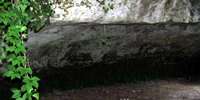
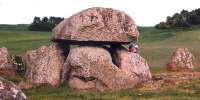
 The complex of Gravettian stations near Milovice lies in a side valley without a view of the Dyje (Thaya) River, aside from the main settlement area, below Pálava. The stations are part of the complex including Pavlov and Dolní Věstonice. The site is notable for the huge amount of accumulated bones of mammoths for which the valley provided extremely suitable conditions for hunting.
The complex of Gravettian stations near Milovice lies in a side valley without a view of the Dyje (Thaya) River, aside from the main settlement area, below Pálava. The stations are part of the complex including Pavlov and Dolní Věstonice. The site is notable for the huge amount of accumulated bones of mammoths for which the valley provided extremely suitable conditions for hunting.
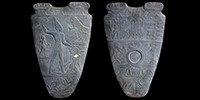
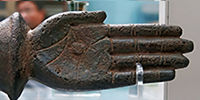
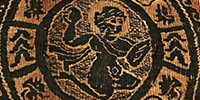 Coptic textiles, whose production began in the third and fourth centuries AD in Egypt, were hand woven with unbleached linen warps and dyed wool wefts and frequently featured woollen tapestry decoration. Men's garments were done in sedate colours with monochrome interlace motifs while women favoured floral and figural decorations.
Coptic textiles, whose production began in the third and fourth centuries AD in Egypt, were hand woven with unbleached linen warps and dyed wool wefts and frequently featured woollen tapestry decoration. Men's garments were done in sedate colours with monochrome interlace motifs while women favoured floral and figural decorations. 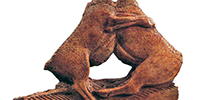 La Grotte d'Enlène, 200 metres long, is the longest known Volp cave, and was the subject of numerous excavations during the second half of the nineteenth century until the Second World War. However, it has long been ignored because the main findings of movable art that were made there have always been attributed to lesTrois Frères, with which it communicates by a narrow passage. However, one of the major interests of Enlène is that it is a cave-habitat with a high occupancy rate during the Magdalenian IV, while Les Trois-Frères was a cave-shrine and has never been used as a habitat, at least in the long term and delivered little movable art remains.
La Grotte d'Enlène, 200 metres long, is the longest known Volp cave, and was the subject of numerous excavations during the second half of the nineteenth century until the Second World War. However, it has long been ignored because the main findings of movable art that were made there have always been attributed to lesTrois Frères, with which it communicates by a narrow passage. However, one of the major interests of Enlène is that it is a cave-habitat with a high occupancy rate during the Magdalenian IV, while Les Trois-Frères was a cave-shrine and has never been used as a habitat, at least in the long term and delivered little movable art remains.
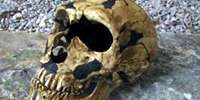
 Several teeth from an adult and children, and the fossilised mandible of a diminutive species of early human that lived 700 000 years ago have been discovered on the Indonesian island of Flores. It is thought to be the direct ancestor of the Hobbit of Flores, the 1.1 metre tall human species that lived around 50 000 years ago.
Several teeth from an adult and children, and the fossilised mandible of a diminutive species of early human that lived 700 000 years ago have been discovered on the Indonesian island of Flores. It is thought to be the direct ancestor of the Hobbit of Flores, the 1.1 metre tall human species that lived around 50 000 years ago.
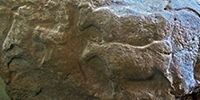 Fourneau du Diable is a prominent cliff face on the road leading to the east from the village of Bourdeilles, beside the river Dronne. It was once a settlement in the late Solutrean, and lithic and bone industries from that time were excavated there, but the most important discovery was of a large limestone block with several well executed sculptures of aurochs carved on its face.
Fourneau du Diable is a prominent cliff face on the road leading to the east from the village of Bourdeilles, beside the river Dronne. It was once a settlement in the late Solutrean, and lithic and bone industries from that time were excavated there, but the most important discovery was of a large limestone block with several well executed sculptures of aurochs carved on its face.
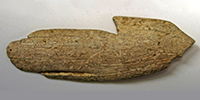 La grotte des Fées is located in the Moron valley near the cave of Pair-non-Pair. It is a small cave that has its opening at the top of a limestone cliff. F. Daleau undertook extensive excavations there and collected a handsome middle and upper Magdalenian lithic industry as well as faunal remains. The Roc de Marcamps was discovered just below the prehistoric cave of la grotte des Fées. It is a Magdalenien archaeological site. Both these sites are very close to the cave of Pair-non-Pair.
La grotte des Fées is located in the Moron valley near the cave of Pair-non-Pair. It is a small cave that has its opening at the top of a limestone cliff. F. Daleau undertook extensive excavations there and collected a handsome middle and upper Magdalenian lithic industry as well as faunal remains. The Roc de Marcamps was discovered just below the prehistoric cave of la grotte des Fées. It is a Magdalenien archaeological site. Both these sites are very close to the cave of Pair-non-Pair.
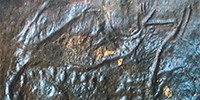 The small Grotte de la Forêt lies between Moustier and Tursac. It is at the junction of the valley of Fontpeyrine and the Vézère, between the cliffs of Reignac upstream and Lespinasse downstream. It houses a magnificently engraved reindeer, with its head erect, the antlers thrown backwards, the limbs in vertical extension. Details abound: eye underlined with a curved line, lower lip slightly turned down, nostrils, punctuated flank, as well as an abundant mane shown by parallel streaks, attributes of a male subject.
The small Grotte de la Forêt lies between Moustier and Tursac. It is at the junction of the valley of Fontpeyrine and the Vézère, between the cliffs of Reignac upstream and Lespinasse downstream. It houses a magnificently engraved reindeer, with its head erect, the antlers thrown backwards, the limbs in vertical extension. Details abound: eye underlined with a curved line, lower lip slightly turned down, nostrils, punctuated flank, as well as an abundant mane shown by parallel streaks, attributes of a male subject.
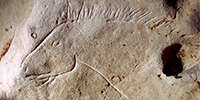 The 200 engravings of the narrow Grotte de Gabillou , discovered in 1941, indicate a Magdalenian age. It is located in the valley of l'Isle, near Mussidan, France. The cave is in a sandy Maastrichtian limestone. Its northwestern end, once expanded by man and used as a storeroom, is obscured by a building. It was discovered in 1941 by M. Charmarty and M. Truffier.
The 200 engravings of the narrow Grotte de Gabillou , discovered in 1941, indicate a Magdalenian age. It is located in the valley of l'Isle, near Mussidan, France. The cave is in a sandy Maastrichtian limestone. Its northwestern end, once expanded by man and used as a storeroom, is obscured by a building. It was discovered in 1941 by M. Charmarty and M. Truffier.
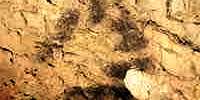
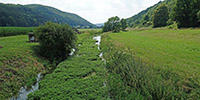 A number of world-wide famous caves, such as the Geissenklösterle, Brillenhöhle, Grosse Grotte, Sirgenstein and Hohle Fels cave, can be reached from Blaubeuren on a signed hiking path. I visited the area in the summer of 2018, and have added many photographs and a lot of extra text.
A number of world-wide famous caves, such as the Geissenklösterle, Brillenhöhle, Grosse Grotte, Sirgenstein and Hohle Fels cave, can be reached from Blaubeuren on a signed hiking path. I visited the area in the summer of 2018, and have added many photographs and a lot of extra text.
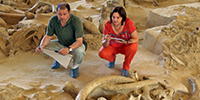 Gontsy was the first Upper Palaeolithic site to be found on the central Russian Plain, in 1871, and is the site of a series of mammoth bone huts. Gontsy is located on the right (southern) promontory formed by the second terrace of the Udaï River. The promontory faces north and is bordered today, as it was at the time of occupation, by ravines and the floodplain. It has been extremely well researched by Lyudmila Iakovleva and François Djindjian, who have not only described the site in a professional manner, they have done excellent work in teasing out exactly why and how the phenomenon of mammoth bone huts in the Dniepr plain occurred. Their paper entitled L'habitat à cabanes en os de mammouths de Gontsy (Ukraine) is a masterpiece.
Gontsy was the first Upper Palaeolithic site to be found on the central Russian Plain, in 1871, and is the site of a series of mammoth bone huts. Gontsy is located on the right (southern) promontory formed by the second terrace of the Udaï River. The promontory faces north and is bordered today, as it was at the time of occupation, by ravines and the floodplain. It has been extremely well researched by Lyudmila Iakovleva and François Djindjian, who have not only described the site in a professional manner, they have done excellent work in teasing out exactly why and how the phenomenon of mammoth bone huts in the Dniepr plain occurred. Their paper entitled L'habitat à cabanes en os de mammouths de Gontsy (Ukraine) is a masterpiece.
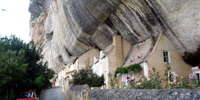
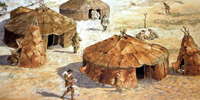 The open-air site of Gönnersdorf was discovered in 1968, during the construction of a cellar for a private house. After digging through the pumice, bones and stone slabs appeared and it became clear that it was a location of the late ice age. A wonderful inventory of ice age life was unearthed: pulverised red hematite, a fireplace, evidence of habitation constructions, a lithic industry, statuettes of ivory and antler, engraved slate plaquettes, jet beads, perforated animal teeth and a well preserved faunal record. Based on these finds it was evident that Gönnersdorf was a site of huge importance.
The open-air site of Gönnersdorf was discovered in 1968, during the construction of a cellar for a private house. After digging through the pumice, bones and stone slabs appeared and it became clear that it was a location of the late ice age. A wonderful inventory of ice age life was unearthed: pulverised red hematite, a fireplace, evidence of habitation constructions, a lithic industry, statuettes of ivory and antler, engraved slate plaquettes, jet beads, perforated animal teeth and a well preserved faunal record. Based on these finds it was evident that Gönnersdorf was a site of huge importance.
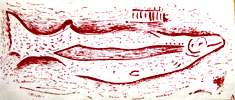
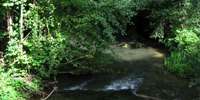
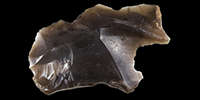 Maarten Perdeck has collected more than 8 000 pieces of worked flint and 300 retouched tools on a Hamburgian site in the Netherlands, an upper palaeolithic reindeer hunter site from the end of the Weichselien. The tools reflect the type of the site, a camp for reindeer hunters, and consist mostly of scrapers, chisels, and drilling tools. The artefacts have been superbly photographed by Christophe Brochard. These superb specimens are mute testimony to the lives of the reindeer hunters who used the site many thousands of years ago, at a time when the ice caps were not far away from the Netherlands, where these pieces were were found in a ploughed field over a period of twenty years.
Maarten Perdeck has collected more than 8 000 pieces of worked flint and 300 retouched tools on a Hamburgian site in the Netherlands, an upper palaeolithic reindeer hunter site from the end of the Weichselien. The tools reflect the type of the site, a camp for reindeer hunters, and consist mostly of scrapers, chisels, and drilling tools. The artefacts have been superbly photographed by Christophe Brochard. These superb specimens are mute testimony to the lives of the reindeer hunters who used the site many thousands of years ago, at a time when the ice caps were not far away from the Netherlands, where these pieces were were found in a ploughed field over a period of twenty years. 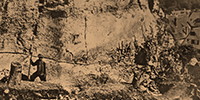 Heidenschmiede - below the castle in Heidenheim, the rock face 35 metres above the valley floor forms a small overhang just large enough to create an 8 square metre abri, or rock shelter. In spite of its small size, this rock shelter was a place our ancestors went to time and again. This may have been because of the splendid view across the wide, open valley of the Brenz River, which provided an excellent hunting ground.
Heidenschmiede - below the castle in Heidenheim, the rock face 35 metres above the valley floor forms a small overhang just large enough to create an 8 square metre abri, or rock shelter. In spite of its small size, this rock shelter was a place our ancestors went to time and again. This may have been because of the splendid view across the wide, open valley of the Brenz River, which provided an excellent hunting ground.
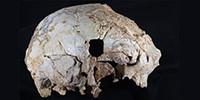 The recently found oldest fossil human cranium in Portugal marks an important contribution to the knowledge of human evolution during the middle Pleistocene in Europe and to the origin of the Neandertals. This cranium of Homo heidelbergensis represents the westernmost human fossil ever found in Europe during the middle Pleistocene epoch and one of the earliest on this continent to be associated with the Acheulean stone tool industry.
The recently found oldest fossil human cranium in Portugal marks an important contribution to the knowledge of human evolution during the middle Pleistocene in Europe and to the origin of the Neandertals. This cranium of Homo heidelbergensis represents the westernmost human fossil ever found in Europe during the middle Pleistocene epoch and one of the earliest on this continent to be associated with the Acheulean stone tool industry.
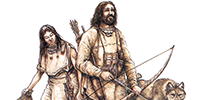
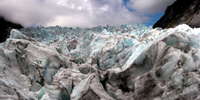 Ice Age maps: The Causes of the end of the last Ice Age: The last great ice age began around 120 000 years ago. One massive ice sheet, more than 3 kilometres thick in places, grew in fits and starts until it covered almost all of Canada and stretched down as far as Manhattan. Then, 20 000 years ago, a great thaw began. Over the following 10 000 years, the average global temperature rose by 3.5° C and most of the ice melted. Rising seas swallowed up low-lying areas such as the English Channel and North Sea, forcing our ancestors to abandon many settlements.
Ice Age maps: The Causes of the end of the last Ice Age: The last great ice age began around 120 000 years ago. One massive ice sheet, more than 3 kilometres thick in places, grew in fits and starts until it covered almost all of Canada and stretched down as far as Manhattan. Then, 20 000 years ago, a great thaw began. Over the following 10 000 years, the average global temperature rose by 3.5° C and most of the ice melted. Rising seas swallowed up low-lying areas such as the English Channel and North Sea, forcing our ancestors to abandon many settlements. 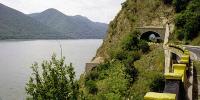 Per's Iron Gates photos
Per's Iron Gates photos
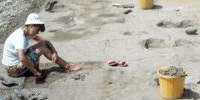 Schela Cladovei
Schela Cladovei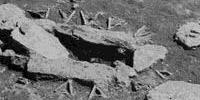 Padina
Padina
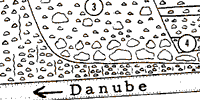 Vlasac
Vlasac
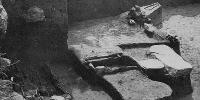 Hajducka Vodenica
Hajducka Vodenica
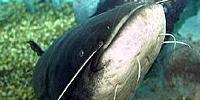 Animals of the Iron Gates
Animals of the Iron Gates
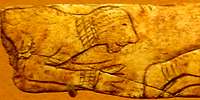 Les Grottes d'Isturitz et d'Oxocelhaya- The Caves of Isturitz and Oxocelhaya date back to the Mousterian, about 80 000 BC, and there is evidence of Neanderthals living there, but occupation extended to almost the end of the ice age in 10 000 BC. It is in the Atlantic Pyrennees region. The network consists of three caves, the upper Isturitz Cave, then 20 metres below, Oxocelhaya Cave with calcite concretions and finally the Erberua cave where the Arberoue river now runs. Isturitz is famous for the discovery of a series of important prehistoric flutes dating from the Upper Paleolithic (Aurignacian to the Magdalenian), about 35 000 to 10 000 BC.
Les Grottes d'Isturitz et d'Oxocelhaya- The Caves of Isturitz and Oxocelhaya date back to the Mousterian, about 80 000 BC, and there is evidence of Neanderthals living there, but occupation extended to almost the end of the ice age in 10 000 BC. It is in the Atlantic Pyrennees region. The network consists of three caves, the upper Isturitz Cave, then 20 metres below, Oxocelhaya Cave with calcite concretions and finally the Erberua cave where the Arberoue river now runs. Isturitz is famous for the discovery of a series of important prehistoric flutes dating from the Upper Paleolithic (Aurignacian to the Magdalenian), about 35 000 to 10 000 BC.
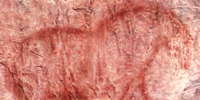 Kapova Cave is a famous Russian Palaeolithic cave. It has painted mammoths, rhinos, horses and a bison on its walls. The cave has two levels, the paintings are mainly in the upper level at some distance from the entrance. The charcoal was dated with the 14C method to be 14 680 ±150 years old. Among the animal bones were cave bear bones. Kapova Cave is a complex natural monument with multiple grottos and halls connected by passages on various levels. The walls of the cave are rich in calcite deposits of all kinds of forms and sizes. An underground river flows out of the cave and forms the Blue Lake at its entrance.
Kapova Cave is a famous Russian Palaeolithic cave. It has painted mammoths, rhinos, horses and a bison on its walls. The cave has two levels, the paintings are mainly in the upper level at some distance from the entrance. The charcoal was dated with the 14C method to be 14 680 ±150 years old. Among the animal bones were cave bear bones. Kapova Cave is a complex natural monument with multiple grottos and halls connected by passages on various levels. The walls of the cave are rich in calcite deposits of all kinds of forms and sizes. An underground river flows out of the cave and forms the Blue Lake at its entrance.
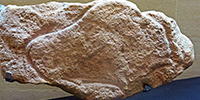 Les Jamblancs is an upper Solutrean / Magdalenian site in the Bayac-Bourniquel area. It is notable for its stone engravings and tool kit. The site consists mainly of the deposits at abris below a cliff, and is important for the study of the old Magdalenian, or Badegoulian. However much of the material remains unpublished.
Les Jamblancs is an upper Solutrean / Magdalenian site in the Bayac-Bourniquel area. It is notable for its stone engravings and tool kit. The site consists mainly of the deposits at abris below a cliff, and is important for the study of the old Magdalenian, or Badegoulian. However much of the material remains unpublished.
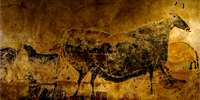 Lascaux Cave is famous for its Paleolithic cave paintings. The paintings are estimated to be 17 300 years old. They primarily consist of images of large animals, most of which are known from fossil evidence to have lived in the area at the time. The cave was discovered on September 12, 1940 by four teenagers. The cave complex was opened to the public in 1948. Rooms in the cave include The Hall of the Bulls, the Passageway, the Shaft, the Nave, the Apse, and the Chamber of Felines. Lascaux II, a replica of two of the cave halls — the Great Hall of the Bulls and the Painted Gallery — was opened in 1983, 200 metres from the original.
Lascaux Cave is famous for its Paleolithic cave paintings. The paintings are estimated to be 17 300 years old. They primarily consist of images of large animals, most of which are known from fossil evidence to have lived in the area at the time. The cave was discovered on September 12, 1940 by four teenagers. The cave complex was opened to the public in 1948. Rooms in the cave include The Hall of the Bulls, the Passageway, the Shaft, the Nave, the Apse, and the Chamber of Felines. Lascaux II, a replica of two of the cave halls — the Great Hall of the Bulls and the Painted Gallery — was opened in 1983, 200 metres from the original.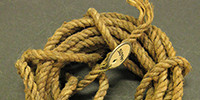 l'Abbé Glory found, in 1953, the remains of a rope at Lascaux cave. It was found at the edge of the deep and high Southern Shaft, a significant barrier dividing the Chamber of Felines into two roughly equal halves, although most of the artwork is on the entrance side of the shaft. It would appear that the rope was used to descend the shaft, while a long wooden pole found on the floor of the shaft was used to ascend the wall on the other side, to gain access to the rest of the chamber.
l'Abbé Glory found, in 1953, the remains of a rope at Lascaux cave. It was found at the edge of the deep and high Southern Shaft, a significant barrier dividing the Chamber of Felines into two roughly equal halves, although most of the artwork is on the entrance side of the shaft. It would appear that the rope was used to descend the shaft, while a long wooden pole found on the floor of the shaft was used to ascend the wall on the other side, to gain access to the rest of the chamber.
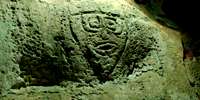 Lene Hara Cave has provided evidence that Timor has been occupied by humans for 35 000 years BP. In May 2009, carved faces were found high in the cave, and have since been dated to 10 000 years. Paintings in the caves of Ile Kére Kére, of which Lene Hara is a part, are believed to be 2 000 to 6 000 years old.
Lene Hara Cave has provided evidence that Timor has been occupied by humans for 35 000 years BP. In May 2009, carved faces were found high in the cave, and have since been dated to 10 000 years. Paintings in the caves of Ile Kére Kére, of which Lene Hara is a part, are believed to be 2 000 to 6 000 years old.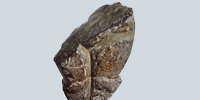 The Linsenberg - Mainz archaeological site occupies a height overlooking the city of Mainz. It is an open air site, and is buried in loess, the archaeological layer lying just above a bed of clay. Around 1920 E. Neeb and O. Schmidtgen collected two fragments of statues made of greenish sandstone, which are kept at the Archaeological Museum in Mainz. The first, with a height of 36 mm, includes only the lower limbs, with feet represented by a blunt point, and part of the pelvis, with the pubic triangle.
The Linsenberg - Mainz archaeological site occupies a height overlooking the city of Mainz. It is an open air site, and is buried in loess, the archaeological layer lying just above a bed of clay. Around 1920 E. Neeb and O. Schmidtgen collected two fragments of statues made of greenish sandstone, which are kept at the Archaeological Museum in Mainz. The first, with a height of 36 mm, includes only the lower limbs, with feet represented by a blunt point, and part of the pelvis, with the pubic triangle.
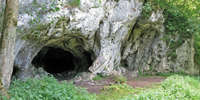 Lonetal Sites, including Neanderthal and Middle Paleolithic sites in the Swabian Alb near the city of Ulm, were important areas of ice age art. The sites occur in the Schwaebische Alb (Swabian Alb), in the valleys of the Ach and Blau river near Blaubeuren, where the famous lion/human figure was found in the Hohlenstein-Stadel cave.
Lonetal Sites, including Neanderthal and Middle Paleolithic sites in the Swabian Alb near the city of Ulm, were important areas of ice age art. The sites occur in the Schwaebische Alb (Swabian Alb), in the valleys of the Ach and Blau river near Blaubeuren, where the famous lion/human figure was found in the Hohlenstein-Stadel cave.
 Lucy, Australopithecus afarensis, is an extinct hominid that lived between 3.9 and 2.9 million years ago. Australopithecus afarensis was slenderly built, like the younger Australopithecus africanus. It is thought that Australopithecus afarensis was more closely related to the genus Homo (which includes the modern human species Homo sapiens ), whether as a direct ancestor or a close relative of an unknown ancestor, than any other known primate from the same time.
Lucy, Australopithecus afarensis, is an extinct hominid that lived between 3.9 and 2.9 million years ago. Australopithecus afarensis was slenderly built, like the younger Australopithecus africanus. It is thought that Australopithecus afarensis was more closely related to the genus Homo (which includes the modern human species Homo sapiens ), whether as a direct ancestor or a close relative of an unknown ancestor, than any other known primate from the same time.  The Mal'ta - Buret' venuses and culture in Siberia - the site of Mal'ta, is composed of a series of subterranean houses made of large animal bones and reindeer antler which had likely been covered with animal skins and sod to protect inhabitants from the severe, prevailing northerly winds. Among the artistic accomplishments evident at Mal'ta are the remains of expertly carved bone, ivory, and antler objects. Figurines of birds and human females are the most commonly found items.
The Mal'ta - Buret' venuses and culture in Siberia - the site of Mal'ta, is composed of a series of subterranean houses made of large animal bones and reindeer antler which had likely been covered with animal skins and sod to protect inhabitants from the severe, prevailing northerly winds. Among the artistic accomplishments evident at Mal'ta are the remains of expertly carved bone, ivory, and antler objects. Figurines of birds and human females are the most commonly found items. 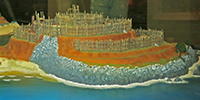 The word pā refers to hill forts - fortified settlements with palisades and defensive terraces - and also to fortified villages. Pā are mainly in the North Island of New Zealand, north of Lake Taupo. Over 5000 sites have been located, photographed and examined although few have been subject to detailed analysis.
The word pā refers to hill forts - fortified settlements with palisades and defensive terraces - and also to fortified villages. Pā are mainly in the North Island of New Zealand, north of Lake Taupo. Over 5000 sites have been located, photographed and examined although few have been subject to detailed analysis.  The cave of La Marche (Municipality of Lussac-les-Châteaux) can be considered as one of the most important archaeological sites for stone engravings. When French scientist Léon Péricard excavated La Marche between 1937 and 1942, he catalogued more than 1 500 slabs of limestone that had been placed carefully on the floor. Many of these have been engraved with human figures. Some can only be seen after careful study, and the painstaking removal of extraneous lines on the drawings made.
The cave of La Marche (Municipality of Lussac-les-Châteaux) can be considered as one of the most important archaeological sites for stone engravings. When French scientist Léon Péricard excavated La Marche between 1937 and 1942, he catalogued more than 1 500 slabs of limestone that had been placed carefully on the floor. Many of these have been engraved with human figures. Some can only be seen after careful study, and the painstaking removal of extraneous lines on the drawings made.
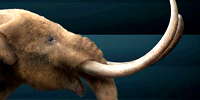 The Manis Mastodon - A newly analysed mastodon rib bone shows that Native Americans were using bone-pointed weapons to take down big game nearly a thousand years earlier than thought, according to a new study. Images of the rib show a broken bone projectile point still stuck where a hunter drove it in 13 800 years ago.
The rib was found near the town of Sequim on Washington’s Olympic Peninsula, in the late 1970s. Radiocarbon analysis, DNA samples, genetics work, and other modern techniques recently revealed its true age.
The Manis Mastodon - A newly analysed mastodon rib bone shows that Native Americans were using bone-pointed weapons to take down big game nearly a thousand years earlier than thought, according to a new study. Images of the rib show a broken bone projectile point still stuck where a hunter drove it in 13 800 years ago.
The rib was found near the town of Sequim on Washington’s Olympic Peninsula, in the late 1970s. Radiocarbon analysis, DNA samples, genetics work, and other modern techniques recently revealed its true age. 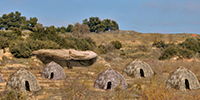 An engraved object recently found at the site of Molí del Salt in Spain and dated to the end of the Upper Paleolithic, about 13 800 BP, may show a hunter-gatherer campsite. The site location is privileged so far as mobility and resource distribution are concerned. On the one hand, the Francolí valley is a natural passage linking the Ebro basin and the coastal Mediterranean regions. On the other hand, it is an ecotone between the plain of the Ebro basin and the mountain domain of the Prades Mountains, 4 km south of the site. In addition, good-quality flint outcrops are common in the region.
An engraved object recently found at the site of Molí del Salt in Spain and dated to the end of the Upper Paleolithic, about 13 800 BP, may show a hunter-gatherer campsite. The site location is privileged so far as mobility and resource distribution are concerned. On the one hand, the Francolí valley is a natural passage linking the Ebro basin and the coastal Mediterranean regions. On the other hand, it is an ecotone between the plain of the Ebro basin and the mountain domain of the Prades Mountains, 4 km south of the site. In addition, good-quality flint outcrops are common in the region.
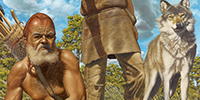 In 1914 stone quarry workers in Bonn-Oberkassel discovered two human skeletons, bones from a dog, and two works of art made of bones and antlers. The combination of a double burial for humans and art and one of the oldest domestic dogs in the world, unique in Central Europe of around 14 000 years ago, makes this ensemble of findings one of the most important sources for the late Ice Age.
In 1914 stone quarry workers in Bonn-Oberkassel discovered two human skeletons, bones from a dog, and two works of art made of bones and antlers. The combination of a double burial for humans and art and one of the oldest domestic dogs in the world, unique in Central Europe of around 14 000 years ago, makes this ensemble of findings one of the most important sources for the late Ice Age.
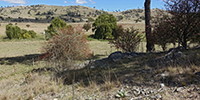 The Salisbury axe quarry is in the Armidale/Uralla area of northern NSW Australia, and consists of an outcrop of vitrified (welded) tuff which has been used as a quarry for the blanks for ground axe heads by the local indigenous population for ten thousand years, since the end of the last ice age. The method of quarrying was thermal shock using fire to spall off large blanks which were subsequently worked into rough axe heads by knapping techniques, and then ground to a final shape and edge.
The Salisbury axe quarry is in the Armidale/Uralla area of northern NSW Australia, and consists of an outcrop of vitrified (welded) tuff which has been used as a quarry for the blanks for ground axe heads by the local indigenous population for ten thousand years, since the end of the last ice age. The method of quarrying was thermal shock using fire to spall off large blanks which were subsequently worked into rough axe heads by knapping techniques, and then ground to a final shape and edge.
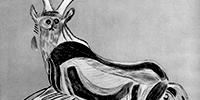 The Cave of Trois-Frères is a cave 427 metres long in southwestern France famous for its cave paintings. One of these, called 'The Sorcerer' is as familiar as any art in the more famous cave of Lascaux. The cave is part of a single cave-complex with the Tuc d'Audoubert, both galleries formed by the Volp River. The cave art appears to date to approximately 15 000 BP. The cave is named for the three sons of Comte Bégouen who discovered it in 1914. The drawings of the cave were made famous in the publications of the Abbé Henri Breuil.
The Cave of Trois-Frères is a cave 427 metres long in southwestern France famous for its cave paintings. One of these, called 'The Sorcerer' is as familiar as any art in the more famous cave of Lascaux. The cave is part of a single cave-complex with the Tuc d'Audoubert, both galleries formed by the Volp River. The cave art appears to date to approximately 15 000 BP. The cave is named for the three sons of Comte Bégouen who discovered it in 1914. The drawings of the cave were made famous in the publications of the Abbé Henri Breuil.
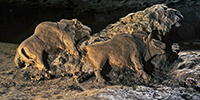 Tuc d'Audoubert, 640 metres long, may only be accessed via the stream, the Volp, which includes two impassable siphons. The cave of Tuc Audoubert was discovered by the sons of Count Henri Bégouën in 1912. Having been to Mas d'Azil, during the summer holidays of 1912, July 20, they decided to explore the resurgence of Volp using a raft they made, and thus discovered the cave of Tuc d'Audoubert and the first engravings. A prehistorian, Emile Cartailhac, a family friend, was called immediately and authenticated the drawings. On 10 October, through a narrow gap which became known as the catflap, with the help of their friend François Camel, they penetrated the upper galleries at the bottom of which awaited the clay bisons!
Tuc d'Audoubert, 640 metres long, may only be accessed via the stream, the Volp, which includes two impassable siphons. The cave of Tuc Audoubert was discovered by the sons of Count Henri Bégouën in 1912. Having been to Mas d'Azil, during the summer holidays of 1912, July 20, they decided to explore the resurgence of Volp using a raft they made, and thus discovered the cave of Tuc d'Audoubert and the first engravings. A prehistorian, Emile Cartailhac, a family friend, was called immediately and authenticated the drawings. On 10 October, through a narrow gap which became known as the catflap, with the help of their friend François Camel, they penetrated the upper galleries at the bottom of which awaited the clay bisons!
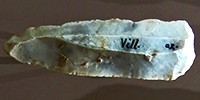 l'abri Villepin lies just downstream of the important site of l'abri de la Madeleine, itself just downstream of the Medieval village of La Madeleine. L'abri Villepin serves as the reference site for the definition of the end of the Magdalenian, and includes both Magdalenian and Azilian deposits and artefacts, including double barbed harpoon heads, double bevelled spear points, and works of art engraved on pebbles.
l'abri Villepin lies just downstream of the important site of l'abri de la Madeleine, itself just downstream of the Medieval village of La Madeleine. L'abri Villepin serves as the reference site for the definition of the end of the Magdalenian, and includes both Magdalenian and Azilian deposits and artefacts, including double barbed harpoon heads, double bevelled spear points, and works of art engraved on pebbles.
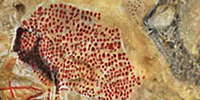 Marsoulas - La Grotte de Marsoulas, near Salies (Haute-Garonne), is formed by layers of limestone raised vertically against other layers which then buttress each other. It is the result of a fault. Around 1885, the Abbé Cau-Durban, archaeologist from Ariege, found the floor consisting of carbonaceous ash, animal bones, and worked flint. Patiently he collected many artefacts, the remains of an ice age site. The type of industry and the absence of barbed harpoons led him to believe its relative great age. The cave has since been explored thoroughly, and has revealed paintings and engravings of bison and horses on the walls, as well as artefacts from the ice age, and a huge Triton bailer shell from the sea 300 km away.
Marsoulas - La Grotte de Marsoulas, near Salies (Haute-Garonne), is formed by layers of limestone raised vertically against other layers which then buttress each other. It is the result of a fault. Around 1885, the Abbé Cau-Durban, archaeologist from Ariege, found the floor consisting of carbonaceous ash, animal bones, and worked flint. Patiently he collected many artefacts, the remains of an ice age site. The type of industry and the absence of barbed harpoons led him to believe its relative great age. The cave has since been explored thoroughly, and has revealed paintings and engravings of bison and horses on the walls, as well as artefacts from the ice age, and a huge Triton bailer shell from the sea 300 km away.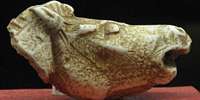 The cave of Mas-d'Azil is a large, 500 metre long tunnel dug by the Arize River through a wall of the Massif Plantaurelin, part of the Ariege Pyrenees. Secondary caves leading off the main tunnel were occupied at various prehistoric and historic times during a period of 20 000 years, and the objects found there gave the name of the cave to a prehistoric culture, the Azilian. It was excavated by Edouard Piette in the 19th century, who interpreted the halter-like marks on animal heads as being evidence of the domestication of reindeer and horses.
The cave of Mas-d'Azil is a large, 500 metre long tunnel dug by the Arize River through a wall of the Massif Plantaurelin, part of the Ariege Pyrenees. Secondary caves leading off the main tunnel were occupied at various prehistoric and historic times during a period of 20 000 years, and the objects found there gave the name of the cave to a prehistoric culture, the Azilian. It was excavated by Edouard Piette in the 19th century, who interpreted the halter-like marks on animal heads as being evidence of the domestication of reindeer and horses.
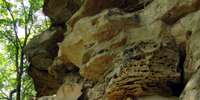 Meadowcroft Rockshelter, a pre-Clovis site. It has been continually inhabited for 16 000 years. It is an archaeological site on the north bank of Cross Creek, located near Avella in Washington County, in southwestern Pennsylvania, United States. The site, a rock shelter in a bluff overlooking Cross Creek (a tributary of the Ohio River) is located about 36 miles west-southwest of Pittsburgh. The artifacts from the site show the area has been continually inhabited for 16 000 years, since Paleo-Indian times. Meadowcroft Rockshelter was one of the first archaeological sites in the United States to contain evidence of pre-Clovis populations.
Meadowcroft Rockshelter, a pre-Clovis site. It has been continually inhabited for 16 000 years. It is an archaeological site on the north bank of Cross Creek, located near Avella in Washington County, in southwestern Pennsylvania, United States. The site, a rock shelter in a bluff overlooking Cross Creek (a tributary of the Ohio River) is located about 36 miles west-southwest of Pittsburgh. The artifacts from the site show the area has been continually inhabited for 16 000 years, since Paleo-Indian times. Meadowcroft Rockshelter was one of the first archaeological sites in the United States to contain evidence of pre-Clovis populations.
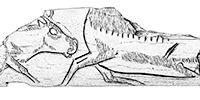 l'Abri du Morin is located in the commune of Pessac-sur-Dordogne, in Gironde. It was excavated between 1954 and 1958 by Deffarge who described two main sedimentary complexes, covered by a superficial level containing several pottery shards and other post-glacial remains. The site has yielded a large quantity of lithic and faunal remains attributed to the Magdalenian. Le Morin also yielded an abundant antler industry, with numerous decorated harpoons, a diversity of decorated objects and a rich fauna.
l'Abri du Morin is located in the commune of Pessac-sur-Dordogne, in Gironde. It was excavated between 1954 and 1958 by Deffarge who described two main sedimentary complexes, covered by a superficial level containing several pottery shards and other post-glacial remains. The site has yielded a large quantity of lithic and faunal remains attributed to the Magdalenian. Le Morin also yielded an abundant antler industry, with numerous decorated harpoons, a diversity of decorated objects and a rich fauna. 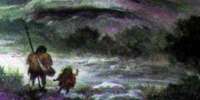
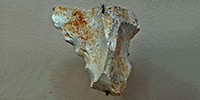 The Mousterian of Eastern Europe - Mousterian hand axes were found at Kadova u Mor, Krumlov, Určic u Prostějov and Lubná u Kroměříže in the Czech Republic, and Kůlna Cave in the Moravian Karst is an important site. The full range of Mousterian tools are found in this area, including tools with notches and teeth, of the type known as the Denticulate Mousterian.
The Mousterian of Eastern Europe - Mousterian hand axes were found at Kadova u Mor, Krumlov, Určic u Prostějov and Lubná u Kroměříže in the Czech Republic, and Kůlna Cave in the Moravian Karst is an important site. The full range of Mousterian tools are found in this area, including tools with notches and teeth, of the type known as the Denticulate Mousterian.
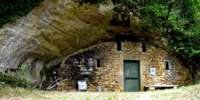
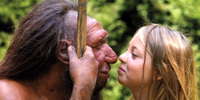 The original Neanderthal skeleton found in 1856 in the Neander Valley in Germany consisted of a skull cap, two femora, three bones from the right arm, two from the left arm, part of the left ilium, fragments of a scapula, and ribs. The workers who recovered this material originally thought it to be the remains of a bear. This discovery is now considered the beginning of paleoanthropology. These and other discoveries led to the idea these remains were from ancient Europeans who had played an important role in modern human origins. The bones of over 400 Neanderthals have been found since.
The original Neanderthal skeleton found in 1856 in the Neander Valley in Germany consisted of a skull cap, two femora, three bones from the right arm, two from the left arm, part of the left ilium, fragments of a scapula, and ribs. The workers who recovered this material originally thought it to be the remains of a bear. This discovery is now considered the beginning of paleoanthropology. These and other discoveries led to the idea these remains were from ancient Europeans who had played an important role in modern human origins. The bones of over 400 Neanderthals have been found since.
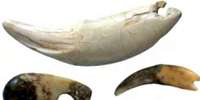
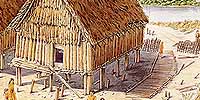
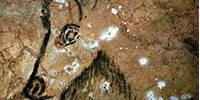 Niaux Cave, or la Grotte de Niaux is one of the most famous prehistoric caves in Europe. It lies in the northern foothills of the Pyrenees, and is located in Ariège, in the valley of Vicdessos, across the valley from the smaller Grotte de la Vache, in an area rich with prehistoric sites. The huge cave entrance, 55 metres high and 50 metres wide, is at 678 metres above sea level. There are more than two kilometres of galleries, with a hundred or more superb paintings from Magdalenian times, most of which are in the famous 'Salon Noir', 800 metres from the entrance. Many of the paintings are done in the classic style of the Magdalenian, outlined in black or red pigment, mostly haematite or manganese dioxide respectively.
Niaux Cave, or la Grotte de Niaux is one of the most famous prehistoric caves in Europe. It lies in the northern foothills of the Pyrenees, and is located in Ariège, in the valley of Vicdessos, across the valley from the smaller Grotte de la Vache, in an area rich with prehistoric sites. The huge cave entrance, 55 metres high and 50 metres wide, is at 678 metres above sea level. There are more than two kilometres of galleries, with a hundred or more superb paintings from Magdalenian times, most of which are in the famous 'Salon Noir', 800 metres from the entrance. Many of the paintings are done in the classic style of the Magdalenian, outlined in black or red pigment, mostly haematite or manganese dioxide respectively. Otzi the Iceman is a well-preserved natural mummy of a man from about 5300 BP. The mummy was found in 1991 in the Schnalstal glacier on the border between Austria and Italy. He is Europe's oldest natural human mummy, and has offered an unprecedented view of Chalcolithic (Copper Age) Europeans. The body and his belongings are displayed in the South Tyrol Museum of Archaeology in Bolzano, northern Italy.
Otzi the Iceman is a well-preserved natural mummy of a man from about 5300 BP. The mummy was found in 1991 in the Schnalstal glacier on the border between Austria and Italy. He is Europe's oldest natural human mummy, and has offered an unprecedented view of Chalcolithic (Copper Age) Europeans. The body and his belongings are displayed in the South Tyrol Museum of Archaeology in Bolzano, northern Italy.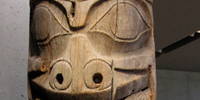 The First Nations of the Pacific North West Coast at one time had the most densely populated areas of indigenous people. The land and waters provided rich natural resources through cedar and salmon, and highly structured cultures developed from relatively dense populations. Within the Pacific Northwest, many different nations developed, each with their own distinct history, culture, and society. The creation of beautiful and practical objects (for all tribal communities) served as a means of transmitting stories, history, wisdom and property from generation to generation. Art provided Indigenous people with a tie to the land by depicting their histories on totem poles the Big (Plank) Houses of the Pacific Northwest coast – the symbols depicted were a constant reminder of their birth places, lineages and nations.
The First Nations of the Pacific North West Coast at one time had the most densely populated areas of indigenous people. The land and waters provided rich natural resources through cedar and salmon, and highly structured cultures developed from relatively dense populations. Within the Pacific Northwest, many different nations developed, each with their own distinct history, culture, and society. The creation of beautiful and practical objects (for all tribal communities) served as a means of transmitting stories, history, wisdom and property from generation to generation. Art provided Indigenous people with a tie to the land by depicting their histories on totem poles the Big (Plank) Houses of the Pacific Northwest coast – the symbols depicted were a constant reminder of their birth places, lineages and nations.
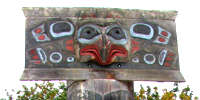 Mortuary poles - the term Totem Pole refers to the tall cedar poles with multiple figures carved by Native people of the northern Northwest Coast. Several different types of monumental poles include: Mortuary poles made in the nineteenth century which housed the coffins of important people in a niche at the top; free standing memorial poles placed in front of houses to honour deceased chiefs; house frontal poles placed against the house front, often serving as doorways of houses; carved interior house posts that support roof beams. Carved of red cedar logs, the figures on totem poles are inherited crests, which identify the pole owners and tell their family histories.
Mortuary poles - the term Totem Pole refers to the tall cedar poles with multiple figures carved by Native people of the northern Northwest Coast. Several different types of monumental poles include: Mortuary poles made in the nineteenth century which housed the coffins of important people in a niche at the top; free standing memorial poles placed in front of houses to honour deceased chiefs; house frontal poles placed against the house front, often serving as doorways of houses; carved interior house posts that support roof beams. Carved of red cedar logs, the figures on totem poles are inherited crests, which identify the pole owners and tell their family histories.
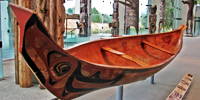 The First Nations people of the Northwest Coast are renowned for their elegantly engineered canoes. Ranging in length from three to twenty metres, canoes were essential for travel, transport, hunting, and trade. Each canoe is made from a single cedar log, carved and steamed into shape. Haida canoes were exquisite craft hewn from the gigantic red cedar that grows on Haida Gwaii and were highly prized by chiefs of other nations throughout the coast. Canoemakers in each village worked on their new craft throughout the autumn at sites where the very best red cedars stood. After an appropriate snowfall that facilitated sledding, the roughed-out canoes were moved from the woods to the nearest beach and towed to the home village, where they were finished over the winter.
The First Nations people of the Northwest Coast are renowned for their elegantly engineered canoes. Ranging in length from three to twenty metres, canoes were essential for travel, transport, hunting, and trade. Each canoe is made from a single cedar log, carved and steamed into shape. Haida canoes were exquisite craft hewn from the gigantic red cedar that grows on Haida Gwaii and were highly prized by chiefs of other nations throughout the coast. Canoemakers in each village worked on their new craft throughout the autumn at sites where the very best red cedars stood. After an appropriate snowfall that facilitated sledding, the roughed-out canoes were moved from the woods to the nearest beach and towed to the home village, where they were finished over the winter.
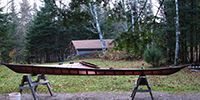 This is a superb account by David Smith of the step by step construction of a traditional Greenland-style kayak straight from a standing tree without using nails, screws, or other metal fastenings.
This is a superb account by David Smith of the step by step construction of a traditional Greenland-style kayak straight from a standing tree without using nails, screws, or other metal fastenings.
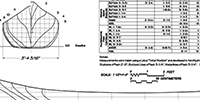 This page contains designs for some of the canoes of the First Nations people of the Northwest Coast. I would be grateful if any reader has other examples they would be willing to share.
This page contains designs for some of the canoes of the First Nations people of the Northwest Coast. I would be grateful if any reader has other examples they would be willing to share.
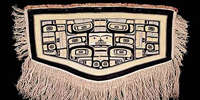 The First Nations people of the Northwest Coast have a very rich tradition of hats, cloaks, body armour, weaving, and masks. Before Europeans arrived and introduced cloth, most coastal people wore minimal clothing. Men went naked when weather permitted and women would wear a simple skirt made of shredded cedar fibre. Both sexes wore woven bark capes and spruce root hats as a protection from the rain.
The First Nations people of the Northwest Coast have a very rich tradition of hats, cloaks, body armour, weaving, and masks. Before Europeans arrived and introduced cloth, most coastal people wore minimal clothing. Men went naked when weather permitted and women would wear a simple skirt made of shredded cedar fibre. Both sexes wore woven bark capes and spruce root hats as a protection from the rain.
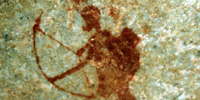
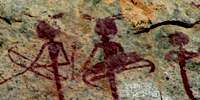 Rock paintings from Namibia in Africa. In Namibia these rock paintings and engravings were completed by San Bushmen. In Namibia these rock paintings and engravings were completed by San Bushmen. The rock engravings, more prevalent in some areas than others, have been found to be from 2 000 to 6 000 years old, and some paintings have been found to be 27 000 years old. The San entered the area about 8 000 years ago. My thanks to Jack for his generosity in sending me these excellent photographs.
Rock paintings from Namibia in Africa. In Namibia these rock paintings and engravings were completed by San Bushmen. In Namibia these rock paintings and engravings were completed by San Bushmen. The rock engravings, more prevalent in some areas than others, have been found to be from 2 000 to 6 000 years old, and some paintings have been found to be 27 000 years old. The San entered the area about 8 000 years ago. My thanks to Jack for his generosity in sending me these excellent photographs. 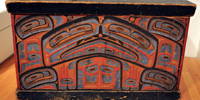 When thinking of the artefacts of the First Nations of the Pacific Northwest Coast most people will think of the massive totem poles, dugout canoes and sculptural masks, but the kerf-bent wooden box is the more ingenious example of a woodworking technology developed through eons of practice. It consists of just two planks of cedar. One is the flat bottom, rabbeted all around to receive the sides. The other is a single plank that has been deeply kerfed in three places, plasticised by controlled steam and bent at right angles to form four sides. The last corner is sewn or pegged together. The result will hold water. These richly decorated boxes range in size from a few inches to several feet. Some have flat sides, some bulge outward. Some have lids, some have sweeping curves cut into their top edges. They stored the food and possessions of everyday life as well as the ceremonial regalia of the winter dances, they were cooking pots and serving dishes, and finally they were coffins. But they were not merely containers as we think of containers, for their intricate motifs also represented the personal crests of the owner. These crests were displayed proudly, for they served to verify rank as well as spiritual power.
When thinking of the artefacts of the First Nations of the Pacific Northwest Coast most people will think of the massive totem poles, dugout canoes and sculptural masks, but the kerf-bent wooden box is the more ingenious example of a woodworking technology developed through eons of practice. It consists of just two planks of cedar. One is the flat bottom, rabbeted all around to receive the sides. The other is a single plank that has been deeply kerfed in three places, plasticised by controlled steam and bent at right angles to form four sides. The last corner is sewn or pegged together. The result will hold water. These richly decorated boxes range in size from a few inches to several feet. Some have flat sides, some bulge outward. Some have lids, some have sweeping curves cut into their top edges. They stored the food and possessions of everyday life as well as the ceremonial regalia of the winter dances, they were cooking pots and serving dishes, and finally they were coffins. But they were not merely containers as we think of containers, for their intricate motifs also represented the personal crests of the owner. These crests were displayed proudly, for they served to verify rank as well as spiritual power.
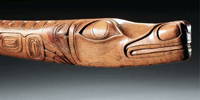
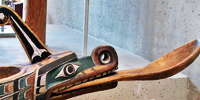 A potlatch is a gift-giving festival and primary economic system practiced by indigenous peoples of the Pacific Northwest Coast of Canada and United States. At potlatch gatherings, a family or hereditary leader hosts guests in their family's house and holds a feast for their guests. The main purpose of the potlatch is the re-distribution and reciprocity of wealth. Different events take place during a potlatch, like singing and dancing, sometimes with masks or the real regalia, such as Chilkat blankets, the barter of wealth through gifts, such as dried foods, sugar, flour, or other material things, and sometimes money. For many potlatches, spiritual ceremonies take place for different occasions. This is either through material wealth such as foods and goods or non-material things such as songs and dances. Many of these dances are also sacred ceremonies of secret societies. Typically the potlatching is practiced more in the winter seasons as historically the warmer months were for procuring wealth for the family, clan, or village, then coming home and sharing that with neighbours and friends.
A potlatch is a gift-giving festival and primary economic system practiced by indigenous peoples of the Pacific Northwest Coast of Canada and United States. At potlatch gatherings, a family or hereditary leader hosts guests in their family's house and holds a feast for their guests. The main purpose of the potlatch is the re-distribution and reciprocity of wealth. Different events take place during a potlatch, like singing and dancing, sometimes with masks or the real regalia, such as Chilkat blankets, the barter of wealth through gifts, such as dried foods, sugar, flour, or other material things, and sometimes money. For many potlatches, spiritual ceremonies take place for different occasions. This is either through material wealth such as foods and goods or non-material things such as songs and dances. Many of these dances are also sacred ceremonies of secret societies. Typically the potlatching is practiced more in the winter seasons as historically the warmer months were for procuring wealth for the family, clan, or village, then coming home and sharing that with neighbours and friends.
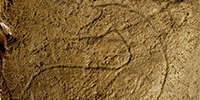 Discovered in 1881, the cave of Pair-non-Pair contains engravings (featuring horses, ibexes, cervidae, mammoths) which rank among the most ancient examples of art made by prehistoric man (between 33 000 and 26 000 years old). Prehistoric objects and artefacts discovered at the Pair-non-Pair Caves are on display in a special museum section.
Discovered in 1881, the cave of Pair-non-Pair contains engravings (featuring horses, ibexes, cervidae, mammoths) which rank among the most ancient examples of art made by prehistoric man (between 33 000 and 26 000 years old). Prehistoric objects and artefacts discovered at the Pair-non-Pair Caves are on display in a special museum section.
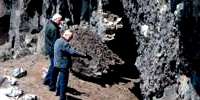 The Paisley Caves are located in the Summer Lake basin near Paisley, about 220 miles southeast of Eugene on the eastern side of the Cascade Range. The series of eight caves are westward-facing, wave-cut shelters on the highest shoreline of pluvial Lake Chewaucan, which rose and fell in periods of greater precipitation during the Pleistocene. One of the caves contains archaeological evidence of the oldest definitively-dated human presence in North America.
The Paisley Caves are located in the Summer Lake basin near Paisley, about 220 miles southeast of Eugene on the eastern side of the Cascade Range. The series of eight caves are westward-facing, wave-cut shelters on the highest shoreline of pluvial Lake Chewaucan, which rose and fell in periods of greater precipitation during the Pleistocene. One of the caves contains archaeological evidence of the oldest definitively-dated human presence in North America.
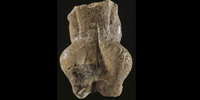 Grottes du Pape, Brassempouy - The Venus of Brassempouy, or the lady with the hood was discovered in the Grottes du Pape, (Pope's Cave) in 1894, accompanied by at least eight other human figures. These may be an example of unfinished work, as if artist(s) carved several figurines at the same time. P.E. Dubalen first explored the Grotte du Pape in 1881, followed by J. de Laporterie and Édouard Piette (1827–1906) from 1894 onwards.
Grottes du Pape, Brassempouy - The Venus of Brassempouy, or the lady with the hood was discovered in the Grottes du Pape, (Pope's Cave) in 1894, accompanied by at least eight other human figures. These may be an example of unfinished work, as if artist(s) carved several figurines at the same time. P.E. Dubalen first explored the Grotte du Pape in 1881, followed by J. de Laporterie and Édouard Piette (1827–1906) from 1894 onwards.  Paranthropus boisei was an early hominin. It lived in Eastern Africa during the Pleistocene epoch from about 2.3 until about 1.2 million years ago. First discovered by anthropologist Mary Leakey in 1959, at Olduvai Gorge, Tanzania, the well-preserved cranium (nicknamed 'Nutcracker Man') was dated to 1.75 million years old and had characteristics distinctive of the robust australopithecines. The brain volume is quite small, about 500 cc, not much larger in comparison to Australopithecus afarensis and Australopithecus africanus, or modern day chimpanzees. It had a skull highly specialised for heavy chewing and several traits seen in modern day gorillas. It inhabited savannah woodland territories.
Paranthropus boisei was an early hominin. It lived in Eastern Africa during the Pleistocene epoch from about 2.3 until about 1.2 million years ago. First discovered by anthropologist Mary Leakey in 1959, at Olduvai Gorge, Tanzania, the well-preserved cranium (nicknamed 'Nutcracker Man') was dated to 1.75 million years old and had characteristics distinctive of the robust australopithecines. The brain volume is quite small, about 500 cc, not much larger in comparison to Australopithecus afarensis and Australopithecus africanus, or modern day chimpanzees. It had a skull highly specialised for heavy chewing and several traits seen in modern day gorillas. It inhabited savannah woodland territories.
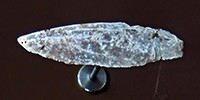 The Le Piage deposit is part of a set of caves and shelters opening at the base of a cliff 8 km from the Dordogne valley, just north of Gourdon. One of the richest collections in the world of artefacts from the Protoaurignacian has been excavated there.
The Le Piage deposit is part of a set of caves and shelters opening at the base of a cliff 8 km from the Dordogne valley, just north of Gourdon. One of the richest collections in the world of artefacts from the Protoaurignacian has been excavated there.  Cueva del Pindal is situated near the town of Pimiango near the border of Cantabria. The cave paintings were discovered in 1908. Most of the cave paintings are located on the right walls of the cave as the visitor enters. Various studies have confirmed the existence of 13 bison, 8 horses, a deer, deer antlers, a mammoth and other unrecognisable figures. There are also abundant red marks such as dots, lines, parallel lines and claviform figures.
Cueva del Pindal is situated near the town of Pimiango near the border of Cantabria. The cave paintings were discovered in 1908. Most of the cave paintings are located on the right walls of the cave as the visitor enters. Various studies have confirmed the existence of 13 bison, 8 horses, a deer, deer antlers, a mammoth and other unrecognisable figures. There are also abundant red marks such as dots, lines, parallel lines and claviform figures.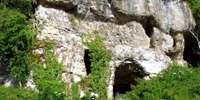 La grotte du Placard is a decorated cave in the commune of Vilhonneur in Charante, 30 km east of Angoulême. It has been extensively researched and has levels dating from the Middle and Upper Paleolithic, especially the Magdalenian and Solutrean. A dozen aviform signs identical to those discovered in the caves of Pech Merle and Cougnac. Similar signs were found in the Cosquer Cave near Marseille, 500 km away. The figures date back about 20 000 years to the Solutrean. The signs are known as Placard type signs. The cave is not accessible to the public.
La grotte du Placard is a decorated cave in the commune of Vilhonneur in Charante, 30 km east of Angoulême. It has been extensively researched and has levels dating from the Middle and Upper Paleolithic, especially the Magdalenian and Solutrean. A dozen aviform signs identical to those discovered in the caves of Pech Merle and Cougnac. Similar signs were found in the Cosquer Cave near Marseille, 500 km away. The figures date back about 20 000 years to the Solutrean. The signs are known as Placard type signs. The cave is not accessible to the public.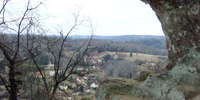
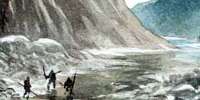
 Abri de Raymonden, Chancelade, was discovered in 1876 by M. Hardy, who also started the excavation work. The Raymonden deposits contained a multitude of stone and bone artefacts from the Magdalenian including numerous art works such as the famous bison hunt pendant. The skeleton of 'Chancelade Man' was discovered on 1st October, 1888 below the floor of the rock shelter, resting on bedrock. After years of studying casts of the skeleton's skull as well as carrying out detailed anthropometric surveys, Ms Élisabeth Daynès has created a silicone reconstruction of what the man would have looked like. The result is a grey and balding looking man with blue eyes and wrinkled skin. He is estimated to have been between 55 and 65 years old at death.
Abri de Raymonden, Chancelade, was discovered in 1876 by M. Hardy, who also started the excavation work. The Raymonden deposits contained a multitude of stone and bone artefacts from the Magdalenian including numerous art works such as the famous bison hunt pendant. The skeleton of 'Chancelade Man' was discovered on 1st October, 1888 below the floor of the rock shelter, resting on bedrock. After years of studying casts of the skeleton's skull as well as carrying out detailed anthropometric surveys, Ms Élisabeth Daynès has created a silicone reconstruction of what the man would have looked like. The result is a grey and balding looking man with blue eyes and wrinkled skin. He is estimated to have been between 55 and 65 years old at death.
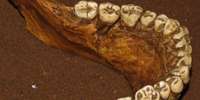
 The Roc de Sers sculpted frieze is one of the relatively few examples of parietal art that can be confidently attributed to the Solutrean as it fragmented and fell off the rear wall of the rockshelter into dated archaeological deposits. Sculpture is rare in Upper Palaeolithic parietal art, and, given the relative paucity of Solutrean parietal art in general, Roc de Sers is doubly important as it serves as a benchmark for defining Solutrean artistic form and technique. Abundant evidence has been recovered from three main activity areas across a large part of the rockshelter and associated small cave; a rich classic Solutrean lithic assemblage bears witness to the production of feuilles de laurier, pointes à cran, burins and grattoirs.
The Roc de Sers sculpted frieze is one of the relatively few examples of parietal art that can be confidently attributed to the Solutrean as it fragmented and fell off the rear wall of the rockshelter into dated archaeological deposits. Sculpture is rare in Upper Palaeolithic parietal art, and, given the relative paucity of Solutrean parietal art in general, Roc de Sers is doubly important as it serves as a benchmark for defining Solutrean artistic form and technique. Abundant evidence has been recovered from three main activity areas across a large part of the rockshelter and associated small cave; a rich classic Solutrean lithic assemblage bears witness to the production of feuilles de laurier, pointes à cran, burins and grattoirs.
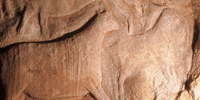
 The viking ships of Roskilde. Towards the close of the Viking Age the fairways of Roskilde Fjord were blocked by a series of barriers to protect the important trading town of Roskilde from attack by enemy fleets. The five viking ships in the Roskilde Viking Ship museum come from one of these blockages in the Peberrende channel at Skuldelev, 20 km north of Roskilde. Here, a total of five ships were sunk across the channel and boulders heaped up on top of them. In 1962 a coffer dam of sheet piling was built around the blockage so that it could be drained. In a period of less than four months all five ships were excavated and brought to land in thousands of fragments, which have since been reassembled.
The viking ships of Roskilde. Towards the close of the Viking Age the fairways of Roskilde Fjord were blocked by a series of barriers to protect the important trading town of Roskilde from attack by enemy fleets. The five viking ships in the Roskilde Viking Ship museum come from one of these blockages in the Peberrende channel at Skuldelev, 20 km north of Roskilde. Here, a total of five ships were sunk across the channel and boulders heaped up on top of them. In 1962 a coffer dam of sheet piling was built around the blockage so that it could be drained. In a period of less than four months all five ships were excavated and brought to land in thousands of fragments, which have since been reassembled.
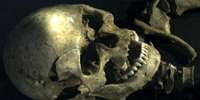
 When Neandertals were first described on the basis of skeletons found in the Neander Valley in Germany, they were presented as not quite human. Steadily, evidence has grown that Neandertals had most of the cultural abilities of anatomically modern humans. What has been missing up until now is evidence of their artistic ability, in particular art on the walls of caves, such as is much in evidence for anatomically modern humans, such as those from the Magdalenian. Finally this lack has been rectified, with discoveries of Neandertal paintings in three separate caves in Spain.
When Neandertals were first described on the basis of skeletons found in the Neander Valley in Germany, they were presented as not quite human. Steadily, evidence has grown that Neandertals had most of the cultural abilities of anatomically modern humans. What has been missing up until now is evidence of their artistic ability, in particular art on the walls of caves, such as is much in evidence for anatomically modern humans, such as those from the Magdalenian. Finally this lack has been rectified, with discoveries of Neandertal paintings in three separate caves in Spain.
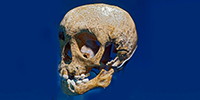
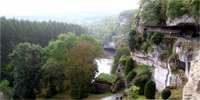 Reflection Rock and Roque Saint-Christophe - The Roque Saint Christophe is a cliff with five separate levels overlooking 900 metres of the Vezere valley. Its hundreds of natural rock shelters were inhabited from the ice ages until the Middle Ages, and the terraces could accommodate up to 1000 people. An impressive fortress and town were constructed on the different levels, and was one of the main bastions of defence during the Hundred Years War with the English. The English laid siege to it in 1401 and gained possession of it by starving the inhabitants out, only to lose possession themselves just five years later.
Reflection Rock and Roque Saint-Christophe - The Roque Saint Christophe is a cliff with five separate levels overlooking 900 metres of the Vezere valley. Its hundreds of natural rock shelters were inhabited from the ice ages until the Middle Ages, and the terraces could accommodate up to 1000 people. An impressive fortress and town were constructed on the different levels, and was one of the main bastions of defence during the Hundred Years War with the English. The English laid siege to it in 1401 and gained possession of it by starving the inhabitants out, only to lose possession themselves just five years later.
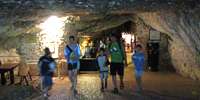 La Grotte de Rouffignac has been known for centuries and was described in 1575 by Francois de Belleforest. It is located in the heart of the Perigord, between Bergerac and Sarlat in the Dordogne region. The site has more than 250 etchings and line drawings dating from the Upper Paleolithic (Magdalenian, more than 13 000 years BP). With a length of over eight kilometres, this cave is one of the largest painted caves in Europe. These galleries were decorated with 158 mammoths associated with woolly rhinoceroses, bison, horses and ibex.
La Grotte de Rouffignac has been known for centuries and was described in 1575 by Francois de Belleforest. It is located in the heart of the Perigord, between Bergerac and Sarlat in the Dordogne region. The site has more than 250 etchings and line drawings dating from the Upper Paleolithic (Magdalenian, more than 13 000 years BP). With a length of over eight kilometres, this cave is one of the largest painted caves in Europe. These galleries were decorated with 158 mammoths associated with woolly rhinoceroses, bison, horses and ibex.
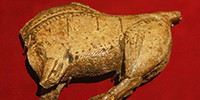 La Salle Piette contains a fabulous collection of prehistoric artefacts, tools and weapons discovered in the 19th century by Édouard Piette during excavations in the Pyrenees. Many masterpieces are exhibited, including several famous 'venus' figures. The set design is unchanged since the 19th century at the express request of Edward Piette who bequeathed his collection to the state on conditions defined by him, and unchanging over time.
La Salle Piette contains a fabulous collection of prehistoric artefacts, tools and weapons discovered in the 19th century by Édouard Piette during excavations in the Pyrenees. Many masterpieces are exhibited, including several famous 'venus' figures. The set design is unchanged since the 19th century at the express request of Edward Piette who bequeathed his collection to the state on conditions defined by him, and unchanging over time.
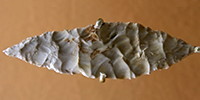 The Solutrean takes its name from the Crôt du Charnier site in Solutré-Pouilly, in Saône-et-Loire. During all the upper Paleolithic, Solutré was a site which specialised in the hunting of horses, where prehistoric men returned periodically. It does not include living areas occupied for long periods, but there are specialised areas of activity, especially the processing of game after the hunt. Some tools - pointes à face plane, laurel leaves, shouldered points - were made by a sophisticated retouch that was obtained by a new technique called pressure flaking, on flint which had been heat treated to make it much more workable.
The Solutrean takes its name from the Crôt du Charnier site in Solutré-Pouilly, in Saône-et-Loire. During all the upper Paleolithic, Solutré was a site which specialised in the hunting of horses, where prehistoric men returned periodically. It does not include living areas occupied for long periods, but there are specialised areas of activity, especially the processing of game after the hunt. Some tools - pointes à face plane, laurel leaves, shouldered points - were made by a sophisticated retouch that was obtained by a new technique called pressure flaking, on flint which had been heat treated to make it much more workable.
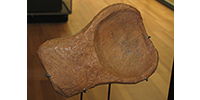 Solvieux is a large open-air site in the middle Isle Basin. It has stratigraphical sequences from the Middle Palaeolithic to the Magdalenian. J. Sackett's excavations in this area have yielded an unknown industry in Southwestern France, between the Mousterian and the Aurignacian. This industry is characterised by the great abundance (50%) of truncated blades that J. Sackett has called 'Solvieux truncations' and by the presence of bladelets with thin retouch on the lower face. The cultural affiliation of this industry known now as the Beauronnian, is not yet resolved.
Solvieux is a large open-air site in the middle Isle Basin. It has stratigraphical sequences from the Middle Palaeolithic to the Magdalenian. J. Sackett's excavations in this area have yielded an unknown industry in Southwestern France, between the Mousterian and the Aurignacian. This industry is characterised by the great abundance (50%) of truncated blades that J. Sackett has called 'Solvieux truncations' and by the presence of bladelets with thin retouch on the lower face. The cultural affiliation of this industry known now as the Beauronnian, is not yet resolved.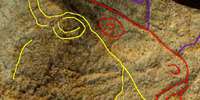
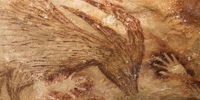
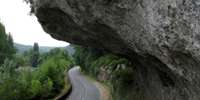
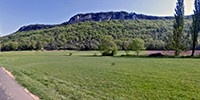 La Grotte Vaufrey is one of 22 caves and rock shelters known to dot the limestone cliff on the east side of the Céou River just south of its junction with the Dordogne River in Southwestern France. Excavated under the direction of Jean-Philippe Rigaud between 1969 and 1982, this site proved to contain a remarkable sequence of Acheulean and Mousterian occupations distributed across 12 major depositional units, couches I - XII.
La Grotte Vaufrey is one of 22 caves and rock shelters known to dot the limestone cliff on the east side of the Céou River just south of its junction with the Dordogne River in Southwestern France. Excavated under the direction of Jean-Philippe Rigaud between 1969 and 1982, this site proved to contain a remarkable sequence of Acheulean and Mousterian occupations distributed across 12 major depositional units, couches I - XII.
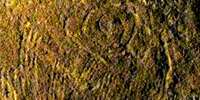
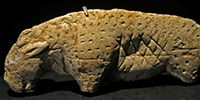 Vogelherd cave is located on the edge of the Lone valley, about 1 km northwest of Stetten and northeast of the Alb-Donau county (Alb-Donau-Kreis). Vogelherd cave is a very scenic place and well worth a visit, as indeed is all of the Lone valley. The cave is not visible from the road and one must first walk over a ridge to gain access to the three entrances on the edge of the Lone valley. The cave covers an area of 170 square metres. This extremely important site, rich in finds, was first discovered when Stone Age artefacts turned up from a badger's burrow. The actual size of it only became apparent after the excavations by Gustav Riek in the summer of 1931. The finds range from the Middle Palaeolithic to modern times. The world-renowned ivory carvings originate from the Middle Aurignacian period.
Vogelherd cave is located on the edge of the Lone valley, about 1 km northwest of Stetten and northeast of the Alb-Donau county (Alb-Donau-Kreis). Vogelherd cave is a very scenic place and well worth a visit, as indeed is all of the Lone valley. The cave is not visible from the road and one must first walk over a ridge to gain access to the three entrances on the edge of the Lone valley. The cave covers an area of 170 square metres. This extremely important site, rich in finds, was first discovered when Stone Age artefacts turned up from a badger's burrow. The actual size of it only became apparent after the excavations by Gustav Riek in the summer of 1931. The finds range from the Middle Palaeolithic to modern times. The world-renowned ivory carvings originate from the Middle Aurignacian period.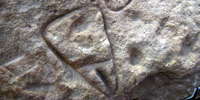 The Vulva in Stone Age Art - The vulva is well represented in Palaeolithic art. It is mostly seen as engravings on stone, bone or ivory. The representation is obviously a well known one that has become abstracted to the point where it is often no more than an oval or circle with a single mark at its centre or at its lower edge. Although many examples are from Europe, and from the upper Palaeolithic, it occurs over a broad time range, and a very large area, including not just Europe, but Australia as well.
The Vulva in Stone Age Art - The vulva is well represented in Palaeolithic art. It is mostly seen as engravings on stone, bone or ivory. The representation is obviously a well known one that has become abstracted to the point where it is often no more than an oval or circle with a single mark at its centre or at its lower edge. Although many examples are from Europe, and from the upper Palaeolithic, it occurs over a broad time range, and a very large area, including not just Europe, but Australia as well.
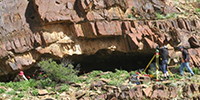 In a stunning discovery, a team of archaeologists in Australia has found extensive remains of a sophisticated human community living 50 000 years ago in Warratyi Rock Shelter. Packed with a range of tools, decorative pigments, and animal bones, the shelter is a wide, roomy space located in the Flinders Ranges, which are the ancestral lands of the Adnyamathanha. The find overturns previous hypotheses of how humans colonised Australia, and it also proves that they interacted with now-extinct megafauna that ranged across the continent.
In a stunning discovery, a team of archaeologists in Australia has found extensive remains of a sophisticated human community living 50 000 years ago in Warratyi Rock Shelter. Packed with a range of tools, decorative pigments, and animal bones, the shelter is a wide, roomy space located in the Flinders Ranges, which are the ancestral lands of the Adnyamathanha. The find overturns previous hypotheses of how humans colonised Australia, and it also proves that they interacted with now-extinct megafauna that ranged across the continent.
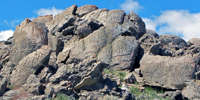 Winnemucca Lake petroglyphs discovered in western Nevada are at least 10 500 years old, making them the oldest rock art ever dated in North America. On the west side of Nevada's dried-up Winnemucca Lake, there are several limestone boulders with deep, ancient carvings; some resemble trees and leaves, whereas others are more abstract designs that look like ovals or diamonds in a chain. The true age of this rock art had not been known, but a new analysis suggests these petroglyphs are the oldest North America, dating back to between 10 500 and 14 800 years ago.
Winnemucca Lake petroglyphs discovered in western Nevada are at least 10 500 years old, making them the oldest rock art ever dated in North America. On the west side of Nevada's dried-up Winnemucca Lake, there are several limestone boulders with deep, ancient carvings; some resemble trees and leaves, whereas others are more abstract designs that look like ovals or diamonds in a chain. The true age of this rock art had not been known, but a new analysis suggests these petroglyphs are the oldest North America, dating back to between 10 500 and 14 800 years ago.
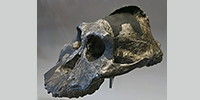 Australopithecus aethiopicus is in the group known as the robust australopithecines. The robust australopithecines are split into three species, Australopithecus aethiopicus, Australopithecus robustus, and Australopithecus boisei. There has been an ongoing debate over the exact phyletic origins of each of these species. The robust australopithecines share many characteristics of the cranium and mandible, perhaps suggesting a shared evolutionary development.
Australopithecus aethiopicus is in the group known as the robust australopithecines. The robust australopithecines are split into three species, Australopithecus aethiopicus, Australopithecus robustus, and Australopithecus boisei. There has been an ongoing debate over the exact phyletic origins of each of these species. The robust australopithecines share many characteristics of the cranium and mandible, perhaps suggesting a shared evolutionary development.
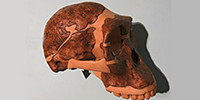
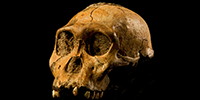
 Homo heidelbergensis is an extinct species of the genus Homo which lived in Africa, Europe and western Asia from at least 600 000 years ago, and may date back 1 300 000 years. It survived until 200 000 to 250 000 years ago. It is probably the ancestor of Homo sapiens in Africa and the Neanderthals in Europe, and perhaps also the Denisovans in Asia. It was first discovered near Heidelberg in Germany in 1907 and named by Otto Schoetensack. Some experts believe that H. heidelbergensis, like its descendant H. neandertalensis, acquired a primitive form of language. No forms of art or sophisticated artefacts other than stone tools have been uncovered, although red ochre, a mineral that can be used to create a red pigment which is useful as a paint, has been found at Terra Amata excavations in the south of France.
Homo heidelbergensis is an extinct species of the genus Homo which lived in Africa, Europe and western Asia from at least 600 000 years ago, and may date back 1 300 000 years. It survived until 200 000 to 250 000 years ago. It is probably the ancestor of Homo sapiens in Africa and the Neanderthals in Europe, and perhaps also the Denisovans in Asia. It was first discovered near Heidelberg in Germany in 1907 and named by Otto Schoetensack. Some experts believe that H. heidelbergensis, like its descendant H. neandertalensis, acquired a primitive form of language. No forms of art or sophisticated artefacts other than stone tools have been uncovered, although red ochre, a mineral that can be used to create a red pigment which is useful as a paint, has been found at Terra Amata excavations in the south of France.
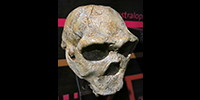

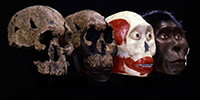
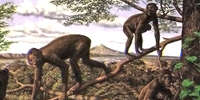 Proconsul africanus is the first species of the oligocene-era fossil genus of primate to be discovered and was named by Arthur Hopwood, an associate of Louis Leakey, in 1933. The Leakey expedition of 1947 - 1948 to Rusinga Island in Lake Victoria uncovered more species of Proconsul. Louis Leakey made an especially complete find of Proconsul there in 1948. The 18-million-year-old fossil species has been considered a possible ancestor of both great and lesser apes, and of humans. Opinion currently favours a position between the monkeys and the apes.
Proconsul africanus is the first species of the oligocene-era fossil genus of primate to be discovered and was named by Arthur Hopwood, an associate of Louis Leakey, in 1933. The Leakey expedition of 1947 - 1948 to Rusinga Island in Lake Victoria uncovered more species of Proconsul. Louis Leakey made an especially complete find of Proconsul there in 1948. The 18-million-year-old fossil species has been considered a possible ancestor of both great and lesser apes, and of humans. Opinion currently favours a position between the monkeys and the apes.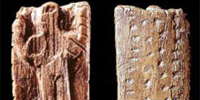 The Worshipper, called 'Adorant', is one of the oldest, most impressive and mystifying statuettes from the Ice Age. It was discovered in an ashy bone layer near a possible hearth at Geißenklösterle. The bas-relief of a human being with raised arms, who seems to be either saluting or threatening, can be distinguished. The raised arms might also be interpreted as an attitude of worship, so the statuette was named the 'Adorant'.
The Worshipper, called 'Adorant', is one of the oldest, most impressive and mystifying statuettes from the Ice Age. It was discovered in an ashy bone layer near a possible hearth at Geißenklösterle. The bas-relief of a human being with raised arms, who seems to be either saluting or threatening, can be distinguished. The raised arms might also be interpreted as an attitude of worship, so the statuette was named the 'Adorant'.
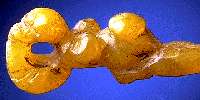 Balzi Rossi Venuses - the Grimaldi Venuses. On the Liguria coast are the entrances of the complex of the caverns of the Balzi Rossi (literally red leaps). The complex is composed of numerous coves and shelters. The first searches occurred in 1846-57, by the prince of Monaco, Florestano I. More recently, between 1928 and 1959, regular diggings were executed. Louis Alexandre Jullien discovered, between 1883 and 1895, about fifteen figurines, the greatest series ever found in only one place in Western Europe.
Balzi Rossi Venuses - the Grimaldi Venuses. On the Liguria coast are the entrances of the complex of the caverns of the Balzi Rossi (literally red leaps). The complex is composed of numerous coves and shelters. The first searches occurred in 1846-57, by the prince of Monaco, Florestano I. More recently, between 1928 and 1959, regular diggings were executed. Louis Alexandre Jullien discovered, between 1883 and 1895, about fifteen figurines, the greatest series ever found in only one place in Western Europe.
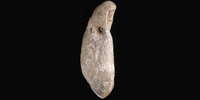 The Venus of Bedeilhac - also known as la Femme à la Capuche. It is formed from a horse canine tooth, pierced and sculpted. 47 mm long. Discovered in the Jauze-Mandement section, the third terrace. It was part of a necklace of perforated teeth. The sculpture represents a human head with eyes, a very large nose, and it seems amazed, the mouth partially open. The figure is framed by a sort of hood. There is a biconical transverse perforation through the neck. It was discovered by Joseph Mandement, who also made the first crossing of the Green Lake at Niaux. He was an amateur archeologist, and made many discoveries at Niaux, Mas d'Azil and Bédeilhac.
The Venus of Bedeilhac - also known as la Femme à la Capuche. It is formed from a horse canine tooth, pierced and sculpted. 47 mm long. Discovered in the Jauze-Mandement section, the third terrace. It was part of a necklace of perforated teeth. The sculpture represents a human head with eyes, a very large nose, and it seems amazed, the mouth partially open. The figure is framed by a sort of hood. There is a biconical transverse perforation through the neck. It was discovered by Joseph Mandement, who also made the first crossing of the Green Lake at Niaux. He was an amateur archeologist, and made many discoveries at Niaux, Mas d'Azil and Bédeilhac.
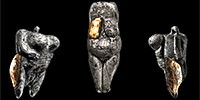 Three small ivory fragments from Breitenbach, which are only between 14 mm and 18 mm in size seem to be very inconspicuous at first glance, but have been carefully worked and polished on the surface, and can be fitted effortlessly into completely preserved figures such as those known from the 'Hohle Fels' in the Swabian Alb. Breitenbach represents one of the northernmost sites of the Aurignacian.
Three small ivory fragments from Breitenbach, which are only between 14 mm and 18 mm in size seem to be very inconspicuous at first glance, but have been carefully worked and polished on the surface, and can be fitted effortlessly into completely preserved figures such as those known from the 'Hohle Fels' in the Swabian Alb. Breitenbach represents one of the northernmost sites of the Aurignacian.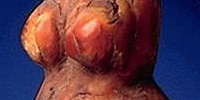 The Brown Ivory Figurine, Figurine en ivoire brun, or Abrachiale, is a nearly complete female figurine made from partially fossilised ivory found at Balzi Rossi. The nearly circular head lacks any indication of facial features or hair and no arms or hands are present. The roughly hemispherical breasts are large and separated from each other by a deep groove. Protruding even more than the breasts is the oval-shaped enlarged abdomen.
The Brown Ivory Figurine, Figurine en ivoire brun, or Abrachiale, is a nearly complete female figurine made from partially fossilised ivory found at Balzi Rossi. The nearly circular head lacks any indication of facial features or hair and no arms or hands are present. The roughly hemispherical breasts are large and separated from each other by a deep groove. Protruding even more than the breasts is the oval-shaped enlarged abdomen.
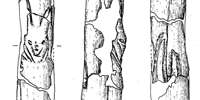 This Venus figure from Las Caldas Cave has the head of an ibex and the legs and genitals of a female human. Some think it is not meant to be a venus, but is part of an atlatl, a spear thrower.
This Venus figure from Las Caldas Cave has the head of an ibex and the legs and genitals of a female human. Some think it is not meant to be a venus, but is part of an atlatl, a spear thrower.
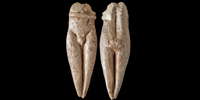 The Venus called la figurine à la Ceinture or the figurine with a belt, from the Grottes du Pape, Brassempouy, displays the lower part of a human body. It is difficult to determine the sex. The belly is as flat as that of a man. The hips and thighs have female contours. The legs are pressed one against the other, and end in points. The sexual organs are not shown distinctly, and this suggests that they are not those of a man. This figurine never had feet. The vertical groove in the back is deep.
The Venus called la figurine à la Ceinture or the figurine with a belt, from the Grottes du Pape, Brassempouy, displays the lower part of a human body. It is difficult to determine the sex. The belly is as flat as that of a man. The hips and thighs have female contours. The legs are pressed one against the other, and end in points. The sexual organs are not shown distinctly, and this suggests that they are not those of a man. This figurine never had feet. The vertical groove in the back is deep. 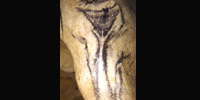 The Venus figure of Chauvet Cave is a conical pendant from the roof of the cave, and consists of a bison and an exaggerated depiction of a pubic triangle and a vulva, with rudimentary legs ending in points rather than feet. The rock pendant is seen by some as penis like. The whole ensemble is sometimes known as the sorcerer. Although not visible here, the bison is reported to include a human hand on its lower body.
The Venus figure of Chauvet Cave is a conical pendant from the roof of the cave, and consists of a bison and an exaggerated depiction of a pubic triangle and a vulva, with rudimentary legs ending in points rather than feet. The rock pendant is seen by some as penis like. The whole ensemble is sometimes known as the sorcerer. Although not visible here, the bison is reported to include a human hand on its lower body.
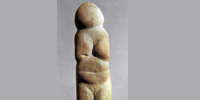 The Chiozza Venus was discovered in 1940 in the clay pit of Chiozza, near Scandiano, Italy. It was found in Holocene alluvial deposits, and it is not possible to objectively determine its age. It may be Palaeolithic. The statue is carved in Chiozza hard brown sandstone with a height of 205 mm, a maximum width of 50 mm and a maximum thickness of 60 mm. The head is subspherical, and carries no detail. The neck is thick and poorly marked; the torso, square, carries pendant breasts, but they are relatively flat, and the arms are completely lacking. This is a rather crude representation, whose general formation closely preserves the shape of the block of raw material. The style, without force and without originality, is not especially Paleolithic.
The Chiozza Venus was discovered in 1940 in the clay pit of Chiozza, near Scandiano, Italy. It was found in Holocene alluvial deposits, and it is not possible to objectively determine its age. It may be Palaeolithic. The statue is carved in Chiozza hard brown sandstone with a height of 205 mm, a maximum width of 50 mm and a maximum thickness of 60 mm. The head is subspherical, and carries no detail. The neck is thick and poorly marked; the torso, square, carries pendant breasts, but they are relatively flat, and the arms are completely lacking. This is a rather crude representation, whose general formation closely preserves the shape of the block of raw material. The style, without force and without originality, is not especially Paleolithic.
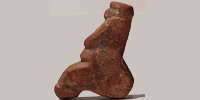
 The Venus of Dolni Vestonice is a Venus figurine, a ceramic statuette of a nude female figure dated to 29 000 – 25 000 BP (Gravettian industry). This figurine, together with a few others from nearby locations, is the oldest known ceramic in the world, predating the use of fired clay to make pottery. It has a height of 111 millimetres (4.4 in), and a width of 43 millimetres (1.7 in) at its widest point and is made of a clay body fired at a relatively low temperature. The paleolithic settlement of Dolní Věstonice in Moravia, Czech Republic, has been under systematic archaeological research since 1924, initiated by Karel Absolon. In addition to the Venus figurine, figures of animals – bear, lion, mammoth, horse, fox, rhino and owl – and more than 2 000 balls of burnt clay have been found at Dolní Věstonice. The figurine was discovered on 13 July 1925 in a layer of ash, broken into two pieces.
The Venus of Dolni Vestonice is a Venus figurine, a ceramic statuette of a nude female figure dated to 29 000 – 25 000 BP (Gravettian industry). This figurine, together with a few others from nearby locations, is the oldest known ceramic in the world, predating the use of fired clay to make pottery. It has a height of 111 millimetres (4.4 in), and a width of 43 millimetres (1.7 in) at its widest point and is made of a clay body fired at a relatively low temperature. The paleolithic settlement of Dolní Věstonice in Moravia, Czech Republic, has been under systematic archaeological research since 1924, initiated by Karel Absolon. In addition to the Venus figurine, figures of animals – bear, lion, mammoth, horse, fox, rhino and owl – and more than 2 000 balls of burnt clay have been found at Dolní Věstonice. The figurine was discovered on 13 July 1925 in a layer of ash, broken into two pieces. 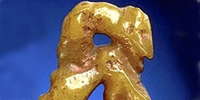 In the Double Figurine, the artist has carved two bodies, back to back, symmetrically arched, and joined at the top of the heads, shoulders and lower body. One represents a woman; the other could be an animal. A hollow space separates the two heads, suggesting that the figurine was used as a pendant. With its back to the woman is the other figure, which has elongated, sinuous anatomical features that are difficult to associate with any known genre. Although the torso and lower body offer limited detail for interpretation, the face brings to mind a beast - real or mythical, we do not know. Carved on a fragment of greenish-yellow serpentine and highly polished, the piece is approximately 47 millimetres high.
In the Double Figurine, the artist has carved two bodies, back to back, symmetrically arched, and joined at the top of the heads, shoulders and lower body. One represents a woman; the other could be an animal. A hollow space separates the two heads, suggesting that the figurine was used as a pendant. With its back to the woman is the other figure, which has elongated, sinuous anatomical features that are difficult to associate with any known genre. Although the torso and lower body offer limited detail for interpretation, the face brings to mind a beast - real or mythical, we do not know. Carved on a fragment of greenish-yellow serpentine and highly polished, the piece is approximately 47 millimetres high.
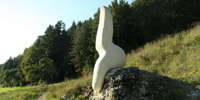 The Engen (Petersfels) venuses are made of jet, or hard coal, and were found at the Petersfels site, near Engen in Germany. It is one of the most important Palaeolithic sites in Central Europe with an enormous number of important artefacts. It was a settlement site of the Magdalenian (late Upper Paleolithic), with many layers, towards the end of the last ice age, during the period 15 500-14 000 BP. The main activity here was reindeer hunting in autumn.
The Engen (Petersfels) venuses are made of jet, or hard coal, and were found at the Petersfels site, near Engen in Germany. It is one of the most important Palaeolithic sites in Central Europe with an enormous number of important artefacts. It was a settlement site of the Magdalenian (late Upper Paleolithic), with many layers, towards the end of the last ice age, during the period 15 500-14 000 BP. The main activity here was reindeer hunting in autumn.
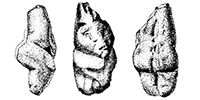 This statuette discovered at the foot of the rock escarpment of l'abri d'Enval in 1970 is one of the smallest known palaeolithic figurines, being 31 mm high, with a width of 15 mm and a thickness of 14 mm. It was made of soft sandstone more than 13 000 years ago.
This statuette discovered at the foot of the rock escarpment of l'abri d'Enval in 1970 is one of the smallest known palaeolithic figurines, being 31 mm high, with a width of 15 mm and a thickness of 14 mm. It was made of soft sandstone more than 13 000 years ago.
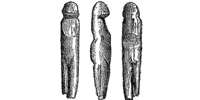 The Venus called la fillette or la poupée, from the Grottes du Pape, Brassempouy, is a figurine of a girl, made with just a few blows of the flint. It is a child's toy. She has no arms, and probably never had feet. She is naked, and her hair is long. The sex is shown.
The Venus called la fillette or la poupée, from the Grottes du Pape, Brassempouy, is a figurine of a girl, made with just a few blows of the flint. It is a child's toy. She has no arms, and probably never had feet. She is naked, and her hair is long. The sex is shown. 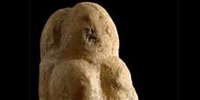 The Venus of Frasassi was carved from a piece of stalactite in the Upper Paleolithic, between 28 thousand and 20 thousand years ago. Its color is pearl white.The face is barely shown. Breasts are large, and placed high on the chest. A navel is shown on the full abdomen, and the vulva is clearly shown in relief. Legs taper to about below the level of the knees, which are not shown, when they are broken off or were never carved. Most unusually, the forearms extend well in front of the body, as though they were used to hold something.
The Venus of Frasassi was carved from a piece of stalactite in the Upper Paleolithic, between 28 thousand and 20 thousand years ago. Its color is pearl white.The face is barely shown. Breasts are large, and placed high on the chest. A navel is shown on the full abdomen, and the vulva is clearly shown in relief. Legs taper to about below the level of the knees, which are not shown, when they are broken off or were never carved. Most unusually, the forearms extend well in front of the body, as though they were used to hold something.
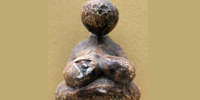 The Gagarino venus which is most well known is of an obese woman from the Gagarino site, located on the right bank of the Don River near the Sosna tributary. Here peasants discovered a house pit while excavating a silo trench. Zamiatinine, who excavated this site during 1926 - 1929, found a house pit roughly oval in outline about 5.5 metres long and 4.5 metres wide. The wealth of material remains found in this one house pit is seen in the recorded finds of some six hundred flint implements, over a thousand blades, and proportionately large numbers of cores and waste flints. Artefacts of bone as well as seven 'venus' figurines completed the roster of non-lithic material.
The Gagarino venus which is most well known is of an obese woman from the Gagarino site, located on the right bank of the Don River near the Sosna tributary. Here peasants discovered a house pit while excavating a silo trench. Zamiatinine, who excavated this site during 1926 - 1929, found a house pit roughly oval in outline about 5.5 metres long and 4.5 metres wide. The wealth of material remains found in this one house pit is seen in the recorded finds of some six hundred flint implements, over a thousand blades, and proportionately large numbers of cores and waste flints. Artefacts of bone as well as seven 'venus' figurines completed the roster of non-lithic material.
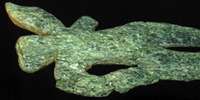 Galgenberg Venus - Fanny - Venus vom Galgenberg is the oldest figurine of a woman apart from the Berekhat Ram figure ever found, and was created around 30 000 B.C. Found on September 23, 1988 during the excavation of a habitation of palaeolithic hunters at Galgenberg near Stratzing (Lower Austria), broken into several pieces. 72 mm high figurine of a woman weighing 10 grams and made of greenish, very shiny amphibolite slate, the upper body is turned to the side, in a dancing position, and has a three-dimensional front, flat back, believed to have had cultic or religious significance.
Galgenberg Venus - Fanny - Venus vom Galgenberg is the oldest figurine of a woman apart from the Berekhat Ram figure ever found, and was created around 30 000 B.C. Found on September 23, 1988 during the excavation of a habitation of palaeolithic hunters at Galgenberg near Stratzing (Lower Austria), broken into several pieces. 72 mm high figurine of a woman weighing 10 grams and made of greenish, very shiny amphibolite slate, the upper body is turned to the side, in a dancing position, and has a three-dimensional front, flat back, believed to have had cultic or religious significance. 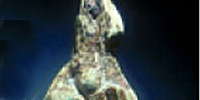 The Woman with Goitre / Goiter from Grimaldi has only one torso and one head, but underneath, she has two pubic triangles and two opposite legs. The figure is made of ivory, and is 45 mm long. The face is ovoid, but there are no facial features shown, and no arms. The breasts are conical with the tips pointed down. There is a goitre at the neck. The belly is prominent, the hips are wide, and the buttocks flattened. The vulva is open, with a gynecological perspective. The legs are broken off below the vulva. The 'Woman with Goitre' was found between 3 and 4.2 m deep in a layer which is probably the final Epigravettian. A radiocarbon date of 14 110 ±150 BP (Gif-sur-Yvette A95074) may be allotted (with caution) to this layer. It may be that this figure is the same age
The Woman with Goitre / Goiter from Grimaldi has only one torso and one head, but underneath, she has two pubic triangles and two opposite legs. The figure is made of ivory, and is 45 mm long. The face is ovoid, but there are no facial features shown, and no arms. The breasts are conical with the tips pointed down. There is a goitre at the neck. The belly is prominent, the hips are wide, and the buttocks flattened. The vulva is open, with a gynecological perspective. The legs are broken off below the vulva. The 'Woman with Goitre' was found between 3 and 4.2 m deep in a layer which is probably the final Epigravettian. A radiocarbon date of 14 110 ±150 BP (Gif-sur-Yvette A95074) may be allotted (with caution) to this layer. It may be that this figure is the same age 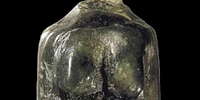 The Hermaphrodite Venus from Balzi Rossi is of translucent green soapstone. The surface is polished and worn, with remains of concretions in the concave parts. The neck, what remains of it, is shown clearly. The torso is very flat, with normal breasts hanging low. The belly is large. Under the stomach are three difficult to interpret features: the central feature is held to be an erect penis, but this is unconvincing. It takes a lot of imagination to distinguish the penis, which remains the essential element of the phallic representation. As for the roughly circular mass that is found below it, it could be a testicular pouch.
The Hermaphrodite Venus from Balzi Rossi is of translucent green soapstone. The surface is polished and worn, with remains of concretions in the concave parts. The neck, what remains of it, is shown clearly. The torso is very flat, with normal breasts hanging low. The belly is large. Under the stomach are three difficult to interpret features: the central feature is held to be an erect penis, but this is unconvincing. It takes a lot of imagination to distinguish the penis, which remains the essential element of the phallic representation. As for the roughly circular mass that is found below it, it could be a testicular pouch. 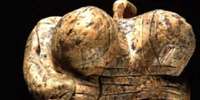 Hohle Fels Venus - The Venus of Hohle Fels is an Upper Paleolithic Venus figurine dated to between 35 000 and 40 000 years ago, belonging to the early Aurignacian, and is the oldest undisputed example of Upper Paleolithic art and figurative prehistoric art in general.
Hohle Fels Venus - The Venus of Hohle Fels is an Upper Paleolithic Venus figurine dated to between 35 000 and 40 000 years ago, belonging to the early Aurignacian, and is the oldest undisputed example of Upper Paleolithic art and figurative prehistoric art in general. 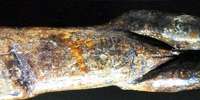 Impudique Venus - The Venus Impudique (Immodest Venus). Discovered in 1864 by the Marquis Paul de Vibraye at Laugerie Basse. It was the first Venus figure found in France. The Marquis was playfully reversing the appellation of "Venus pudica" ("modest Venus") that is used to describe a statue type of the Classical Venus which shows, in many statues the goddess attempting to conceal her breasts and pubic area from view. The inference the Marquis makes is that this prehistoric Venus makes no attempt to hide her sexuality. This ivory venus is 8 cm high, and has lost the head. The stomach is flat, and could be of a young girl.
Impudique Venus - The Venus Impudique (Immodest Venus). Discovered in 1864 by the Marquis Paul de Vibraye at Laugerie Basse. It was the first Venus figure found in France. The Marquis was playfully reversing the appellation of "Venus pudica" ("modest Venus") that is used to describe a statue type of the Classical Venus which shows, in many statues the goddess attempting to conceal her breasts and pubic area from view. The inference the Marquis makes is that this prehistoric Venus makes no attempt to hide her sexuality. This ivory venus is 8 cm high, and has lost the head. The stomach is flat, and could be of a young girl.
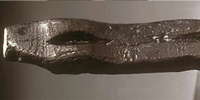 The Kesslerloch Venus has been made from a piece of jet. The breasts have been shown by a V shaped notch in the upper part of the figure. In the same fashion, the legs are separated by a V shaped notch. The back of the figure mostly still shows the original surface. Overall, the whole figure is angular and unfinished. Perhaps this is only a work in progress. It was discovered in 1954 by W. Mamber in the old excavation of Jakob Nüesch. Kesslerloch is a Swiss cave discovered in 1873, west of Thayngen, in the canton of Schaffhausen, a Palaeolithic site, with many discoveries of stone, bone and reindeer antler.
The Kesslerloch Venus has been made from a piece of jet. The breasts have been shown by a V shaped notch in the upper part of the figure. In the same fashion, the legs are separated by a V shaped notch. The back of the figure mostly still shows the original surface. Overall, the whole figure is angular and unfinished. Perhaps this is only a work in progress. It was discovered in 1954 by W. Mamber in the old excavation of Jakob Nüesch. Kesslerloch is a Swiss cave discovered in 1873, west of Thayngen, in the canton of Schaffhausen, a Palaeolithic site, with many discoveries of stone, bone and reindeer antler.
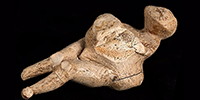 A venus figure carved in mammoth ivory, from circa 23 000 BP, has been discovered at the East Gravettian Khotylevo 2 site by Dr Konstantin N. Gavrilov, from the Institute of Archaeology, RAS. The Upper Paleolithic site of Khotylevo 2 is situated 400 km SSW of Moscow and 25 km NW of Bryansk.
A venus figure carved in mammoth ivory, from circa 23 000 BP, has been discovered at the East Gravettian Khotylevo 2 site by Dr Konstantin N. Gavrilov, from the Institute of Archaeology, RAS. The Upper Paleolithic site of Khotylevo 2 is situated 400 km SSW of Moscow and 25 km NW of Bryansk.
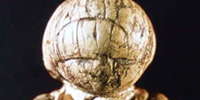 Venus figures from the Kostenki - Borshevo region on the Don River. Kostenki is a very important Paleolithic site. It was a settlement which contained venus figures, dwellings made of mammoth bones, and many flint tools and bone implements.
Venus figures from the Kostenki - Borshevo region on the Don River. Kostenki is a very important Paleolithic site. It was a settlement which contained venus figures, dwellings made of mammoth bones, and many flint tools and bone implements. Krasnyy Yar Venus - The Siberian Paleolithic site of Krasnyy Yar, located on the right bank of the Angara, about 200 km downstream of Irkutsk, which itself is 72 kilometres from the outflow of the Angara River from Lake Baikal, yielded in 1957, a highly stylised female figure. It is a small figurine of bone, carefully polished, whose size is 37mm x 11mm x 8 mm. The area at the time was an arid arctic steppe, and oil shale gathered nearby was used for fuel.
Krasnyy Yar Venus - The Siberian Paleolithic site of Krasnyy Yar, located on the right bank of the Angara, about 200 km downstream of Irkutsk, which itself is 72 kilometres from the outflow of the Angara River from Lake Baikal, yielded in 1957, a highly stylised female figure. It is a small figurine of bone, carefully polished, whose size is 37mm x 11mm x 8 mm. The area at the time was an arid arctic steppe, and oil shale gathered nearby was used for fuel. 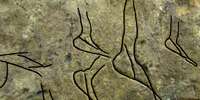 Lalinde / Gönnersdorf figurines and engravings are strictly stylised, overtly female forms with over-sized buttocks, long trunks, small or missing breasts, and no heads. These images have been found at sites such as Gönnersdorf in Germany, in Abri Murat and Gare de Couze in France, Pekárna in the Czech Republic, and Wilczyce in Poland.
Lalinde / Gönnersdorf figurines and engravings are strictly stylised, overtly female forms with over-sized buttocks, long trunks, small or missing breasts, and no heads. These images have been found at sites such as Gönnersdorf in Germany, in Abri Murat and Gare de Couze in France, Pekárna in the Czech Republic, and Wilczyce in Poland.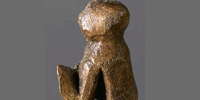 The Venus of Laugerie Basse - the Supplicant. This venus is a tiny, broken, crudely carved statuette of reindeer antler, 44 millimetres long, depicting a faceless human bent forward as though in supplication, with arms raised as if in prayer or adoration.
The Venus of Laugerie Basse - the Supplicant. This venus is a tiny, broken, crudely carved statuette of reindeer antler, 44 millimetres long, depicting a faceless human bent forward as though in supplication, with arms raised as if in prayer or adoration.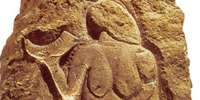 Lausell Venus - The Femme à la Corne. This low relief venus is from Laussel, Dordogne. 44 cm (17.5 inches) high. The body swells out towards the viewer from this convex block of limestone. It formed one of a set, a frieze which included other female figures and a male figure. It probably dates to 27 000 - 22 000 BP. It was originally carved on a block of 4 cubic metres (140 cubic feet), and was originally covered in red ochre. The bison's horn and the series of 13 lines on it have often been linked with the moon or menstruation. The lines may represent the thirteen days of the waxing moon and the thirteen months of the lunar year.
Lausell Venus - The Femme à la Corne. This low relief venus is from Laussel, Dordogne. 44 cm (17.5 inches) high. The body swells out towards the viewer from this convex block of limestone. It formed one of a set, a frieze which included other female figures and a male figure. It probably dates to 27 000 - 22 000 BP. It was originally carved on a block of 4 cubic metres (140 cubic feet), and was originally covered in red ochre. The bison's horn and the series of 13 lines on it have often been linked with the moon or menstruation. The lines may represent the thirteen days of the waxing moon and the thirteen months of the lunar year.
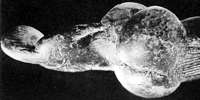 Lespugue Venus - The Venus of Lespugue is a statuette of a nude female figure from the Gravettian period, dated to between 26 000 and 24 000 years ago. It was discovered in 1922 in the Rideaux cave of Lespugue (Haute-Garonne). Approximately 6 inches (150 mm) tall, it is carved from tusk ivory, and was damaged during excavation. Of all the steatopygous (large posterior) Venus figurines discovered from the upper Paleolithic, the Venus of Lespugue, if the reconstruction is sound, appears to display the most exaggerated female secondary sexual characteristics, especially the extremely large, pendulous breasts.
Lespugue Venus - The Venus of Lespugue is a statuette of a nude female figure from the Gravettian period, dated to between 26 000 and 24 000 years ago. It was discovered in 1922 in the Rideaux cave of Lespugue (Haute-Garonne). Approximately 6 inches (150 mm) tall, it is carved from tusk ivory, and was damaged during excavation. Of all the steatopygous (large posterior) Venus figurines discovered from the upper Paleolithic, the Venus of Lespugue, if the reconstruction is sound, appears to display the most exaggerated female secondary sexual characteristics, especially the extremely large, pendulous breasts.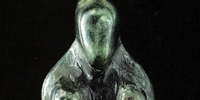 The Losange Venus, or Venus el Rombo, is made of green steatite. The head is pointed, with a lack of facial features. There is a groove marking the outline of the hair. The breasts are elongated and large. There are no arms. The protruding belly is circular in shape, and the venus has wide hips, and the buttocks are flattened. The vulva is open, and is shown from a gynecological perspective. The legs are tapering, and no knees are indicated. The legs finish or are broken off above the position of the feet.
The Losange Venus, or Venus el Rombo, is made of green steatite. The head is pointed, with a lack of facial features. There is a groove marking the outline of the hair. The breasts are elongated and large. There are no arms. The protruding belly is circular in shape, and the venus has wide hips, and the buttocks are flattened. The vulva is open, and is shown from a gynecological perspective. The legs are tapering, and no knees are indicated. The legs finish or are broken off above the position of the feet. 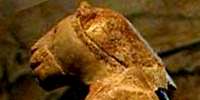 Loewenmensch, Löwenmensch, formerly often called Lowenfrau, the Lion Lady Venus - carved from mammoth ivory, it is 30 cm high and 6 cm in diameter. It was found in the cave of Hohlenstein-Stadel in the Valley of Lone, Baden-Wurttemberg (Germany), in 1931, dated as Aurignacian, in a level recently dated to 40 000 BP, making it the oldest sculpture known. Although this is known in some places as the lion lady, it is now known to be male. The arms bear striations carved into the ivory. Years after the initial discovery the museum officials were presented with an ivory lion muzzle found in the cave. It was a perfect fit. Today it is pieced together from more than 1000 tiny pieces. This male 'venus' may be an attempt to capture the power of the lion.
Loewenmensch, Löwenmensch, formerly often called Lowenfrau, the Lion Lady Venus - carved from mammoth ivory, it is 30 cm high and 6 cm in diameter. It was found in the cave of Hohlenstein-Stadel in the Valley of Lone, Baden-Wurttemberg (Germany), in 1931, dated as Aurignacian, in a level recently dated to 40 000 BP, making it the oldest sculpture known. Although this is known in some places as the lion lady, it is now known to be male. The arms bear striations carved into the ivory. Years after the initial discovery the museum officials were presented with an ivory lion muzzle found in the cave. It was a perfect fit. Today it is pieced together from more than 1000 tiny pieces. This male 'venus' may be an attempt to capture the power of the lion.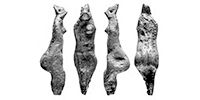 The Venus of Macomer is a possibly late Palaeolithic venus. In 1949, Francesco Marras, a carpenter of Macomer, in western Sardinia, started digging out with a friend the deposit of a small cave in his orchard, discovering prehistoric implements. He eventually assembled a large archaeological collection, without any recorded stratigraphic provenence, from the cave itself and from the area at the entrance. Most of it comprised lithic implements and potsherds, but a female figurine was also unearthed, now known as the Venus of Macomer.
The Venus of Macomer is a possibly late Palaeolithic venus. In 1949, Francesco Marras, a carpenter of Macomer, in western Sardinia, started digging out with a friend the deposit of a small cave in his orchard, discovering prehistoric implements. He eventually assembled a large archaeological collection, without any recorded stratigraphic provenence, from the cave itself and from the area at the entrance. Most of it comprised lithic implements and potsherds, but a female figurine was also unearthed, now known as the Venus of Macomer.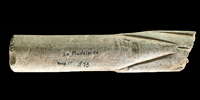 A new venus figurine has been recognised from La Madeleine, a rock shelter located in the Vézère valley, in the Dordogne, France. It was discovered by Capitan and Peyrony at La Madeleine, and was described in 1928 as a dagger blade made of reindeer antler. I thought it was a venus figure when I saw it on display in Le Musée National de Préhistoire, Les Eyzies-de-Tayac in 2008, and it has now been described as such by Jean-Pierre Duhard in Paleo 21, 2009-2010.
A new venus figurine has been recognised from La Madeleine, a rock shelter located in the Vézère valley, in the Dordogne, France. It was discovered by Capitan and Peyrony at La Madeleine, and was described in 1928 as a dagger blade made of reindeer antler. I thought it was a venus figure when I saw it on display in Le Musée National de Préhistoire, Les Eyzies-de-Tayac in 2008, and it has now been described as such by Jean-Pierre Duhard in Paleo 21, 2009-2010.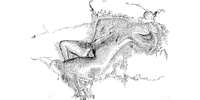 There are two reclining bas relief venus figures at La Magdeleine des Ablis, which is located near Penne, in Tarn. The engravings and sculptures were found in 1950 by M. Bessac. Dating has been proposed for the engravings as being circa 13 000 BP, but this may be too young a date. Moreover, the works are not homogenous, and a considerable period of time may have elapsed between the engravings.
There are two reclining bas relief venus figures at La Magdeleine des Ablis, which is located near Penne, in Tarn. The engravings and sculptures were found in 1950 by M. Bessac. Dating has been proposed for the engravings as being circa 13 000 BP, but this may be too young a date. Moreover, the works are not homogenous, and a considerable period of time may have elapsed between the engravings.
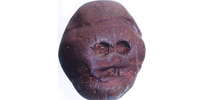 The Makapansgat pebble, or the pebble of many faces, is a 260-gram jasperite cobble with natural chipping and wear patterns that make it look like a crude rendition of a human face. The pebble is interesting in that it was found some distance from any possible natural source, in the context of Australopithecus africanus remains in South Africa. Though it is definitely not a manufactured object, it has been suggested that some australopithecine, or possibly another hominid, might have recognised it as a symbolic face, in possibly the earliest example of symbolic thinking or aesthetic sense in the human heritage, and brought the pebble back to camp, which would make it a candidate for the oldest known manuport at between 2.5 and 2.9 million years ago.
The Makapansgat pebble, or the pebble of many faces, is a 260-gram jasperite cobble with natural chipping and wear patterns that make it look like a crude rendition of a human face. The pebble is interesting in that it was found some distance from any possible natural source, in the context of Australopithecus africanus remains in South Africa. Though it is definitely not a manufactured object, it has been suggested that some australopithecine, or possibly another hominid, might have recognised it as a symbolic face, in possibly the earliest example of symbolic thinking or aesthetic sense in the human heritage, and brought the pebble back to camp, which would make it a candidate for the oldest known manuport at between 2.5 and 2.9 million years ago.
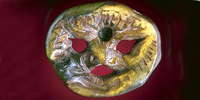 The Mask, or the Face, is a perforated oval disk in the form of a flattened face or mask. It is made of partially translucent green-yellow to yellow chlorite. Perforations create the eyes and a mouth. The eyes are circular, and small notches give them an animal rather than a human appearance. A series of incised lines radiates from the centre of the face across each cheek. The eyes, nose, and mouth have a vaguely feline appearance, but it may be either a stylised human or an animal. It may be more recent than the statuettes and have come from the rich Early Epigravettian deposits excavated by Jullien in the upper levels of the Barma Grande.
The Mask, or the Face, is a perforated oval disk in the form of a flattened face or mask. It is made of partially translucent green-yellow to yellow chlorite. Perforations create the eyes and a mouth. The eyes are circular, and small notches give them an animal rather than a human appearance. A series of incised lines radiates from the centre of the face across each cheek. The eyes, nose, and mouth have a vaguely feline appearance, but it may be either a stylised human or an animal. It may be more recent than the statuettes and have come from the rich Early Epigravettian deposits excavated by Jullien in the upper levels of the Barma Grande.  Sculpture of a female figure from Mas d'Azil, from the middle Magdalenian, discovered by Piette. This human bust, carved in the root of an incisor of a horse, shows a great mastery of sculptural technique. The nature, form and volume of material forced the sculptor to enclose the body within narrow limits. The originality of this sculpture is reinforced by the representation of the breasts, elongated and pendant, but not bulky. This secondary sexual characteristic allows us to identify it as a woman. There is also a second stylised venus figure, which is very reminiscent of the female/bird sculptures of Mizyn in Ukraine.
Sculpture of a female figure from Mas d'Azil, from the middle Magdalenian, discovered by Piette. This human bust, carved in the root of an incisor of a horse, shows a great mastery of sculptural technique. The nature, form and volume of material forced the sculptor to enclose the body within narrow limits. The originality of this sculpture is reinforced by the representation of the breasts, elongated and pendant, but not bulky. This secondary sexual characteristic allows us to identify it as a woman. There is also a second stylised venus figure, which is very reminiscent of the female/bird sculptures of Mizyn in Ukraine.
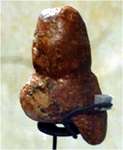 Mauern Venus - Weinberg Cave Venus - Die Rote von Mauern from Weinberg cave, or Weinberghöhlen, is a venus statuette in limestone, 27 000 years old, covered with red ochre when found at the Weinberghöhlen caves near Mauern, Bavaria. Lothar Zotz, on 24th August 1948, found the 72 mm tall limestone venus figure on the outer slope between cavities two and three of the Weinberghöhlen. During 1937-38, 1947-49, 1967 and 1974 bone fragments and traces of mammoth, cave bear, woolly rhinoceros, reindeer and 20 other different animals were found at the caves, as well as high quality Blattspitzen or leaf points of Mousterian / Neanderthal origin.
Mauern Venus - Weinberg Cave Venus - Die Rote von Mauern from Weinberg cave, or Weinberghöhlen, is a venus statuette in limestone, 27 000 years old, covered with red ochre when found at the Weinberghöhlen caves near Mauern, Bavaria. Lothar Zotz, on 24th August 1948, found the 72 mm tall limestone venus figure on the outer slope between cavities two and three of the Weinberghöhlen. During 1937-38, 1947-49, 1967 and 1974 bone fragments and traces of mammoth, cave bear, woolly rhinoceros, reindeer and 20 other different animals were found at the caves, as well as high quality Blattspitzen or leaf points of Mousterian / Neanderthal origin.
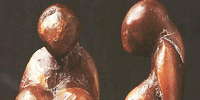 Venus of Menton, a figurine in yellow steatite (soapstone), Grimaldi. The figure is naked, breasts, abdomen and buttocks are prominent, the pubis and vulva are well marked. The arms are fused with the torso. The head is in the form of a ball, and extends down the back via the hair. It resembles many other venus figures from the upper European Palaeolithic. Found in 1880 in the Barma Grande and acquired by Salomon Reinach in 1896 for the French MNA.
Venus of Menton, a figurine in yellow steatite (soapstone), Grimaldi. The figure is naked, breasts, abdomen and buttocks are prominent, the pubis and vulva are well marked. The arms are fused with the torso. The head is in the form of a ball, and extends down the back via the hair. It resembles many other venus figures from the upper European Palaeolithic. Found in 1880 in the Barma Grande and acquired by Salomon Reinach in 1896 for the French MNA.
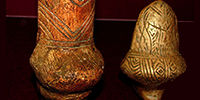 The 'venus' figurines from Mizyn, Мізин, have variously been described as phallic figurines, birds, and bird/woman hybrids. They were made in Mammoth ivory.
The 'venus' figurines from Mizyn, Мізин, have variously been described as phallic figurines, birds, and bird/woman hybrids. They were made in Mammoth ivory.
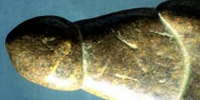 The Venus of Milandes is a phallic shaped venus figure from the Dordogne valley, apparently of Paleolithic age. It was found by a five year old boy in a field, and taken home as one of a number of curiosities found that day. It was shaped from a silicified iron bearing limestone pebble, already with a phallic - feminine shape, and further altered to accentuate this interpretation. The object has a maximum height of 77.3 mm to a maximum width at the hips of 39.0 mm. The object weighs about 90 grams.
The Venus of Milandes is a phallic shaped venus figure from the Dordogne valley, apparently of Paleolithic age. It was found by a five year old boy in a field, and taken home as one of a number of curiosities found that day. It was shaped from a silicified iron bearing limestone pebble, already with a phallic - feminine shape, and further altered to accentuate this interpretation. The object has a maximum height of 77.3 mm to a maximum width at the hips of 39.0 mm. The object weighs about 90 grams.
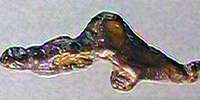 Monpazier Venus - The Venus of Monpazier was collected in 1970 on the surface of a freshly ploughed field by M. Elisée Cérou. It has a well drawn vulva. The pronounced buttocks and the projecting belly gave it the name Punchinello, but some see in it a woman about to give birth. Carved in limonite, a yellowish brown ore of iron. Often confused on the internet with the Polichinelle Venus.
Monpazier Venus - The Venus of Monpazier was collected in 1970 on the surface of a freshly ploughed field by M. Elisée Cérou. It has a well drawn vulva. The pronounced buttocks and the projecting belly gave it the name Punchinello, but some see in it a woman about to give birth. Carved in limonite, a yellowish brown ore of iron. Often confused on the internet with the Polichinelle Venus.
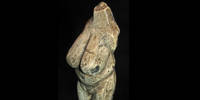 Moravany Venus - the Venus of Moravany is 76 mm tall, and was discovered when it was found in a ploughed field by a farmer in 1938 in the area of Moravany nad Váhom, a village near the spa resort Piestany in Slovakia. It is officially dated 22 800 B.P. and belongs to the shouldered points horizon (Willendorf-Kostenkian or Upper Gravettian).
Moravany Venus - the Venus of Moravany is 76 mm tall, and was discovered when it was found in a ploughed field by a farmer in 1938 in the area of Moravany nad Váhom, a village near the spa resort Piestany in Slovakia. It is officially dated 22 800 B.P. and belongs to the shouldered points horizon (Willendorf-Kostenkian or Upper Gravettian).
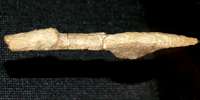 Nebra Venus - The site of Altenburg in the Stone Age was a particularly favorable place to settle. Excavations have uncovered a settlement of the Magdalenian hunters (about 17 000 BP). The tent-like dwelling was visited repeatedly over a number of summers. Floor plans and post holes of residential buildings have been identified. The most well known discovery is the 'Venus of Nebra', one of three sculptures in ivory approximately 7 cm high.
Nebra Venus - The site of Altenburg in the Stone Age was a particularly favorable place to settle. Excavations have uncovered a settlement of the Magdalenian hunters (about 17 000 BP). The tent-like dwelling was visited repeatedly over a number of summers. Floor plans and post holes of residential buildings have been identified. The most well known discovery is the 'Venus of Nebra', one of three sculptures in ivory approximately 7 cm high.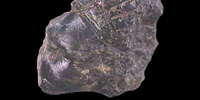 The Negroid Venus Head, in slightly fibrous green soapstone, has a surface which is polished and worn, especially the face. The base is polished and worn, which suggests that the object was already an isolated head in the Paleolithic. The piece measures 24 mm in height, 24.5 mm front to back and 15 mm maximum width, and is therefore relatively flat and has a protruding chignon of hair. The facial features are strikingly represented: there is a receding forehead with massive eyebrows and deep eye sockets. The cheekbones are strong. The coiffure, largely destroyed, is represented by a net or grid consisting of a series of incisions starting at the forehead, over the bun or chignon and back down onto the neck, cut by transverse incisions, the first of which form a kind of band above the forehead.
The Negroid Venus Head, in slightly fibrous green soapstone, has a surface which is polished and worn, especially the face. The base is polished and worn, which suggests that the object was already an isolated head in the Paleolithic. The piece measures 24 mm in height, 24.5 mm front to back and 15 mm maximum width, and is therefore relatively flat and has a protruding chignon of hair. The facial features are strikingly represented: there is a receding forehead with massive eyebrows and deep eye sockets. The cheekbones are strong. The coiffure, largely destroyed, is represented by a net or grid consisting of a series of incisions starting at the forehead, over the bun or chignon and back down onto the neck, cut by transverse incisions, the first of which form a kind of band above the forehead.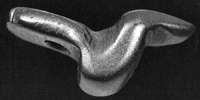 The Venus figures of Neuchâtel - Monruz - The Venus of Neuchâtel is a pendant in jet, and is 16 mm high. It was found at Neuchâtel in 1991, and is dated at 14 900 BP. The site of Monruz (commune of Neuchâtel) borders the lake over a length of a hundred metres. Formerly open to the air, it was by now covered with five metres of clay, sand, and gravel , capped by the bitumen of a trunk road.
The Venus figures of Neuchâtel - Monruz - The Venus of Neuchâtel is a pendant in jet, and is 16 mm high. It was found at Neuchâtel in 1991, and is dated at 14 900 BP. The site of Monruz (commune of Neuchâtel) borders the lake over a length of a hundred metres. Formerly open to the air, it was by now covered with five metres of clay, sand, and gravel , capped by the bitumen of a trunk road.
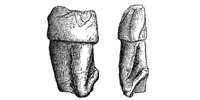 The Venus called la figurine à la pèlerine, or figurine dressed in a cape, from the Grottes du Pape, Brassempouy, consists of a fragment of the torso of a figure wearing a cape. The arm in bas relief is folded across the chest. Sculptors had recognised how fragile arms are when they are detached from the trunk, and they used bas relief to represent them. The arm tapers in thickness from the shoulder to the elbow.
The Venus called la figurine à la pèlerine, or figurine dressed in a cape, from the Grottes du Pape, Brassempouy, consists of a fragment of the torso of a figure wearing a cape. The arm in bas relief is folded across the chest. Sculptors had recognised how fragile arms are when they are detached from the trunk, and they used bas relief to represent them. The arm tapers in thickness from the shoulder to the elbow. 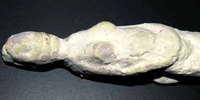 The Venus of Parabita is 90 mm high and 20 mm wide, and is made from a splinter of bone from an aurochs or horse. There are no features on the face, while the chin and neck is crossed by two parallel curved incisions, creating the impression of a collar or hood. From here the two sloping shoulders continue into arms, which become thinner, then thicker, and finally come together under a prominent abdomen, perhaps indicating pregnancy. A second venus is smaller, 61 mm high and 15 mm wide, and has different stylistic features.
The Venus of Parabita is 90 mm high and 20 mm wide, and is made from a splinter of bone from an aurochs or horse. There are no features on the face, while the chin and neck is crossed by two parallel curved incisions, creating the impression of a collar or hood. From here the two sloping shoulders continue into arms, which become thinner, then thicker, and finally come together under a prominent abdomen, perhaps indicating pregnancy. A second venus is smaller, 61 mm high and 15 mm wide, and has different stylistic features.
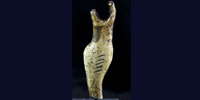 The Venus of El Pendo Cave, Camargo, province of Santander, may be of modern manufacture. It is in the form of a spear straightener or baton de commandement, made of deer antler, variously dated to the Solutrean or the upper Magdalenian, excavated by Abbé Jesus Carballo at El Pendo Cavern. Of interest is the form of the handle, which evokes the feminine form. This 'Venus' was discovered in the Solutrean layer of the El Pendo Cave. It is made of deer antler, and its form evokes that of a woman, with arms raised and with large hips.
The Venus of El Pendo Cave, Camargo, province of Santander, may be of modern manufacture. It is in the form of a spear straightener or baton de commandement, made of deer antler, variously dated to the Solutrean or the upper Magdalenian, excavated by Abbé Jesus Carballo at El Pendo Cavern. Of interest is the form of the handle, which evokes the feminine form. This 'Venus' was discovered in the Solutrean layer of the El Pendo Cave. It is made of deer antler, and its form evokes that of a woman, with arms raised and with large hips.
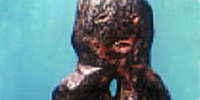 The Woman with the Perforated Neck, also known as the 'Janus' because the face is depicted on both sides of the flattened figurine, is one of the venuses from the Barma Grande in the Balzi Rossi caves. It is 62 mm long, of dark green steatite. The head is flat and circular, with the eyes and mouth carved on the front and back of the head. There are no forearms, and the breasts are oval-shaped. There is a prominent belly, and the buttocks are flattened. A small open vulva has been carved, and the knees and feet are indistinct or absent. It is perforated through the neck.
The Woman with the Perforated Neck, also known as the 'Janus' because the face is depicted on both sides of the flattened figurine, is one of the venuses from the Barma Grande in the Balzi Rossi caves. It is 62 mm long, of dark green steatite. The head is flat and circular, with the eyes and mouth carved on the front and back of the head. There are no forearms, and the breasts are oval-shaped. There is a prominent belly, and the buttocks are flattened. A small open vulva has been carved, and the knees and feet are indistinct or absent. It is perforated through the neck.
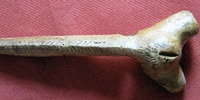 Placard Venus - La grotte du Placard is a decorated cave in the commune of Vilhonneur in Charante, 30 km east of Angoulême. It has been extensively researched and has levels dating from the Middle and Upper Paleolithic, especially the Magdalenian and Solutrean.
Placard Venus - La grotte du Placard is a decorated cave in the commune of Vilhonneur in Charante, 30 km east of Angoulême. It has been extensively researched and has levels dating from the Middle and Upper Paleolithic, especially the Magdalenian and Solutrean. 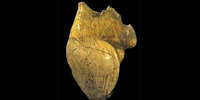 La Poire is a figurine of mammoth ivory of which only the corpulent torso survives, found in 1892 in the 'Grotte du Pape' at Brassempouy. The name 'Venus' for this figurine was subsequently adopted by Édouard Piette (1827-1906). She was originally nicknamed la poire - 'the pear' - on account of her shape. For Piette, the name 'Venus' may have come to mind in this particular instance because of the emphatic treatment of the vulva's labia and the prominent, slightly protruding pubic area, which he tastefully refers to as 'le mont de Vénus' - the mound of Venus (or mons pubis). 'Venus' has since become the collective term used to identify all obese Palaeolithic statuettes of women.
La Poire is a figurine of mammoth ivory of which only the corpulent torso survives, found in 1892 in the 'Grotte du Pape' at Brassempouy. The name 'Venus' for this figurine was subsequently adopted by Édouard Piette (1827-1906). She was originally nicknamed la poire - 'the pear' - on account of her shape. For Piette, the name 'Venus' may have come to mind in this particular instance because of the emphatic treatment of the vulva's labia and the prominent, slightly protruding pubic area, which he tastefully refers to as 'le mont de Vénus' - the mound of Venus (or mons pubis). 'Venus' has since become the collective term used to identify all obese Palaeolithic statuettes of women.
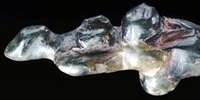 Polichinelle Venus - The Venus of Polichinelle, carved in green steatite, length 61 mm, 27 000 years old, found at Grimaldi. The pronounced buttocks and the projecting belly gave it the name Punchinello, but some see in it a woman about to give birth. Punchinello, or Polichinelle in French, is the short fat buffoon or clown in an Italian puppet show. Often confused on the internet with the Monpazier Venus.
Polichinelle Venus - The Venus of Polichinelle, carved in green steatite, length 61 mm, 27 000 years old, found at Grimaldi. The pronounced buttocks and the projecting belly gave it the name Punchinello, but some see in it a woman about to give birth. Punchinello, or Polichinelle in French, is the short fat buffoon or clown in an Italian puppet show. Often confused on the internet with the Monpazier Venus.
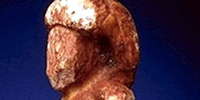 The Red Ochre Venus or Dame Ocrée is a female figurine made from mammoth ivory. The oval face has no facial features and the head and torso were originally covered with a very thick layer of red ochre. The hair forms a thick coiffure framing the face and tapering to two points that end on the backs of the shoulders, which may be interpreted as being braids. Although the upper arms are clearly carved at the sides of the figurine, there is no trace of forearms or hands.
The Red Ochre Venus or Dame Ocrée is a female figurine made from mammoth ivory. The oval face has no facial features and the head and torso were originally covered with a very thick layer of red ochre. The hair forms a thick coiffure framing the face and tapering to two points that end on the backs of the shoulders, which may be interpreted as being braids. Although the upper arms are clearly carved at the sides of the figurine, there is no trace of forearms or hands. 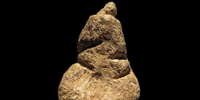 The Venus of Roc-aux-Sorciers was found in an Upper Paleolithic rock shelter site dating to the mid-Magdalenian cultural stage, ca 14 000 BP, made famous by its relief wall carvings. The south-facing rock-shelter is composed of two geologically distinct sections; below is the Abri Bourdois, a classic rock-shelter site beneath a slight overhang, and above is the Cave Taillebourg, a deeper vestibule. The art of Roc-aux-Sorciers is in two distinct categories - a 20 metre long frieze, still standing, not open to the public, and a series of sculptures, formerly on a wall of a collapsed section of the site.
The Venus of Roc-aux-Sorciers was found in an Upper Paleolithic rock shelter site dating to the mid-Magdalenian cultural stage, ca 14 000 BP, made famous by its relief wall carvings. The south-facing rock-shelter is composed of two geologically distinct sections; below is the Abri Bourdois, a classic rock-shelter site beneath a slight overhang, and above is the Cave Taillebourg, a deeper vestibule. The art of Roc-aux-Sorciers is in two distinct categories - a 20 metre long frieze, still standing, not open to the public, and a series of sculptures, formerly on a wall of a collapsed section of the site. 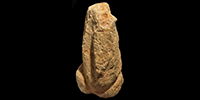 The second Venus of Roc-aux-Sorciers has many similarities to the first. It is apparently of the same lithic material, and stands 75 mm tall.
The second Venus of Roc-aux-Sorciers has many similarities to the first. It is apparently of the same lithic material, and stands 75 mm tall. 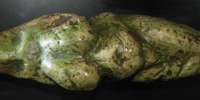 Savignano Venus - The Venus of Savignano is from the north Italian plain, and is 220 mm high. It is made of serpentine, and arms are indicated only, across the breasts. Found in 1925 at Savignano sul Punaro, near Modena.
Savignano Venus - The Venus of Savignano is from the north Italian plain, and is 220 mm high. It is made of serpentine, and arms are indicated only, across the breasts. Found in 1925 at Savignano sul Punaro, near Modena.
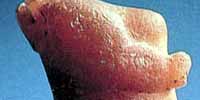 Sireuil Venus - The Venus de Sireuil was collected in 1900 in the Dordogne. It is made of translucent calcite. It was found in 1900 by M. Prat, on a road to a stone quarry, where a cartwheel which ran over it in the muddy rut where it lay unfortunately amputated the head and left hand which were not recovered. The material of the object is of amber calcite, slightly translucent, measuring 92 mm in height. Aurignacian flint was found 150 metres from the statue, in a quarry. It is estimated to be 27 000 years old.
Sireuil Venus - The Venus de Sireuil was collected in 1900 in the Dordogne. It is made of translucent calcite. It was found in 1900 by M. Prat, on a road to a stone quarry, where a cartwheel which ran over it in the muddy rut where it lay unfortunately amputated the head and left hand which were not recovered. The material of the object is of amber calcite, slightly translucent, measuring 92 mm in height. Aurignacian flint was found 150 metres from the statue, in a quarry. It is estimated to be 27 000 years old. The Tan-Tan figurine was discovered during an archaeological survey by Lutz Fiedler, state archaeologist of Hessen, Germany, in a river terrace deposit on the north bank of the River Draa a few kilometers south of the Moroccan town of Tan-Tan. The lowest sediments contain red sands and pebbles and yields stone tools of typical Early Acheulian character. This layer is followed by an approximately 12 metre (40 feet) sequence of alluvial gravels, sands, and finer fractions of varying compositions, the lower part of which contains a rich industry of the Middle Acheulian, free of specimens of Levallois technique.
The Tan-Tan figurine was discovered during an archaeological survey by Lutz Fiedler, state archaeologist of Hessen, Germany, in a river terrace deposit on the north bank of the River Draa a few kilometers south of the Moroccan town of Tan-Tan. The lowest sediments contain red sands and pebbles and yields stone tools of typical Early Acheulian character. This layer is followed by an approximately 12 metre (40 feet) sequence of alluvial gravels, sands, and finer fractions of varying compositions, the lower part of which contains a rich industry of the Middle Acheulian, free of specimens of Levallois technique. 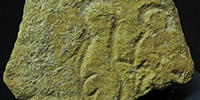 The engraving of the two venus figures at Terme-Pialat is so deep as to constitute bas-relief. It is believed to be from the Aurignacian. Terme-Pialat is near Combe-Capelle in the valley of the Couze, in the Dordogne region of France.
The engraving of the two venus figures at Terme-Pialat is so deep as to constitute bas-relief. It is believed to be from the Aurignacian. Terme-Pialat is near Combe-Capelle in the valley of the Couze, in the Dordogne region of France. 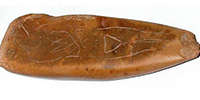 The Venus of Tolentino is a figure carved with a chisel on thin chert, height about 13 cm. The drawing depicts a woman with zoomorphic features. It has legs, breasts, and a geometric vulva, but the body is surmounted by a cow's head (or a herbivorous animal, bovid or equid). The Venus de Tolentino has been dated to a period between 5 000 and 12 000 years ago, between the Pleistocene and Neolithic, when agriculture developed in Europe. The stone on which the Venus is carved was probably used as a tool striker, or to crush seeds. Both ends are chipped from use.
The Venus of Tolentino is a figure carved with a chisel on thin chert, height about 13 cm. The drawing depicts a woman with zoomorphic features. It has legs, breasts, and a geometric vulva, but the body is surmounted by a cow's head (or a herbivorous animal, bovid or equid). The Venus de Tolentino has been dated to a period between 5 000 and 12 000 years ago, between the Pleistocene and Neolithic, when agriculture developed in Europe. The stone on which the Venus is carved was probably used as a tool striker, or to crush seeds. Both ends are chipped from use. 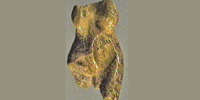 Le Torse - this Gravettian venus figurine was found during the 1896 excavations by Édouard Piette and J. de Laporterie at Grottes du Pape, Brassempouy. It was found in the upper part of the figurines layer, 4 or 5 cm above a fireplace. Dimensions: 94 mm high, 51.5 mm wide, 48 mm thick
Le Torse - this Gravettian venus figurine was found during the 1896 excavations by Édouard Piette and J. de Laporterie at Grottes du Pape, Brassempouy. It was found in the upper part of the figurines layer, 4 or 5 cm above a fireplace. Dimensions: 94 mm high, 51.5 mm wide, 48 mm thick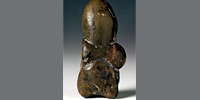 The Trasimeno Venus is a venus figure from the Paleolithic, found in Italy. It is about 3.7 inches high and carved in soapstone. It was found during excavations at Lago Trasimeno and is on display at the Museo Nazionale preistorico Etnografico Luigi Pigorini in Rome.
The Trasimeno Venus is a venus figure from the Paleolithic, found in Italy. It is about 3.7 inches high and carved in soapstone. It was found during excavations at Lago Trasimeno and is on display at the Museo Nazionale preistorico Etnografico Luigi Pigorini in Rome.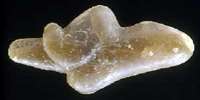 Tursac Venus - The Venus of Tursac is a calcite figure from 25 000 years BP. It was discovered on 5th August 1959 by M. Henri Delporte at Tursac, a village in the Perigord, near Sarlat, in the summer of 1959 at 'l'Abri du Facteur'. It is a treasure, a figurine made from a block of translucent calcite measuring 8 cm high and weighing 57.4 grams. While it lacks a head, arms and breasts it is still a very rare and important find.
Tursac Venus - The Venus of Tursac is a calcite figure from 25 000 years BP. It was discovered on 5th August 1959 by M. Henri Delporte at Tursac, a village in the Perigord, near Sarlat, in the summer of 1959 at 'l'Abri du Facteur'. It is a treasure, a figurine made from a block of translucent calcite measuring 8 cm high and weighing 57.4 grams. While it lacks a head, arms and breasts it is still a very rare and important find.
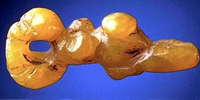 The Woman with Two Heads, or Bicéphale, one of the Grimaldi Venuses, has a body made up of a narrow torso, no arms, projecting breasts and belly, and legs that taper to a point at the knees. The breasts are pointed, extremely large, projected forward, and extend laterally beyond the edge of the torso. Unlike the right breast, the left breast has two grooves circling it and a hole pecked in the tip, presumably representing a nipple. It has a flat back with a faint groove indicating the spine, a narrow waist, and wide hips. The centre of the abdomen is protruding and almost perfectly round and has a small navel in the centre. The large and circular buttocks are marked by a crease at the top and there is a pit carved at the approximate position of the anus. The very large pubic area contains a vulva that is indicated by a vertical groove.
The Woman with Two Heads, or Bicéphale, one of the Grimaldi Venuses, has a body made up of a narrow torso, no arms, projecting breasts and belly, and legs that taper to a point at the knees. The breasts are pointed, extremely large, projected forward, and extend laterally beyond the edge of the torso. Unlike the right breast, the left breast has two grooves circling it and a hole pecked in the tip, presumably representing a nipple. It has a flat back with a faint groove indicating the spine, a narrow waist, and wide hips. The centre of the abdomen is protruding and almost perfectly round and has a small navel in the centre. The large and circular buttocks are marked by a crease at the top and there is a pit carved at the approximate position of the anus. The very large pubic area contains a vulva that is indicated by a vertical groove.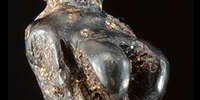 The Undescribed Venus of Balzi Rossi is of opaque green soapstone. The oval head and the torso are of normal form and proportions, but the facial features are sketchy, with just sockets for eyes and the outline of a nose. The neck is well formed, the breasts, highly elongated from top to bottom, are separated from each other and the rest of the chest by very deep incisions. The material has changed in nature, and in part has converted to iron hydroxide, while maintaining the fibrous appearance of the original rock. The lower part is broken, we can not know if the statue was in a semi-sitting or standing position, or what was the form of the legs. The surface of the piece is less polished than others in the series, and is also much encrusted with iron concretions.
The Undescribed Venus of Balzi Rossi is of opaque green soapstone. The oval head and the torso are of normal form and proportions, but the facial features are sketchy, with just sockets for eyes and the outline of a nose. The neck is well formed, the breasts, highly elongated from top to bottom, are separated from each other and the rest of the chest by very deep incisions. The material has changed in nature, and in part has converted to iron hydroxide, while maintaining the fibrous appearance of the original rock. The lower part is broken, we can not know if the statue was in a semi-sitting or standing position, or what was the form of the legs. The surface of the piece is less polished than others in the series, and is also much encrusted with iron concretions.
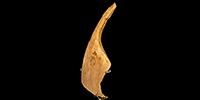 The Vogelherd Venus is one of the Lalinde - Gönnersdorf venus figurines, made of a boar's tooth, and was found at the 2008 re-excavation of the materials from the Riek excavation of 1931 in front of the Vogelherdhöhle cave. It is of Magdalenian age, from circa 13 000 BP.
The Vogelherd Venus is one of the Lalinde - Gönnersdorf venus figurines, made of a boar's tooth, and was found at the 2008 re-excavation of the materials from the Riek excavation of 1931 in front of the Vogelherdhöhle cave. It is of Magdalenian age, from circa 13 000 BP.
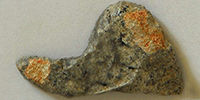 Female figurines in the style of Lalinde/Gönnersdorf from Wilczyce are unusual in that many are knapped from flint. Located on the Sandomierz plateau in southern Poland, the Wilczyce site was discovered in 1994 during a prospecting campaign carried out by the Polish Academy of Sciences. The site is located on a slope dominating the valley of the river Opatówka, and uniquely, the venus figures are all in 'ice wedges' deposits, which occur in areas subjected to permafrost.
Female figurines in the style of Lalinde/Gönnersdorf from Wilczyce are unusual in that many are knapped from flint. Located on the Sandomierz plateau in southern Poland, the Wilczyce site was discovered in 1994 during a prospecting campaign carried out by the Polish Academy of Sciences. The site is located on a slope dominating the valley of the river Opatówka, and uniquely, the venus figures are all in 'ice wedges' deposits, which occur in areas subjected to permafrost. The Zaraysk Venus is not voluptuous, which puts it with the 'thin' Kostenki - Avdeevo venuses, but in this case there is one difference, that the legs are not placed together, which is also the case for the Willendorf venus. This testifies to the uniqueness of the Zaraysk site, which has features of both the Kostenki and Avdeevo cultures. Zaraysk or Zaraisk or Зарайск is an important Paleolithic site from the Ice Age in Russia, and is the northernmost example of the Kostenki - Avdeevo culture.
The Zaraysk Venus is not voluptuous, which puts it with the 'thin' Kostenki - Avdeevo venuses, but in this case there is one difference, that the legs are not placed together, which is also the case for the Willendorf venus. This testifies to the uniqueness of the Zaraysk site, which has features of both the Kostenki and Avdeevo cultures. Zaraysk or Zaraisk or Зарайск is an important Paleolithic site from the Ice Age in Russia, and is the northernmost example of the Kostenki - Avdeevo culture. 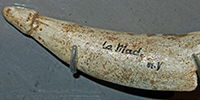 The phallus is represented in stone age art, although it is not as common a theme for sculpture and engraving as the vulva. This is a summary of some of the important discoveries.
The phallus is represented in stone age art, although it is not as common a theme for sculpture and engraving as the vulva. This is a summary of some of the important discoveries. 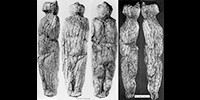 The male venus figurine from Avdeevo was found at the bottom of a pit with accompanying flint blades, adzes and other artefacts. Almost all the outer surface of the figurine, except for some small fragments, is intact. All lines represent a well-developed musculature of the back, chest and legs, not softened by fatty deposits. Though the sexual characteristics are not defined, the general posture, somewhat different from the bent female figurines, the unusual arrangement of the arms, and the way in which the pubic area is shown, all suggest that this is a male image.
The male venus figurine from Avdeevo was found at the bottom of a pit with accompanying flint blades, adzes and other artefacts. Almost all the outer surface of the figurine, except for some small fragments, is intact. All lines represent a well-developed musculature of the back, chest and legs, not softened by fatty deposits. Though the sexual characteristics are not defined, the general posture, somewhat different from the bent female figurines, the unusual arrangement of the arms, and the way in which the pubic area is shown, all suggest that this is a male image.
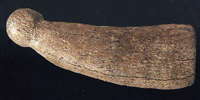 A carving of a phallus and an engraving of one on stone from Abri Blanchard, Castel-Merle, also known as Vallon des Roches located near the town of Sergeac on the Vézère River between Lascaux and the shelter of Moustier, near Les Eyzies-de-Tayac
A carving of a phallus and an engraving of one on stone from Abri Blanchard, Castel-Merle, also known as Vallon des Roches located near the town of Sergeac on the Vézère River between Lascaux and the shelter of Moustier, near Les Eyzies-de-Tayac 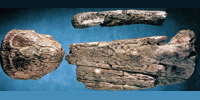 The head, torso and left arm are all that survives of the male ivory statuette found in an upper Palaeolithic (Pavlovian) burial at Brno near Dolni Vestonice. There is a correctly proportioned stump of a penis at the base of the torso. Around 26 000 years BP.
The head, torso and left arm are all that survives of the male ivory statuette found in an upper Palaeolithic (Pavlovian) burial at Brno near Dolni Vestonice. There is a correctly proportioned stump of a penis at the base of the torso. Around 26 000 years BP. 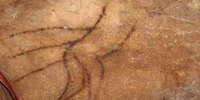 There are two images of men pierced with spears in the Grottes de Cougnac caves near Gourdon, Lot. The site consists of two caves separated by 200 metres. The first contains many concretions, some very fine, called soda straws. The second is a decorated cave from the Paleolithic. The cave has many prehistoric paintings dated to the upper Paleolithic. Depictions include deer, megaceros, the ibex, and mammoths as well as various schematic human figures. The paintings corresponded to at least two clearly distinct phases: one around 25 000 BP, the other about 14 000 years before the present.
There are two images of men pierced with spears in the Grottes de Cougnac caves near Gourdon, Lot. The site consists of two caves separated by 200 metres. The first contains many concretions, some very fine, called soda straws. The second is a decorated cave from the Paleolithic. The cave has many prehistoric paintings dated to the upper Paleolithic. Depictions include deer, megaceros, the ibex, and mammoths as well as various schematic human figures. The paintings corresponded to at least two clearly distinct phases: one around 25 000 BP, the other about 14 000 years before the present.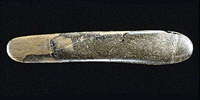 A sculpted and polished phallus found in a German cave is among the earliest representations of male sexuality ever uncovered. The 20cm-long, 3cm-wide stone object, which is dated to be about 28 000 years old, was buried in the famous Hohle Fels Cave near Ulm in the Swabian Jura. The prehistoric 'tool' was reassembled from 14 fragments of siltstone. Its life size suggests it may well have been used as a sex aid by its Ice Age makers, scientists report.
A sculpted and polished phallus found in a German cave is among the earliest representations of male sexuality ever uncovered. The 20cm-long, 3cm-wide stone object, which is dated to be about 28 000 years old, was buried in the famous Hohle Fels Cave near Ulm in the Swabian Jura. The prehistoric 'tool' was reassembled from 14 fragments of siltstone. Its life size suggests it may well have been used as a sex aid by its Ice Age makers, scientists report. 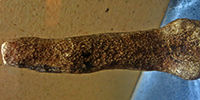
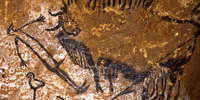 The dead man with a bird's head. This is one of the most studied and argued about paintings in Lascaux. It is in what is known as the Well, or the Shaft, and is reached by climbing down a ladder from the Apse. The main scene includes a disembowelled bison, a man with a bird's head who appears to have been felled by the bison, a spear, and a bird on a pole. Was the man a shaman with a bird as totem? Did the painter believe that dead people became birds? We shall never know.
The dead man with a bird's head. This is one of the most studied and argued about paintings in Lascaux. It is in what is known as the Well, or the Shaft, and is reached by climbing down a ladder from the Apse. The main scene includes a disembowelled bison, a man with a bird's head who appears to have been felled by the bison, a spear, and a bird on a pole. Was the man a shaman with a bird as totem? Did the painter believe that dead people became birds? We shall never know. 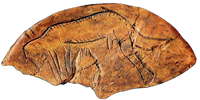 Man confronts a bear, Mas d'Azil. This is a stunning work. It consisted originally of a disk, with an engraving on each side. On one side of the disk, we have a human male with an erect penis confronting a bear, with a heavy stick over his shoulder, and on the other side, a man being struck down by a bear. He appears to be shown lying face down, and uniquely, there is no other palaeolithic representation of a man in such a position. If the disc is tipped upside down on this face, a horse may be seen. An ornately carved ivory phallus has also been found at Mas d'Azil.
Man confronts a bear, Mas d'Azil. This is a stunning work. It consisted originally of a disk, with an engraving on each side. On one side of the disk, we have a human male with an erect penis confronting a bear, with a heavy stick over his shoulder, and on the other side, a man being struck down by a bear. He appears to be shown lying face down, and uniquely, there is no other palaeolithic representation of a man in such a position. If the disc is tipped upside down on this face, a horse may be seen. An ornately carved ivory phallus has also been found at Mas d'Azil.
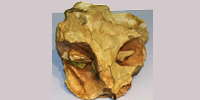 The mask of Roche-Cotard is a flint object with a striking likeness to a human face. It may be one of the best examples of art by Neanderthal man ever found. The 'mask', which is dated to be about 35 000 years old, was recovered on the banks of the Loire in France. It is about 10 cm tall and wide and has a bone splinter rammed through a hole, making the rock look as if it has eyes. Commentators say the object shows the Neanderthals were more sophisticated than their caveman image suggests.
The mask of Roche-Cotard is a flint object with a striking likeness to a human face. It may be one of the best examples of art by Neanderthal man ever found. The 'mask', which is dated to be about 35 000 years old, was recovered on the banks of the Loire in France. It is about 10 cm tall and wide and has a bone splinter rammed through a hole, making the rock look as if it has eyes. Commentators say the object shows the Neanderthals were more sophisticated than their caveman image suggests.
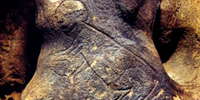 Grotte du Sorcier - representation of a human with an erect phallus, located on the roof in the deepest part of the cave. The man has a narrow thorax, distended abdomen, extended upper limbs, and the head is round. The engraving is on limestone, the surface of the rock is affected by falling flakes primarily in the ventral part. There is also a head with a bestial face, turned to the right, as well as the head of a man. The top of the skull is high, with no indication of hair, the forehead is high and convex. The nose is heavy and convex and continues with a meandering line indicating the nostril and an open mouth. The ear is formed by two lines of which one extends to the thin neck. The eye is shaped with an elliptical shape, with an extension to the left.
Grotte du Sorcier - representation of a human with an erect phallus, located on the roof in the deepest part of the cave. The man has a narrow thorax, distended abdomen, extended upper limbs, and the head is round. The engraving is on limestone, the surface of the rock is affected by falling flakes primarily in the ventral part. There is also a head with a bestial face, turned to the right, as well as the head of a man. The top of the skull is high, with no indication of hair, the forehead is high and convex. The nose is heavy and convex and continues with a meandering line indicating the nostril and an open mouth. The ear is formed by two lines of which one extends to the thin neck. The eye is shaped with an elliptical shape, with an extension to the left.

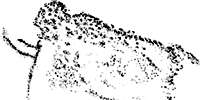
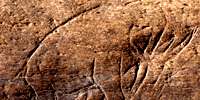 A bone fragment, approximately 13 000 years old, at Vero, Florida with an incised image of a mammoth or mastodon has been announced. This engraving is the oldest known example of Ice Age art to depict a proboscidean (the order of animals with trunks) in the Americas. The bone was discovered in Vero Beach, Florida by James Kennedy, an avocational fossil hunter, who collected the bone and later while cleaning the bone, discovered the engraving.
A bone fragment, approximately 13 000 years old, at Vero, Florida with an incised image of a mammoth or mastodon has been announced. This engraving is the oldest known example of Ice Age art to depict a proboscidean (the order of animals with trunks) in the Americas. The bone was discovered in Vero Beach, Florida by James Kennedy, an avocational fossil hunter, who collected the bone and later while cleaning the bone, discovered the engraving. 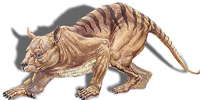 Although most scientists with knowledge of the field think that the Australian megafauna, animals such as the giant kangaroo, the swamp cow and the diprotodon, were hunted to death by the first humans to migrate to Australia, perhaps 50 000 years ago. However some scientists still disagree, and put forward the hypothesis that climate change was to blame. However a crucial question must be asked: if people did hunt megafauna to extinction, how much evidence of killing should we now be able to get from archaeological sites? A new paper by archaeologists Todd Surovell and Brigid Grund, Surovell et al. (2012), suggests the answer to that question is 'very little or none'.
Although most scientists with knowledge of the field think that the Australian megafauna, animals such as the giant kangaroo, the swamp cow and the diprotodon, were hunted to death by the first humans to migrate to Australia, perhaps 50 000 years ago. However some scientists still disagree, and put forward the hypothesis that climate change was to blame. However a crucial question must be asked: if people did hunt megafauna to extinction, how much evidence of killing should we now be able to get from archaeological sites? A new paper by archaeologists Todd Surovell and Brigid Grund, Surovell et al. (2012), suggests the answer to that question is 'very little or none'. Coming originally from Africa, the mastodons invaded Europe and Asia 18 million years ago. They made their way to North America via the Bering Bridge 10 million years ago and finally reached South America two million years ago, after the isthmus of Panama was formed roughly three million years ago, an event that made the recent ice ages possible. The development of the tusks and of the trunk reflects the evolution of the mastodons during the Miocene, which lasted from 23 million years ago to 5 million years BP.
Coming originally from Africa, the mastodons invaded Europe and Asia 18 million years ago. They made their way to North America via the Bering Bridge 10 million years ago and finally reached South America two million years ago, after the isthmus of Panama was formed roughly three million years ago, an event that made the recent ice ages possible. The development of the tusks and of the trunk reflects the evolution of the mastodons during the Miocene, which lasted from 23 million years ago to 5 million years BP.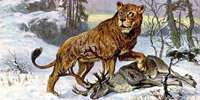 The cave lion is known from Paleolithic cave paintings, ivory carvings, and clay figurines. These representations indicate that cave lions had rounded, protruding ears, tufted tails, possibly faint tiger-like stripes, and that at least some had a ruff or primitive mane around their neck, indicating males. The cave lion received its common name because large quantities of its remains are found in caves, but it is doubtful whether they lived in them. They probably preferred conifer forests and grasslands, where medium-sized to large herbivores occurred.
The cave lion is known from Paleolithic cave paintings, ivory carvings, and clay figurines. These representations indicate that cave lions had rounded, protruding ears, tufted tails, possibly faint tiger-like stripes, and that at least some had a ruff or primitive mane around their neck, indicating males. The cave lion received its common name because large quantities of its remains are found in caves, but it is doubtful whether they lived in them. They probably preferred conifer forests and grasslands, where medium-sized to large herbivores occurred. 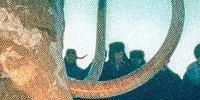
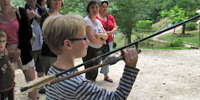
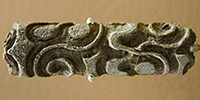 Baguettes demi-rondes are a two-part composite projectile point technology usually manufactured from antler. This method of point construction allowed the Magdalenian toolmaker to construct a projectile point of much larger proportions, with high stiffness and strength, than the physical constraints imposed by the raw material usually allowed.
Baguettes demi-rondes are a two-part composite projectile point technology usually manufactured from antler. This method of point construction allowed the Magdalenian toolmaker to construct a projectile point of much larger proportions, with high stiffness and strength, than the physical constraints imposed by the raw material usually allowed. 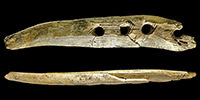 Bâtons Percés - A key discovery by Conard’s team in Hohle Fels Cave in southwestern Germany is rewriting the history of rope. The find is a carefully carved and beautifully preserved piece of mammoth ivory 20.4 cm in length with four holes between 7 and 9 mm in diameter. Each of the holes is lined with deep, and precisely cut spiral incisions. The new find demonstrates that these elaborate carvings are technological features of rope-making equipment rather than just decoration.
Bâtons Percés - A key discovery by Conard’s team in Hohle Fels Cave in southwestern Germany is rewriting the history of rope. The find is a carefully carved and beautifully preserved piece of mammoth ivory 20.4 cm in length with four holes between 7 and 9 mm in diameter. Each of the holes is lined with deep, and precisely cut spiral incisions. The new find demonstrates that these elaborate carvings are technological features of rope-making equipment rather than just decoration.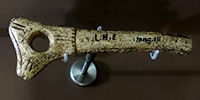 Bâtons Percés - Identified as early as 1866, the pierced baton has produced no less than 37 hypotheses regarding its use. Among the most often expressed uses was that of a spear head straightener, in combination with heat from a fire. On some of the artefacts traces of use, sometimes two by two, evoke the twisting of a cord through the hole. This page includes material from an important paper on the subject by Rigaud.
Bâtons Percés - Identified as early as 1866, the pierced baton has produced no less than 37 hypotheses regarding its use. Among the most often expressed uses was that of a spear head straightener, in combination with heat from a fire. On some of the artefacts traces of use, sometimes two by two, evoke the twisting of a cord through the hole. This page includes material from an important paper on the subject by Rigaud.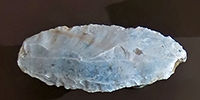 Cassegros tools - La grotte de Cassegros, has on its walls cave paintings that depict animals; paintings that reflect the prehistoric occupation of the site near the town of Trentels. It is an ideal shelter for prehistoric people because of its location. It is located on the south of a limestone hill overlooking the Lot valley, above a now dried up river. It is divided into several parts: an entrance hall, a gallery, a large room and a small chamber known as the petite salle du puits. Cave paintings have been discovered there.
Cassegros tools - La grotte de Cassegros, has on its walls cave paintings that depict animals; paintings that reflect the prehistoric occupation of the site near the town of Trentels. It is an ideal shelter for prehistoric people because of its location. It is located on the south of a limestone hill overlooking the Lot valley, above a now dried up river. It is divided into several parts: an entrance hall, a gallery, a large room and a small chamber known as the petite salle du puits. Cave paintings have been discovered there.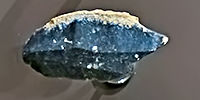 Casserole tools - l'abri Casserole is a little known Gravettian, Solutrean and early Magdalenian shelter near Les Eyzies.
Casserole tools - l'abri Casserole is a little known Gravettian, Solutrean and early Magdalenian shelter near Les Eyzies. 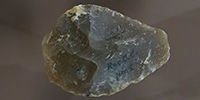 Combe-Capelle is a Mousterian / Neanderthal site situated in the Couze valley in the Périgord region of Southern France. This is a record of the tools found there by Ami and Peyrony, recorded and catalogued by Peyrony after the death of Ami, and on display at Le Musée National de Préhistoire, Les Eyzies-de-Tayac.
Combe-Capelle is a Mousterian / Neanderthal site situated in the Couze valley in the Périgord region of Southern France. This is a record of the tools found there by Ami and Peyrony, recorded and catalogued by Peyrony after the death of Ami, and on display at Le Musée National de Préhistoire, Les Eyzies-de-Tayac. 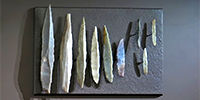
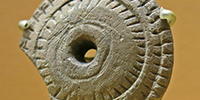 There are many examples of discs or rondelles with central holes from various (mostly Magdalenian) sites in Europe. Various theories have been put forward as to their use, including clothing decoration and large buttons. As my colleague AnnDee first pointed out, their most likely use is as the weight (normally called a whorl) for a drop spindle, in the spinning of fibres into yarn. This is borne out by the fact that the overwhelming majority have a central hole, all of similar dimensions, 2 to 4 mm, and by the fact that many are not decorated in any meaningful or artistic way, and are also made of other materials (sandstone, slate) as well as bone.
There are many examples of discs or rondelles with central holes from various (mostly Magdalenian) sites in Europe. Various theories have been put forward as to their use, including clothing decoration and large buttons. As my colleague AnnDee first pointed out, their most likely use is as the weight (normally called a whorl) for a drop spindle, in the spinning of fibres into yarn. This is borne out by the fact that the overwhelming majority have a central hole, all of similar dimensions, 2 to 4 mm, and by the fact that many are not decorated in any meaningful or artistic way, and are also made of other materials (sandstone, slate) as well as bone. 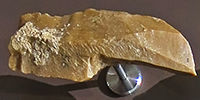 La Faurélie tools - On the left bank of the Manaurie valley, l'abri de La Faurélie II, is a few hundred metres downstream from the Aurignacian and Perigordian deposit of La Faurélie I, and ten kilometres from Les Eyzies. Discovered in 1958 by M. Lhommond, first explored by D. de Sonneville-Bordes, F. Bordes and M. Delthel, it was then meticulously excavated from 1964 to 1972 by J. Tixier.
La Faurélie tools - On the left bank of the Manaurie valley, l'abri de La Faurélie II, is a few hundred metres downstream from the Aurignacian and Perigordian deposit of La Faurélie I, and ten kilometres from Les Eyzies. Discovered in 1958 by M. Lhommond, first explored by D. de Sonneville-Bordes, F. Bordes and M. Delthel, it was then meticulously excavated from 1964 to 1972 by J. Tixier.
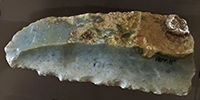 La Ferrassie rock shelter yielded skeletons from eight Neanderthal individuals, including adults, children, infants, and two fetuses. Today the skeleton of La Ferrassie 1 is considered the classic example of Neanderthal anatomy. It was discovered on 17th September 1909 by R. Capitan and D. Peyrony. This is a record of the tools found there by Peyrony, and on display at Le Musée National de Préhistoire, Les Eyzies-de-Tayac.
La Ferrassie rock shelter yielded skeletons from eight Neanderthal individuals, including adults, children, infants, and two fetuses. Today the skeleton of La Ferrassie 1 is considered the classic example of Neanderthal anatomy. It was discovered on 17th September 1909 by R. Capitan and D. Peyrony. This is a record of the tools found there by Peyrony, and on display at Le Musée National de Préhistoire, Les Eyzies-de-Tayac.
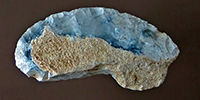 Tools from Le Flageolet I - Le Flageolet I is a small, stratified rockshelter in the Dordogne valley of southwestern France, near the town of Bezenac. The site has important Upper Palaeolithic Aurignacian and Perigordian occupations.
Tools from Le Flageolet I - Le Flageolet I is a small, stratified rockshelter in the Dordogne valley of southwestern France, near the town of Bezenac. The site has important Upper Palaeolithic Aurignacian and Perigordian occupations.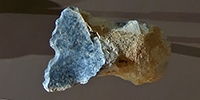 Combe Grenal is an archeological site consisting of a collapsed cave and a slope deposit near Domme, Dordogne, France. It dates from ca 175 000 to ca 50 000 BP. The cave was first thoroughly excavated by François Bordes from 1953 to 1965. The site's stratigraphic sequence is 13 metres in depth and has at least 64 layers. 55 layers are Mousterian while the 9 layers near the bottom are Acheulean. The oldest layers date back to the end of the Riss glaciation and the youngest to the Würm glaciation. This is a record of the tools found there by Bordes, and on display at Le Musée National de Préhistoire, Les Eyzies-de-Tayac.
Combe Grenal is an archeological site consisting of a collapsed cave and a slope deposit near Domme, Dordogne, France. It dates from ca 175 000 to ca 50 000 BP. The cave was first thoroughly excavated by François Bordes from 1953 to 1965. The site's stratigraphic sequence is 13 metres in depth and has at least 64 layers. 55 layers are Mousterian while the 9 layers near the bottom are Acheulean. The oldest layers date back to the end of the Riss glaciation and the youngest to the Würm glaciation. This is a record of the tools found there by Bordes, and on display at Le Musée National de Préhistoire, Les Eyzies-de-Tayac.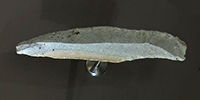
 Stone Lamps of the Palaeolithic - Lamp designs fall into three main categories: open-circuit lamps consist of largely unaltered slabs of rock. When the lamp is lit, melted fat runs off through natural crevices in the rock. Closed-circuit lamps have carved depressions to contain the runoff. Carved-handle, closed-circuit lamps also have bowls shaped fuel chambers but are more finely finished and have formed extensions for easier handling. Burn marks indicate that the wick was placed away from the handle. The Lamp of Lascaux - Le Brûloir de Lascaux is a superb example of a carved handle, closed circuit lamp.
Stone Lamps of the Palaeolithic - Lamp designs fall into three main categories: open-circuit lamps consist of largely unaltered slabs of rock. When the lamp is lit, melted fat runs off through natural crevices in the rock. Closed-circuit lamps have carved depressions to contain the runoff. Carved-handle, closed-circuit lamps also have bowls shaped fuel chambers but are more finely finished and have formed extensions for easier handling. Burn marks indicate that the wick was placed away from the handle. The Lamp of Lascaux - Le Brûloir de Lascaux is a superb example of a carved handle, closed circuit lamp. 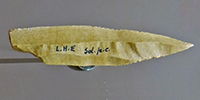 Laugerie Haute is a treasure house of tools from the late stone age. This is the pick of the collections of Peyrony and Bordes of the sites of Laugerie Haute East and West. It is of interest primarily to those specialising in Laugerie Haute and the lithic industry of the Vézère region.
Laugerie Haute is a treasure house of tools from the late stone age. This is the pick of the collections of Peyrony and Bordes of the sites of Laugerie Haute East and West. It is of interest primarily to those specialising in Laugerie Haute and the lithic industry of the Vézère region.  Micoque tools - La Micoque is a Neanderthal site in the Dordogne dating from circa 400 000 BP to 130 000 BP. This is a record of the tools found at La Micoque, and on display at Le Musée National de Préhistoire, Les Eyzies-de-Tayac.
Micoque tools - La Micoque is a Neanderthal site in the Dordogne dating from circa 400 000 BP to 130 000 BP. This is a record of the tools found at La Micoque, and on display at Le Musée National de Préhistoire, Les Eyzies-de-Tayac.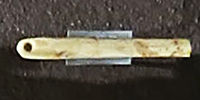 Moulin du Roc Tools - Despite the destruction of most of the filling, the Moulin du Roc site (St-Chamassy, Dordogne, France) has yielded valuable artefacts from the upper and late Magdalenian, as well as from the Sauveterrian and late Neolithic.
Moulin du Roc Tools - Despite the destruction of most of the filling, the Moulin du Roc site (St-Chamassy, Dordogne, France) has yielded valuable artefacts from the upper and late Magdalenian, as well as from the Sauveterrian and late Neolithic.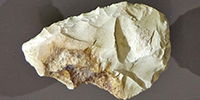 Le Moustier is the type site for the Mousterian suite of tools and artefacts, and is a Neanderthal site. This is the pick of the collections of tools there by Peyrony. It is of interest primarily to those specialising in le Moustier and the lithic industry of the Mousterian.
Le Moustier is the type site for the Mousterian suite of tools and artefacts, and is a Neanderthal site. This is the pick of the collections of tools there by Peyrony. It is of interest primarily to those specialising in le Moustier and the lithic industry of the Mousterian.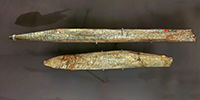 Tools from l'abri Pataud - The Abri Pataud rock shelter was occupied by the Cro Magnon man (Homo sapiens sapiens) for a period of 15 000 years, from 35 000 BP to 20 000 BP, which corresponds to the recent Wurm period, and the cultures of the Aurignacian, Gravettian and Solutrian. This is a record of the tools found at Abri Pataud by the US archaeologist Hallam L. Movius, and on display at Le Musée National de Préhistoire, Les Eyzies-de-Tayac.
Tools from l'abri Pataud - The Abri Pataud rock shelter was occupied by the Cro Magnon man (Homo sapiens sapiens) for a period of 15 000 years, from 35 000 BP to 20 000 BP, which corresponds to the recent Wurm period, and the cultures of the Aurignacian, Gravettian and Solutrian. This is a record of the tools found at Abri Pataud by the US archaeologist Hallam L. Movius, and on display at Le Musée National de Préhistoire, Les Eyzies-de-Tayac. 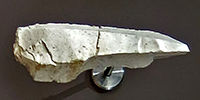 Peyrugues tools - the Les Peyrugues site is a rockshelter located in the Célé valley (Lot, France), and has deposits from the last 25 millennia.
Peyrugues tools - the Les Peyrugues site is a rockshelter located in the Célé valley (Lot, France), and has deposits from the last 25 millennia.
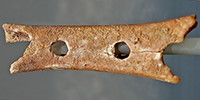 There have been many musical instruments found from the Palaeolithic, including from Neanderthals. This page shows some of them. Recently included is this Neanderthal flute on display at the Museum Ljubljana, photographed by Ralph Frenken.
There have been many musical instruments found from the Palaeolithic, including from Neanderthals. This page shows some of them. Recently included is this Neanderthal flute on display at the Museum Ljubljana, photographed by Ralph Frenken.
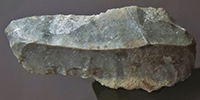 Roc de Combe was excavated by F. Bordes and J. Labrot in 1966 and 1967. Included in the stratigraphic sequence are the Mousterian , the Châtelperronian , the Aurignacian and the Gravettian. This is a record of the tools found there by Bordes, and on display at Le Musée National de Préhistoire, Les Eyzies-de-Tayac.
Roc de Combe was excavated by F. Bordes and J. Labrot in 1966 and 1967. Included in the stratigraphic sequence are the Mousterian , the Châtelperronian , the Aurignacian and the Gravettian. This is a record of the tools found there by Bordes, and on display at Le Musée National de Préhistoire, Les Eyzies-de-Tayac.
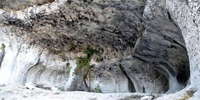 Amelana's Cave
Amelana's Cave 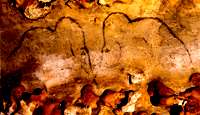 Mammoth Cave Chapter 14 Land of Painted Caves
Mammoth Cave Chapter 14 Land of Painted Caves